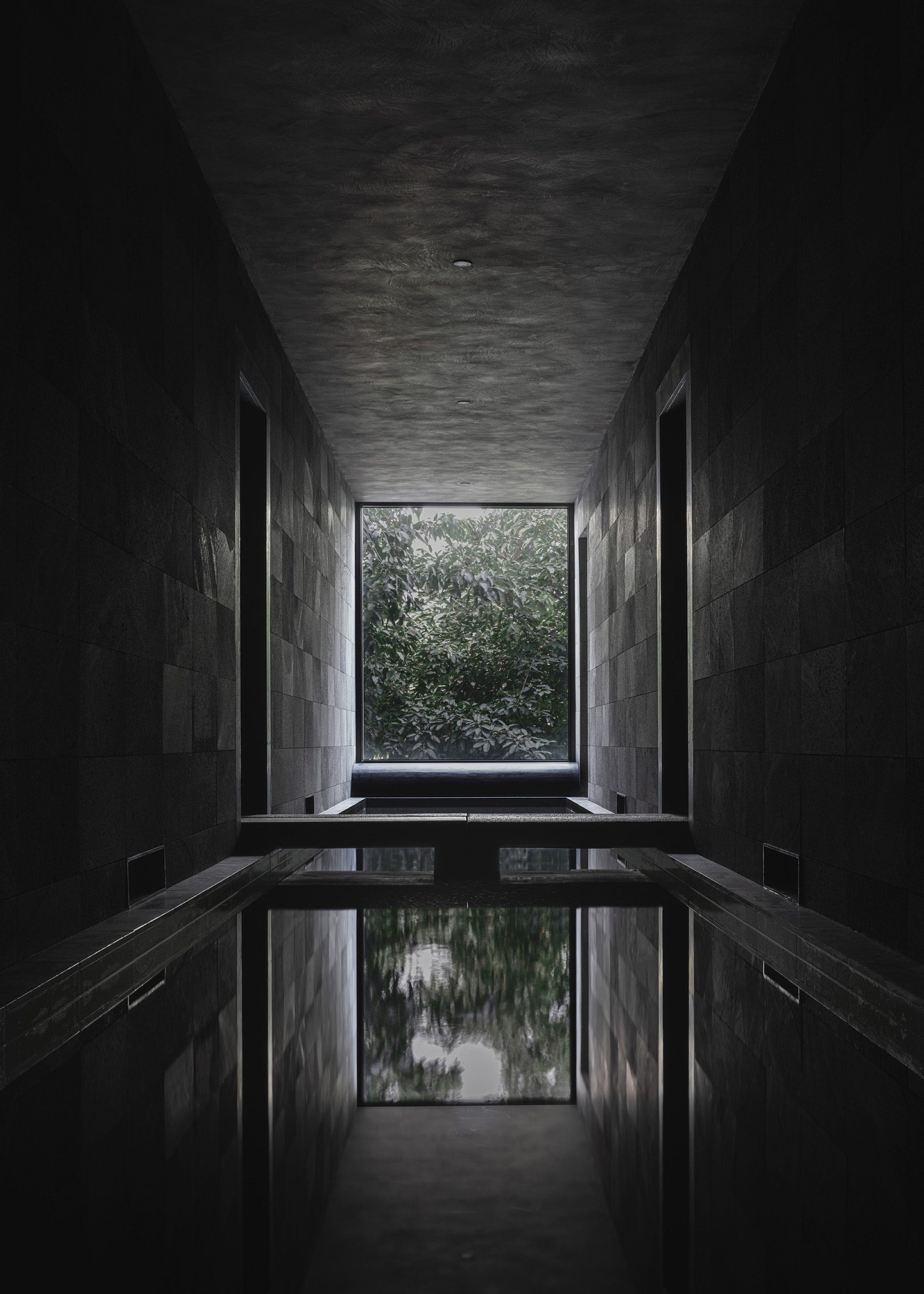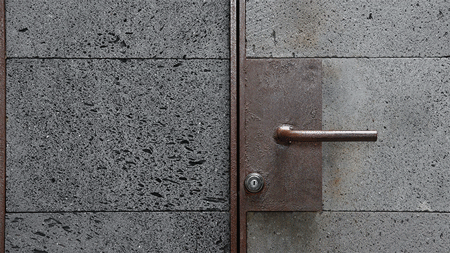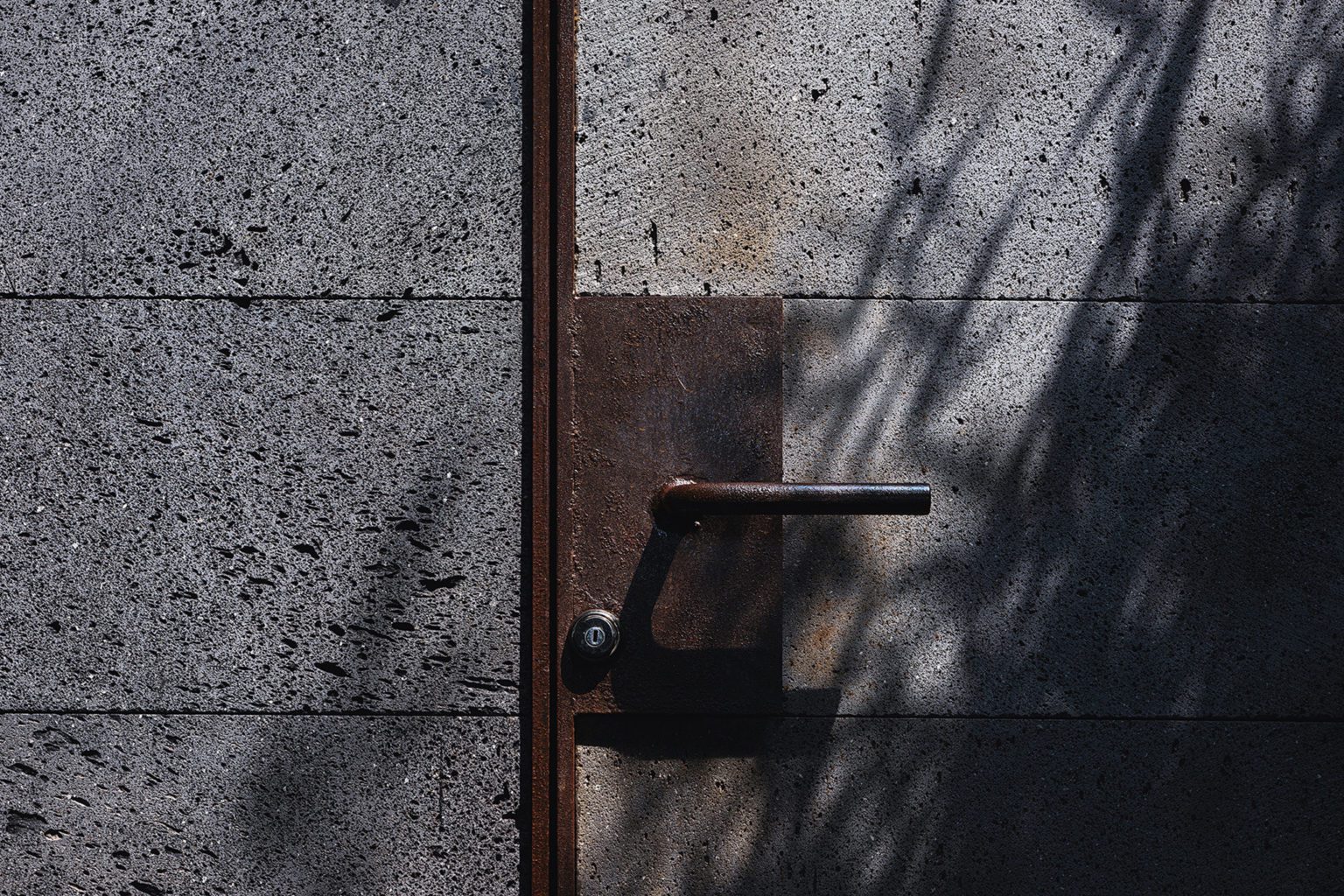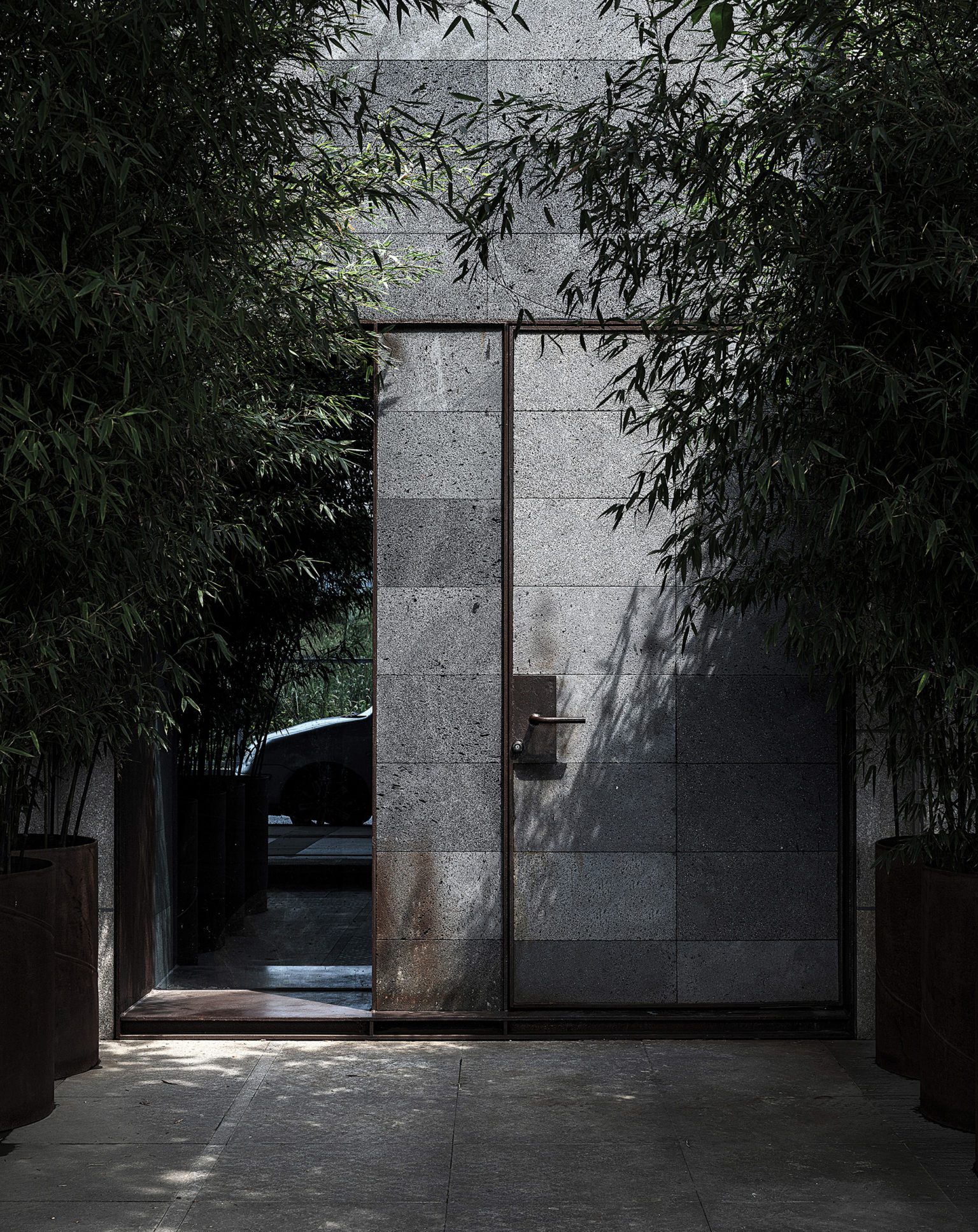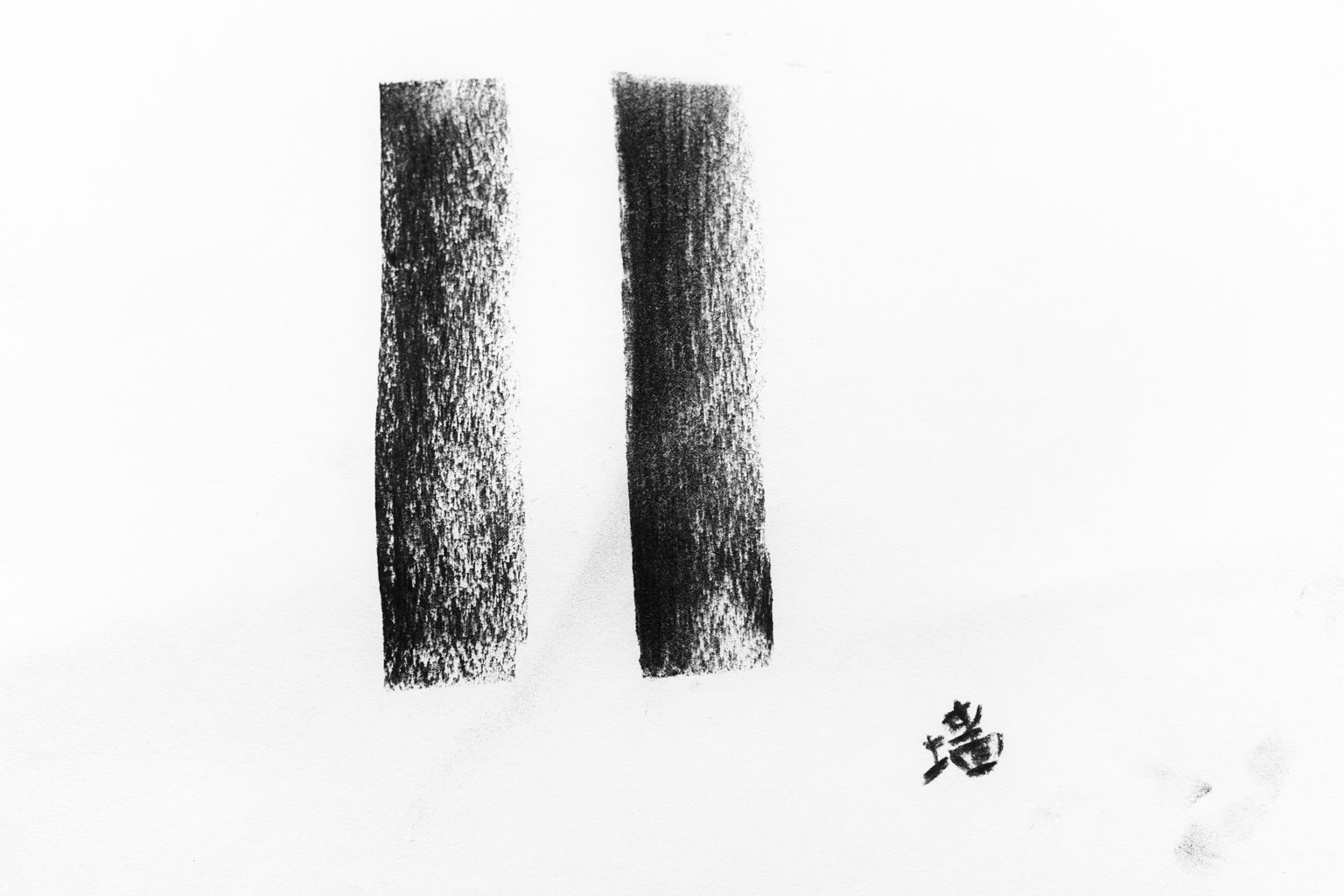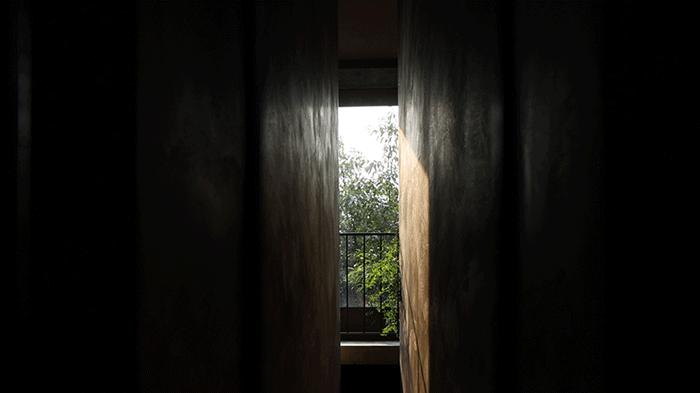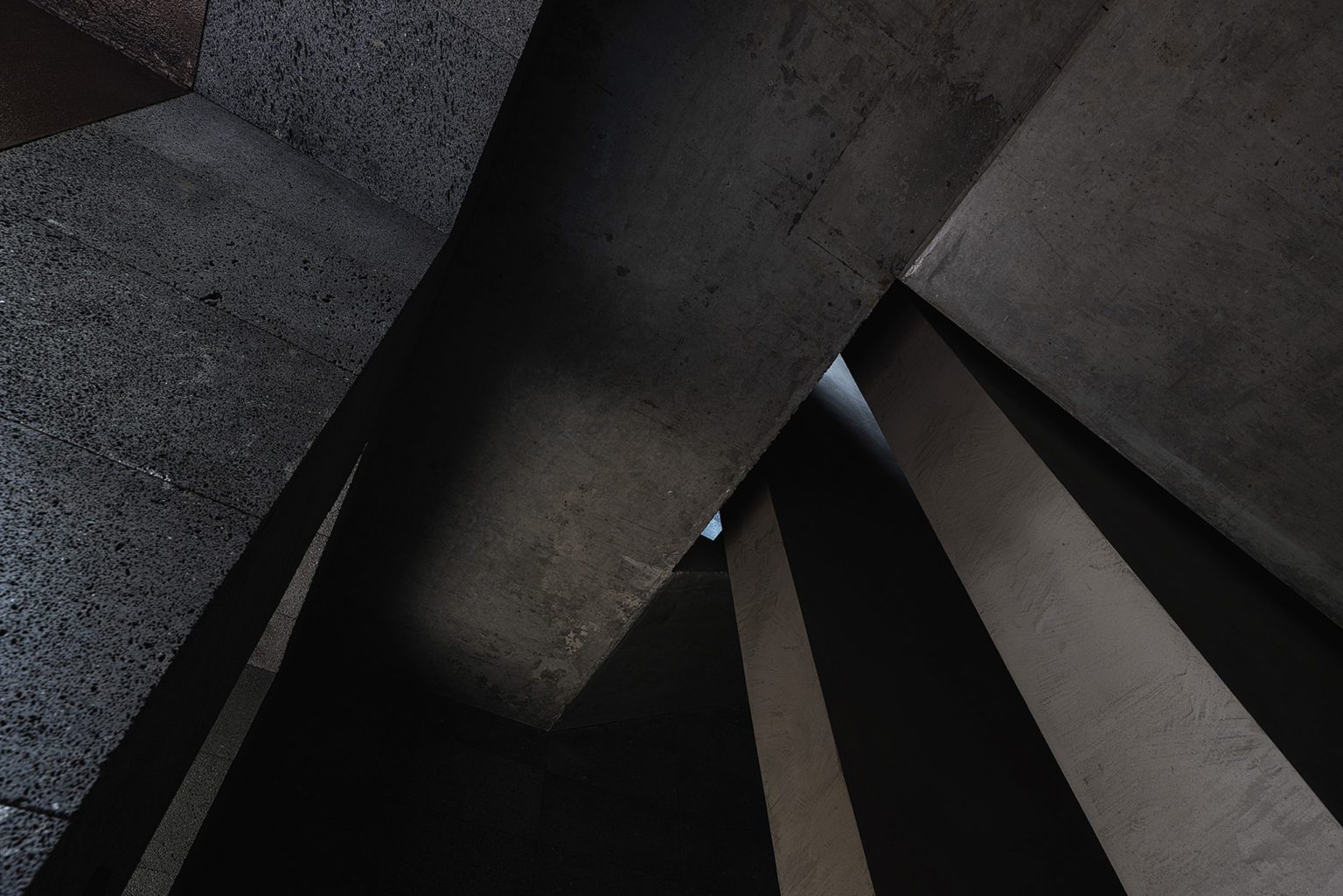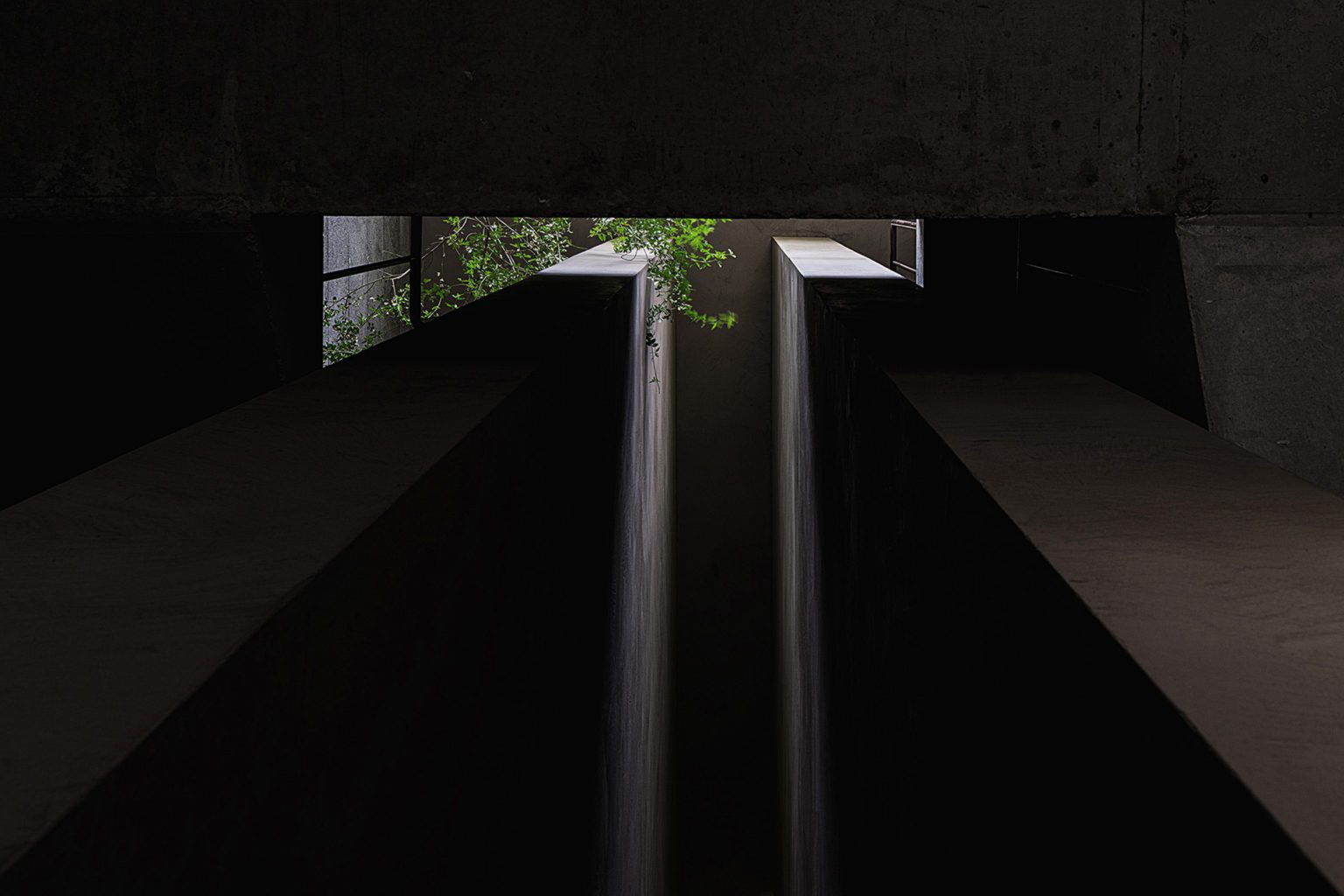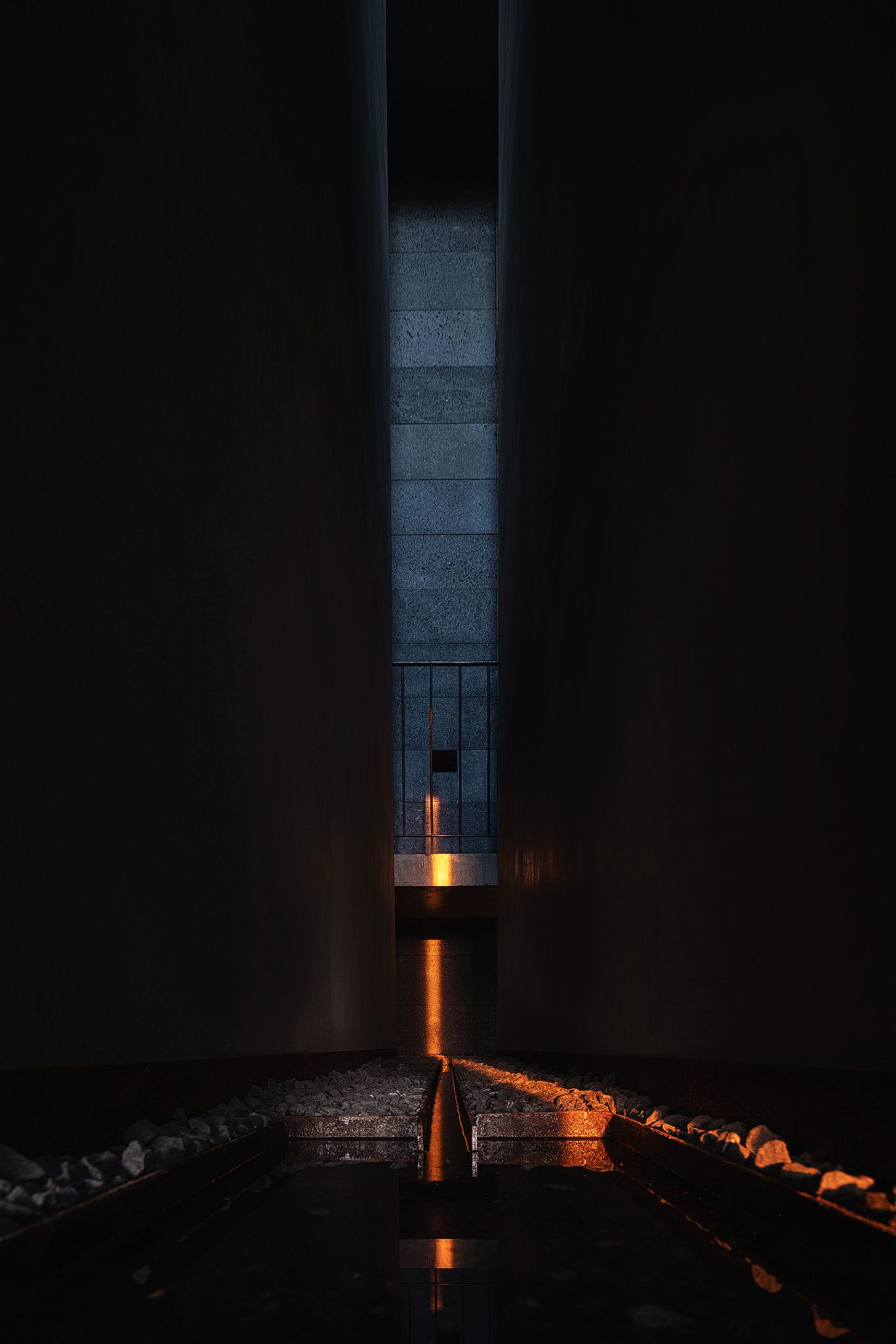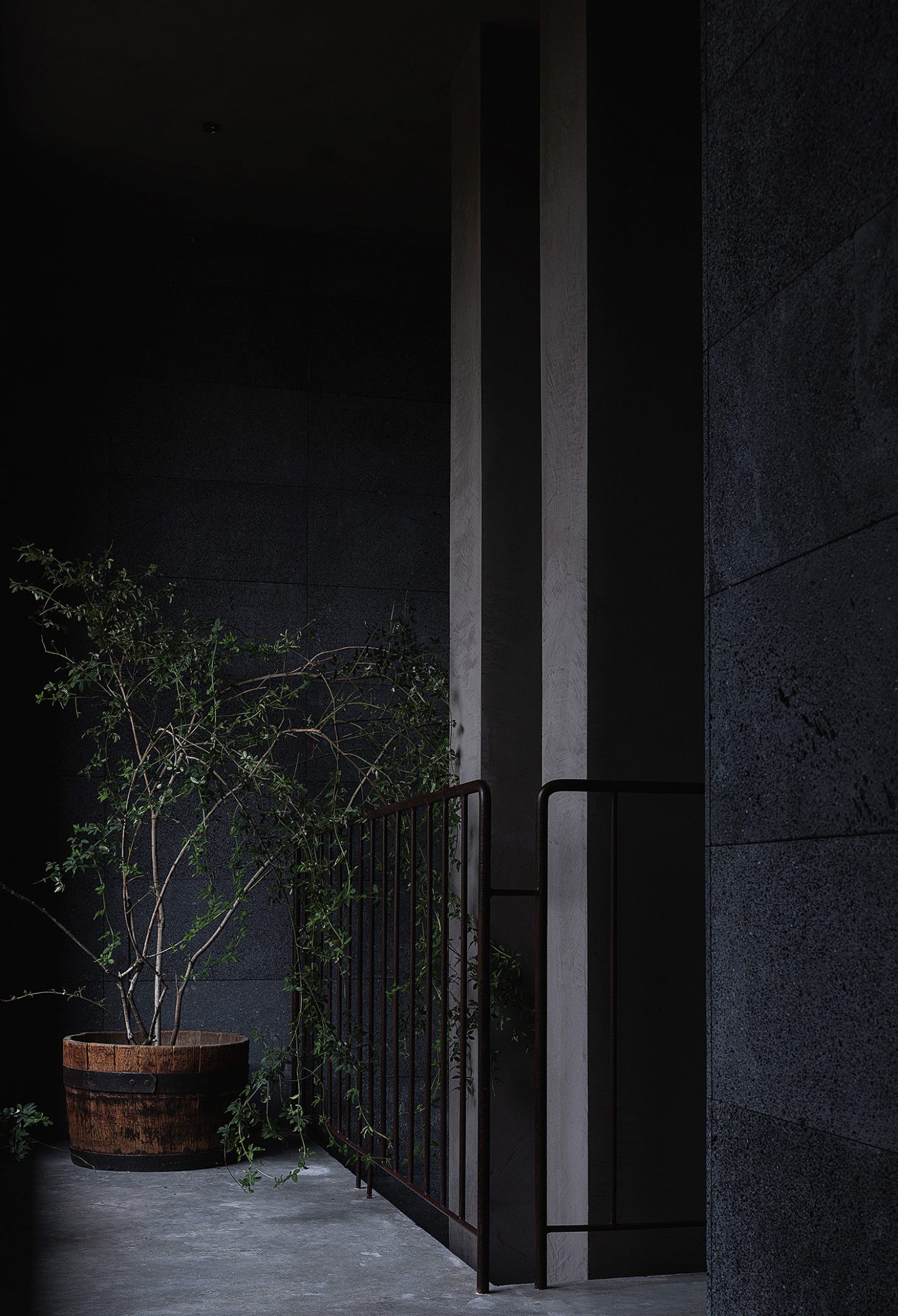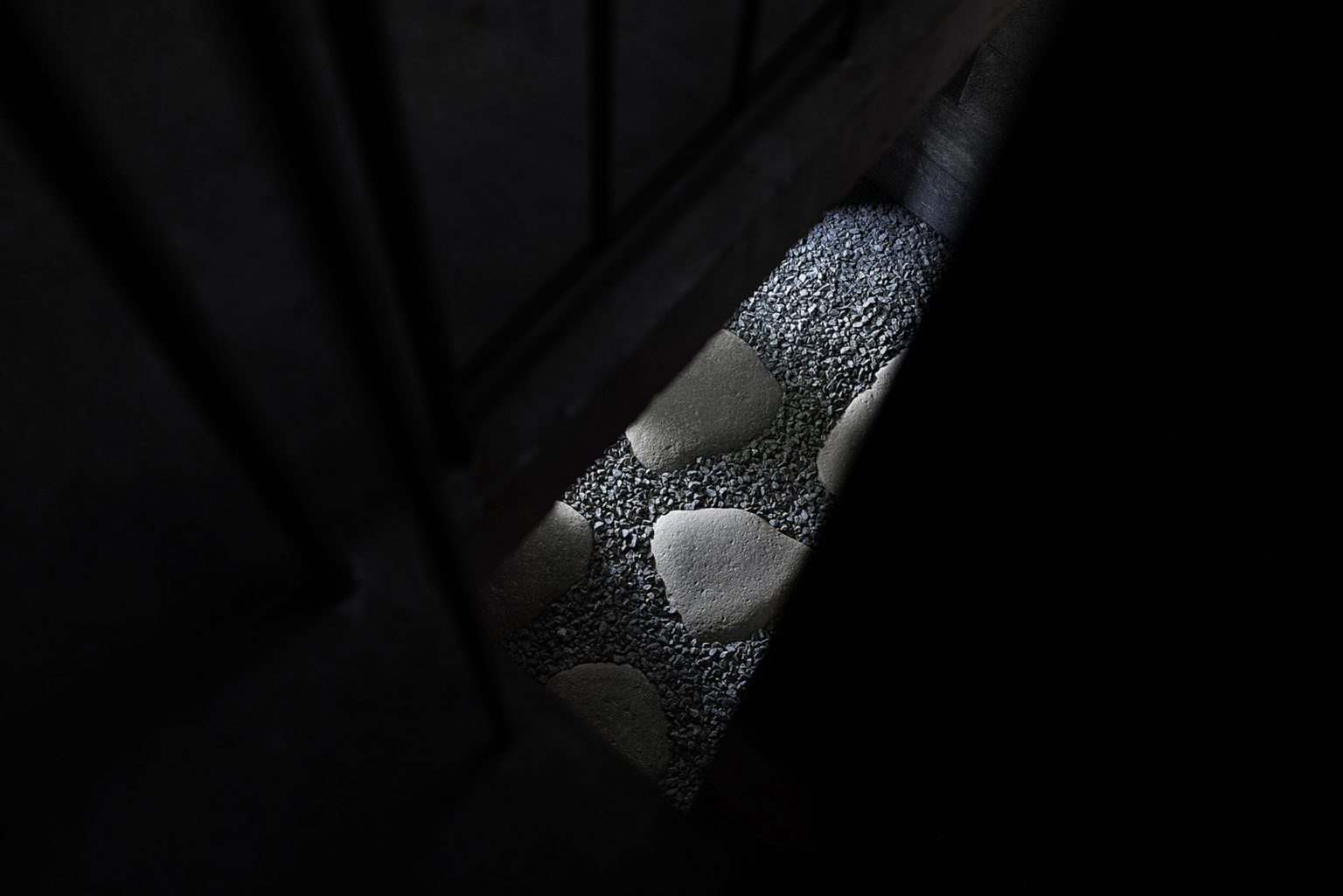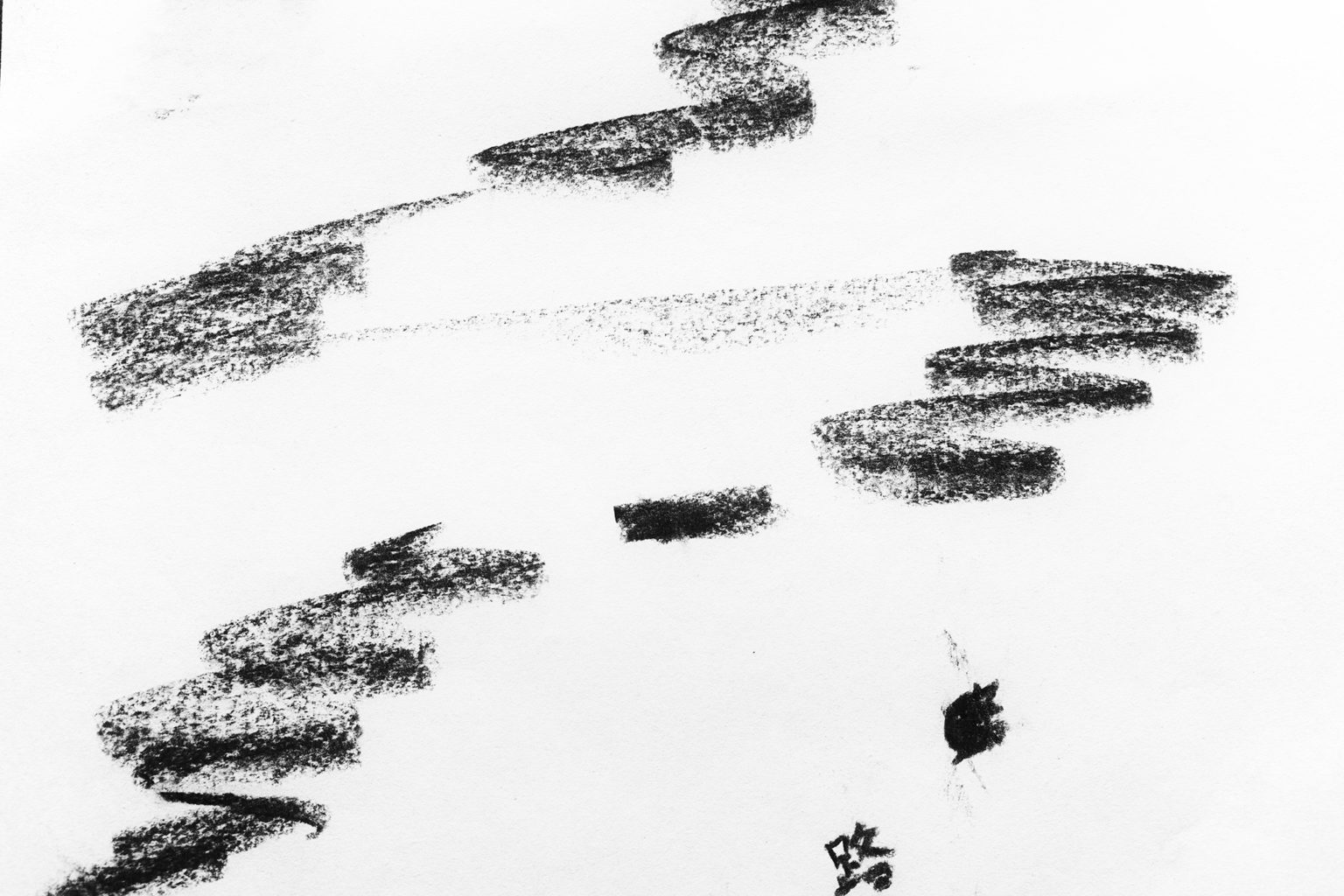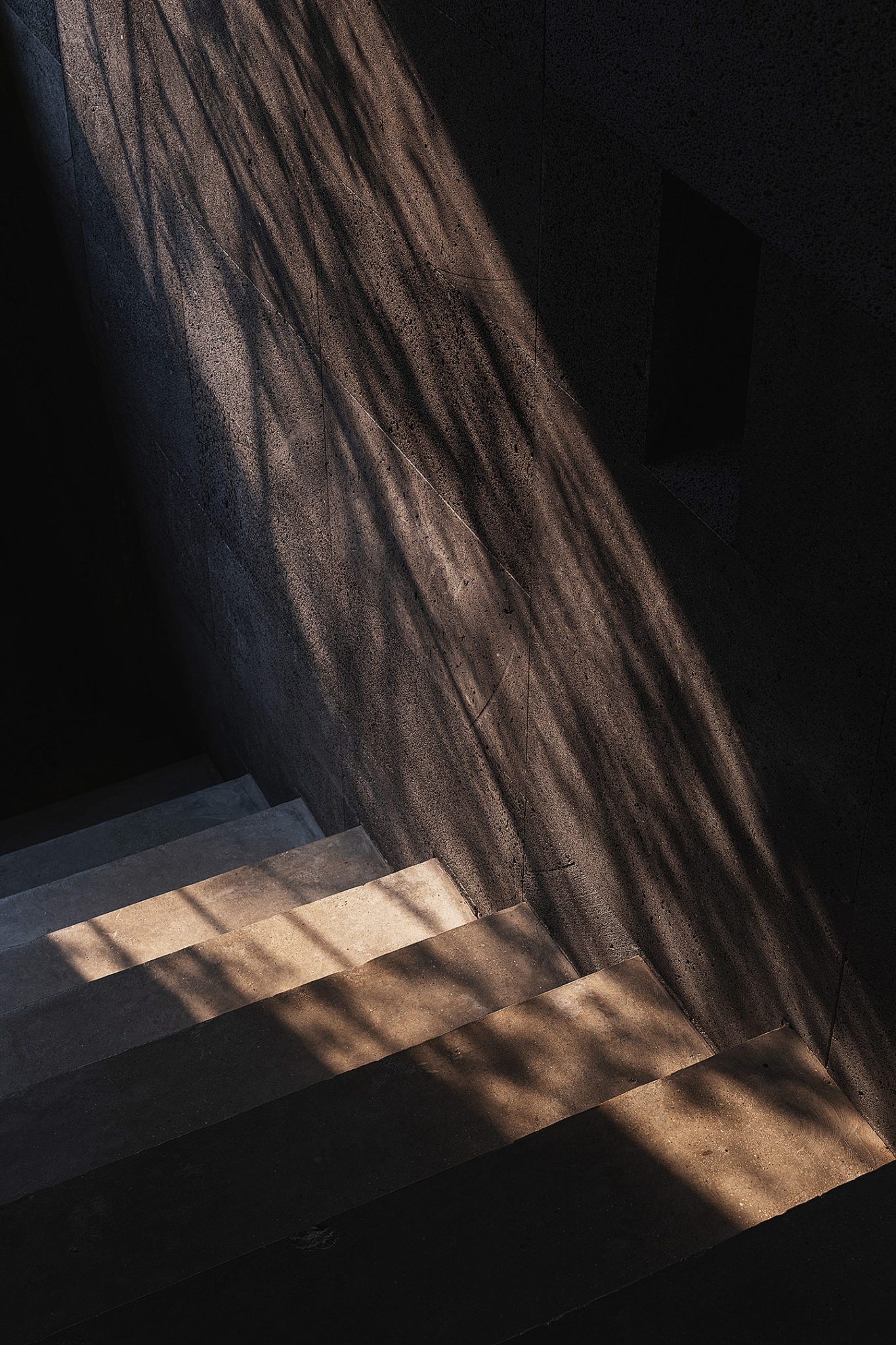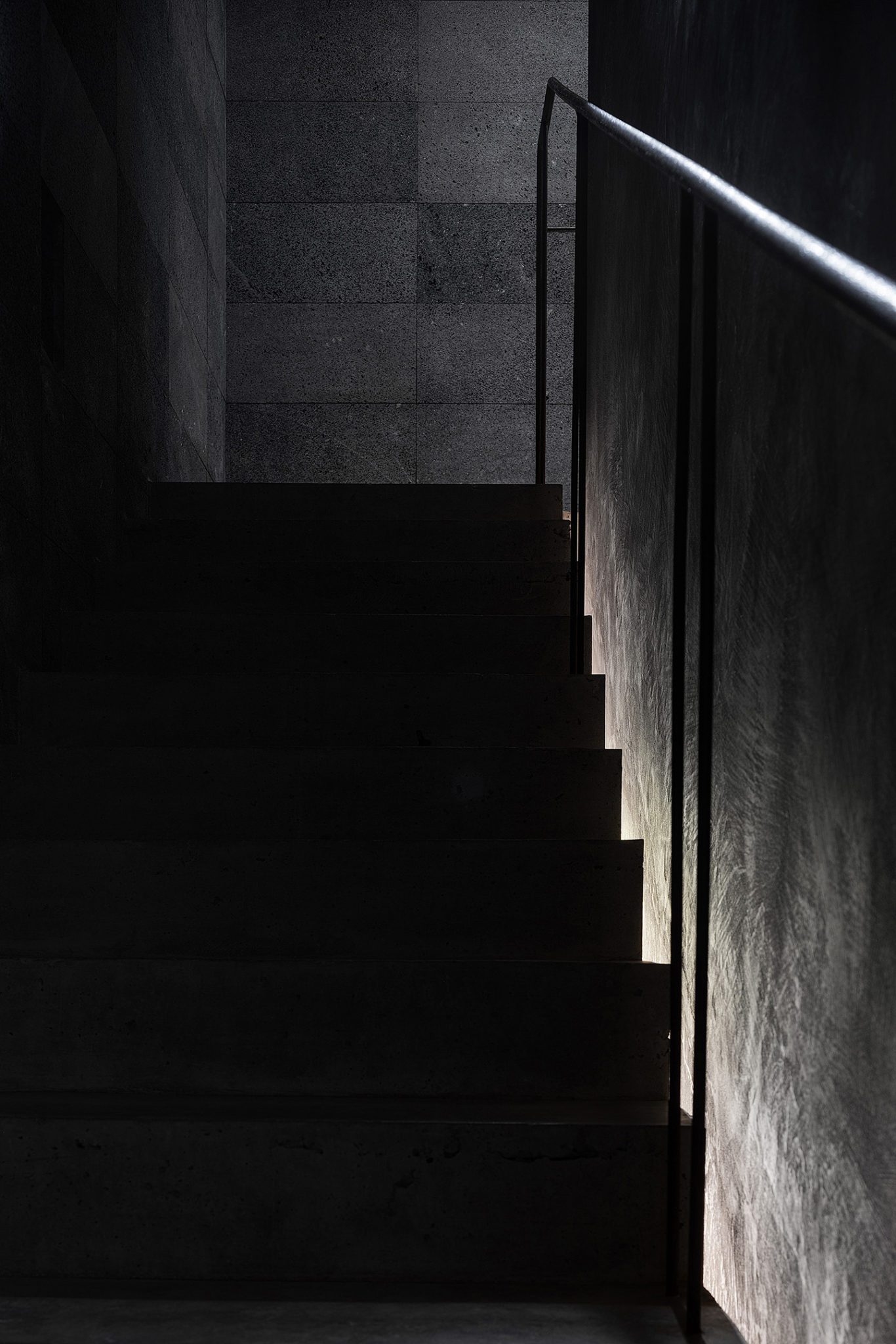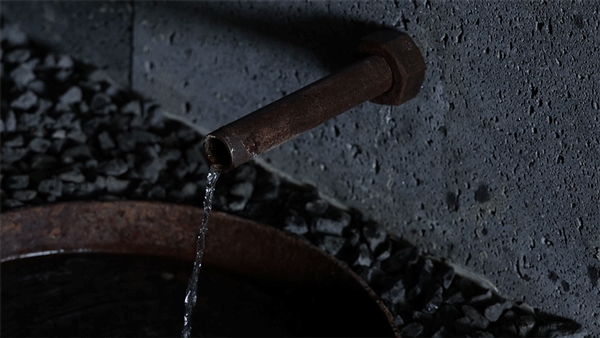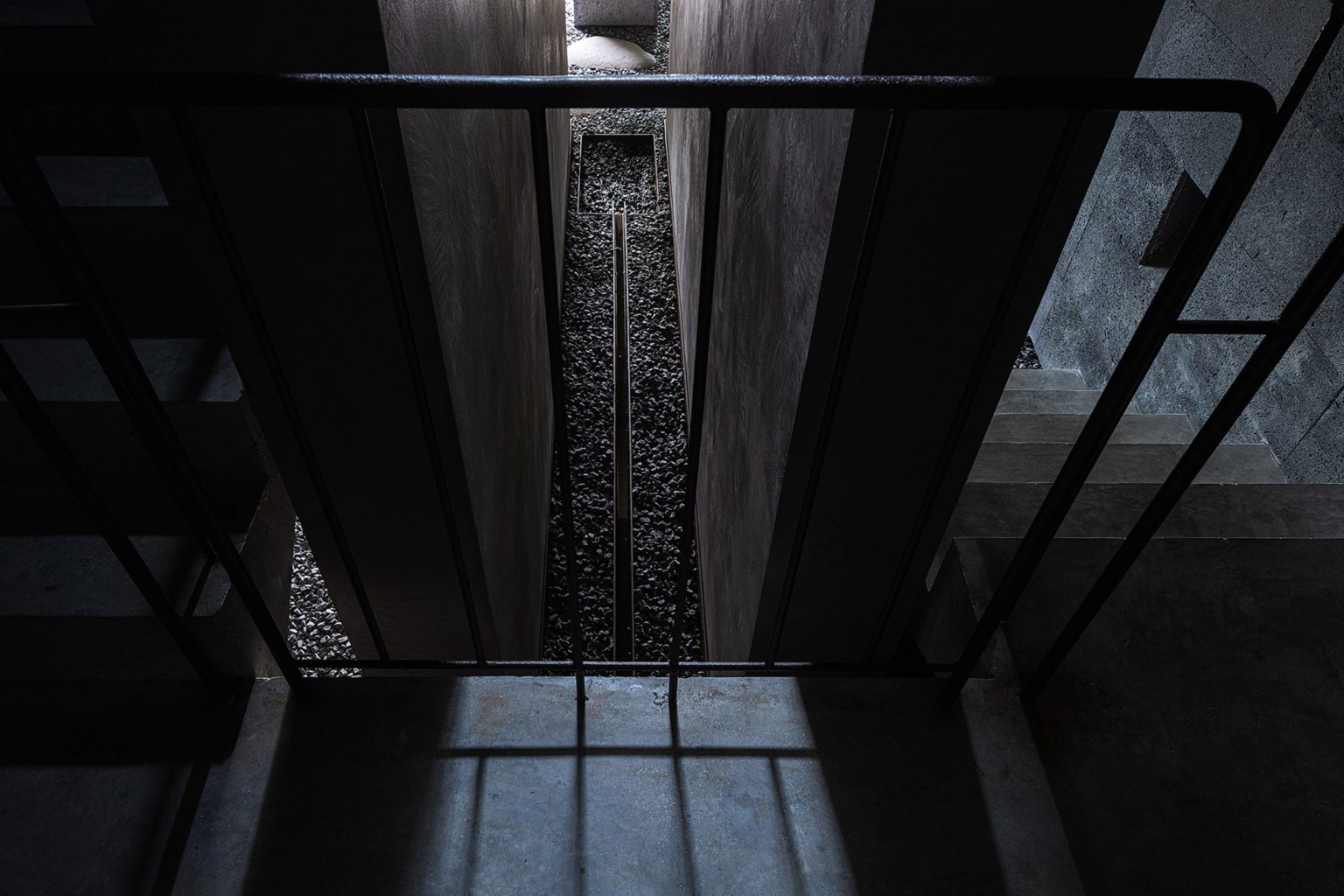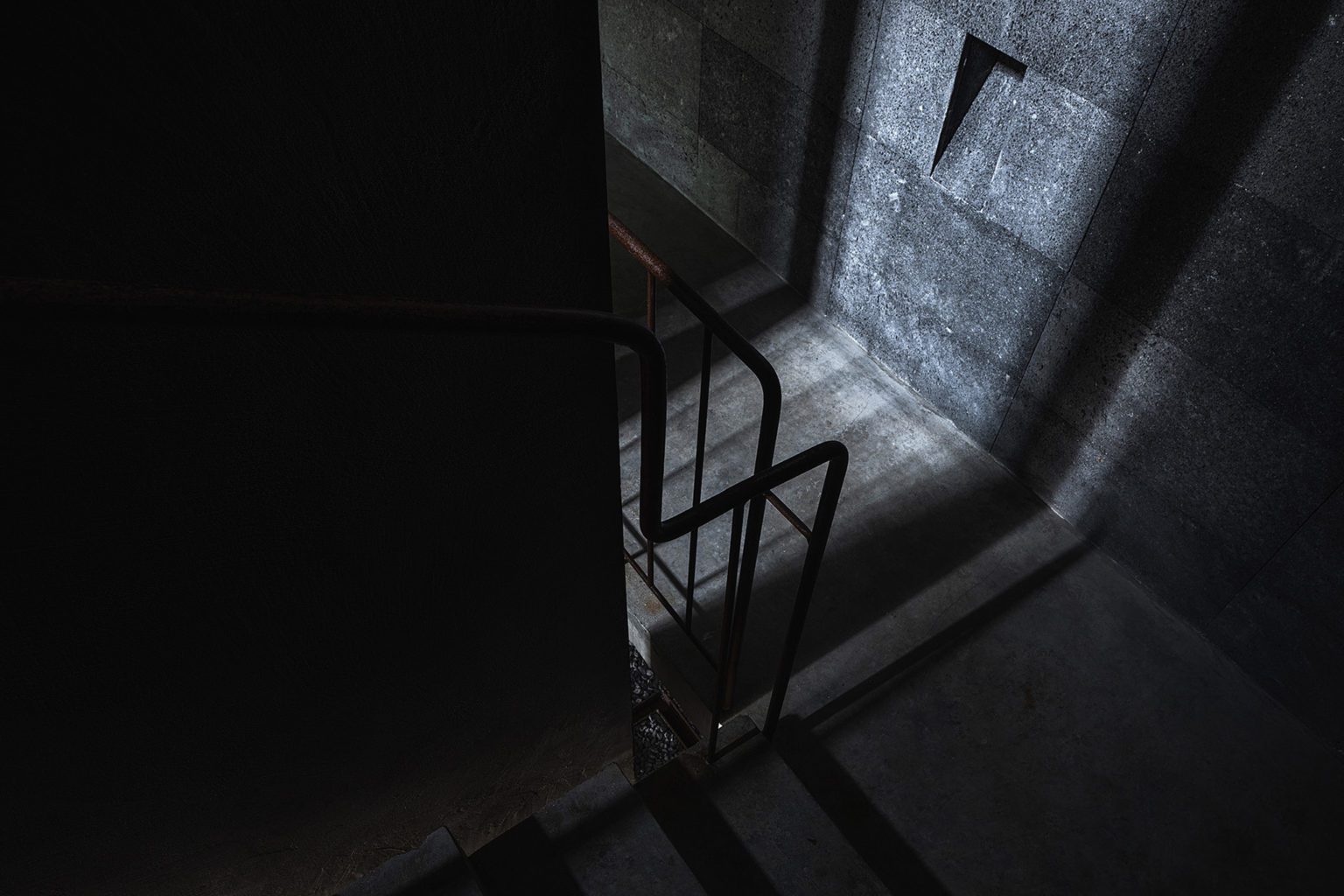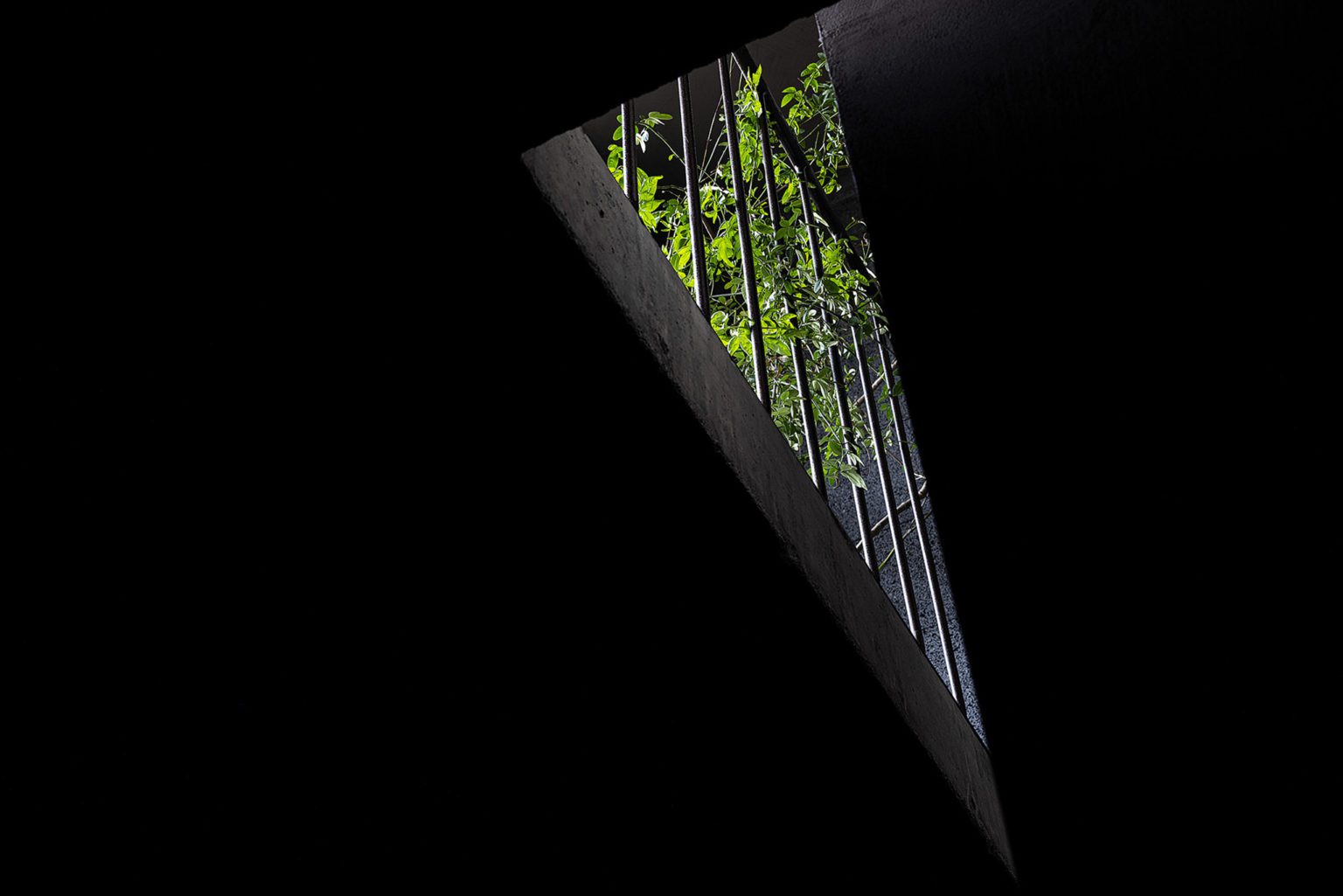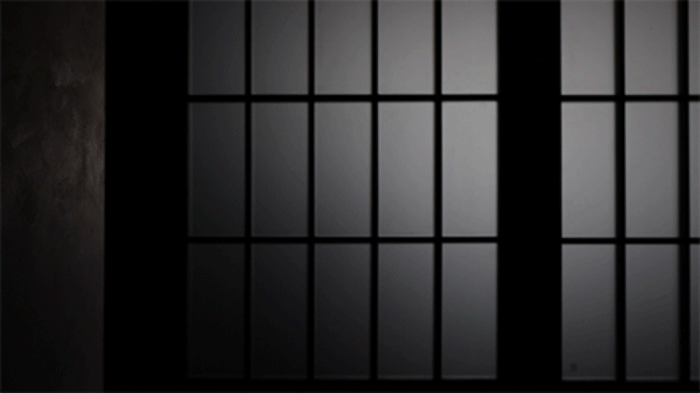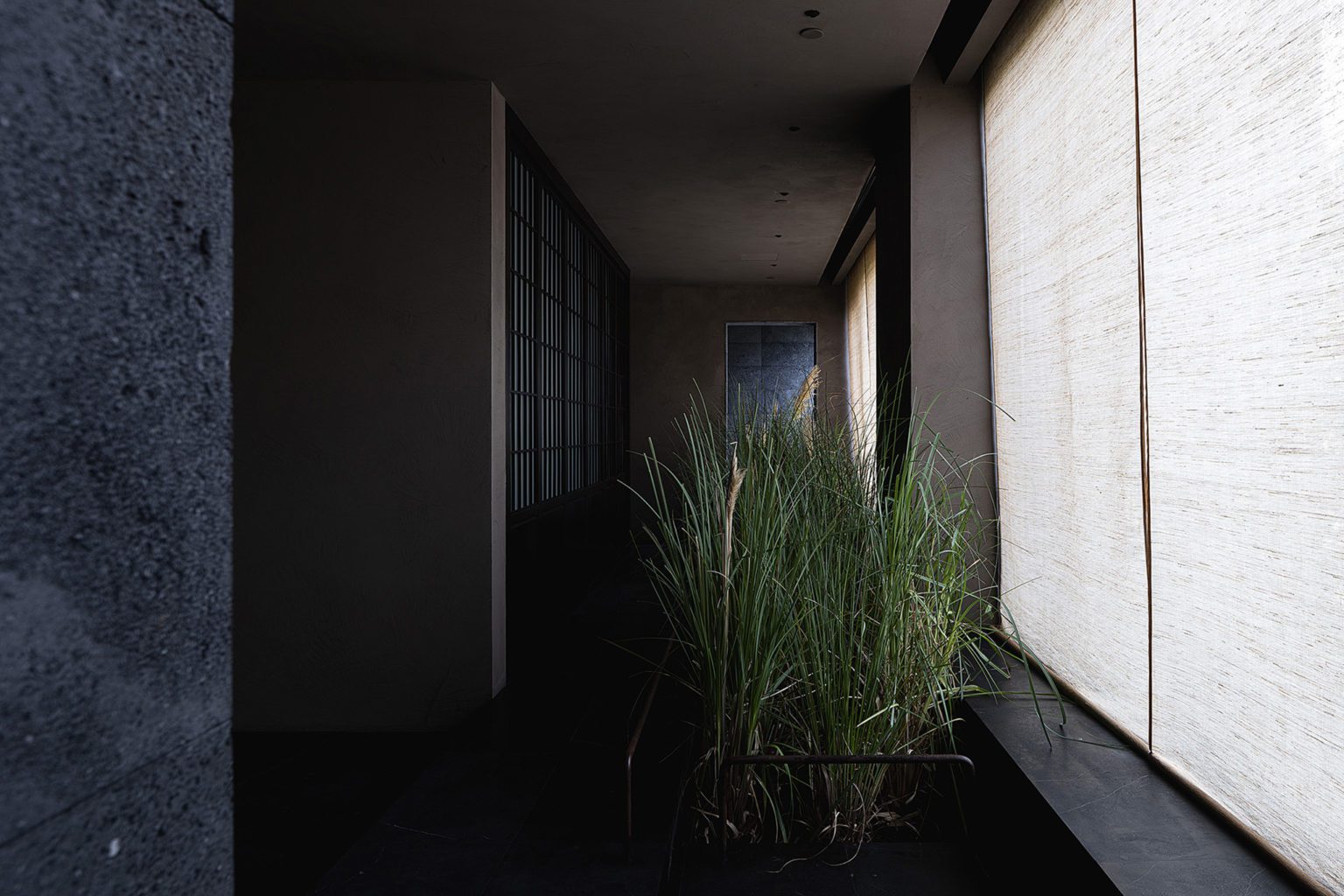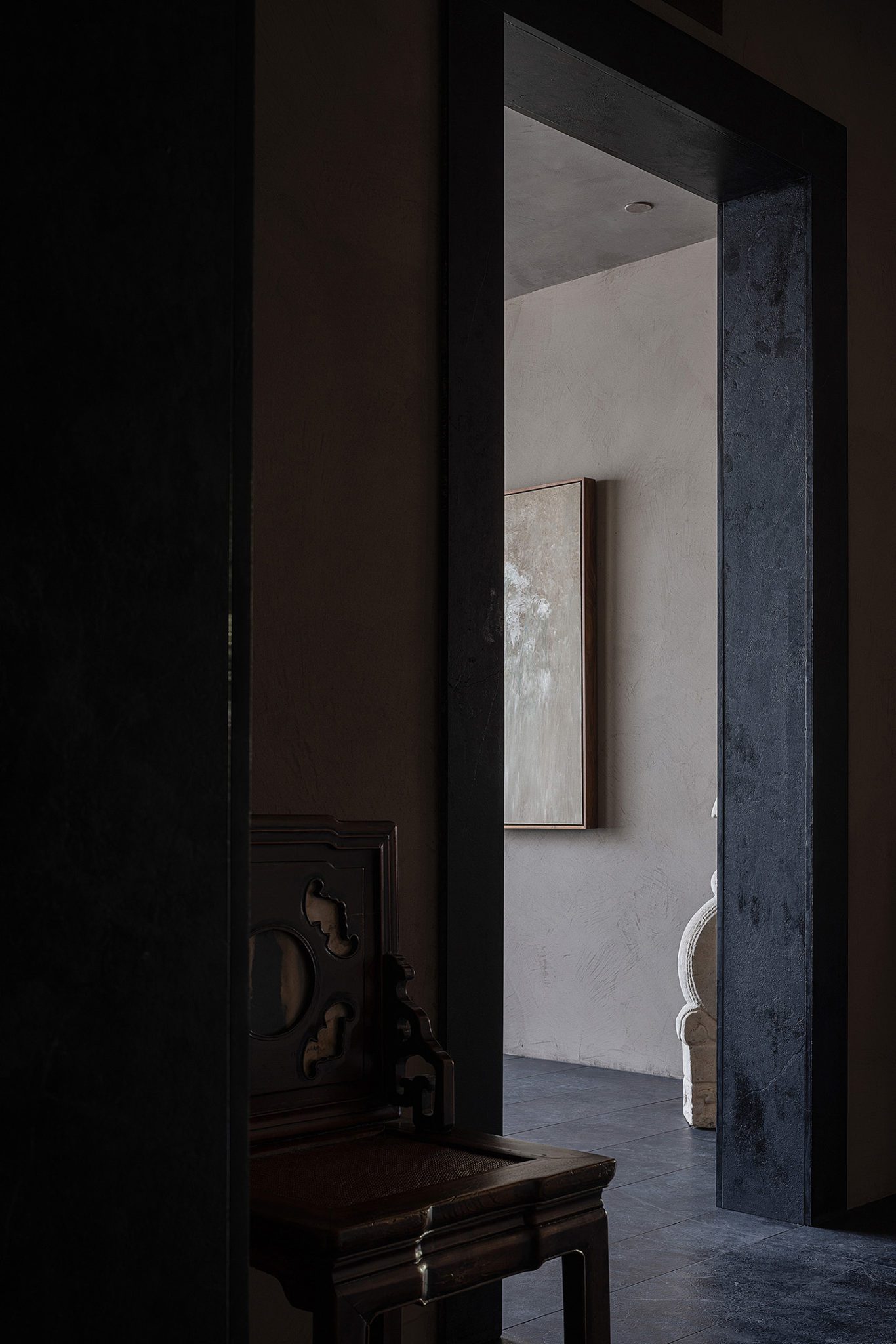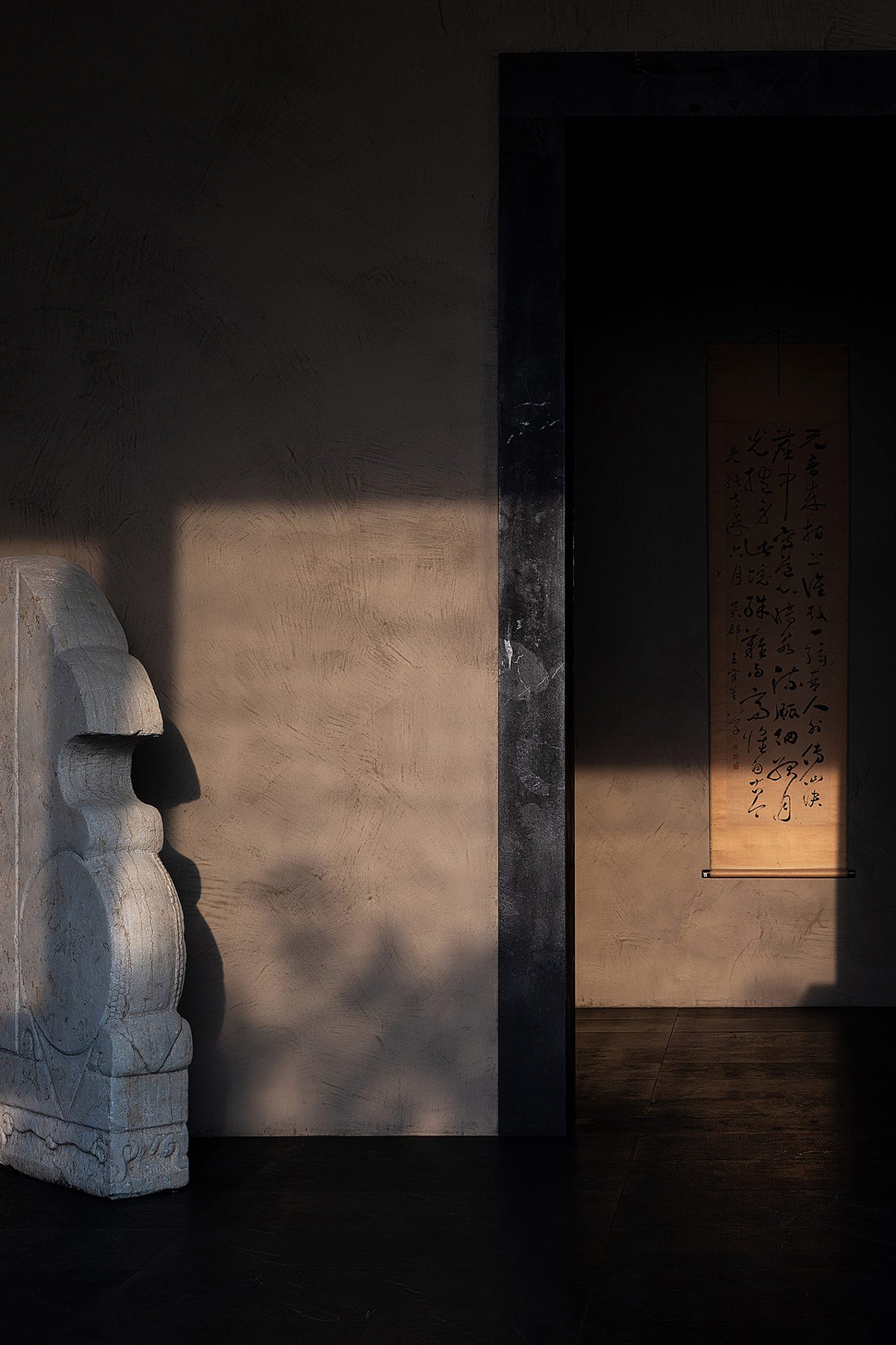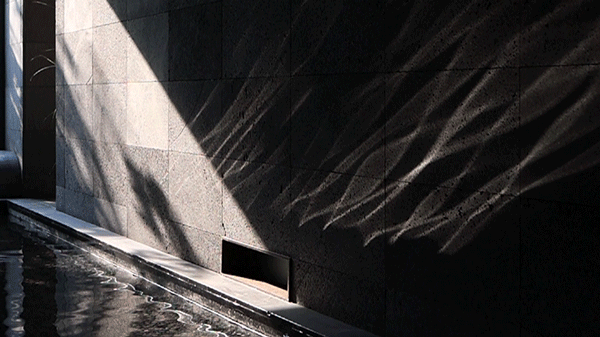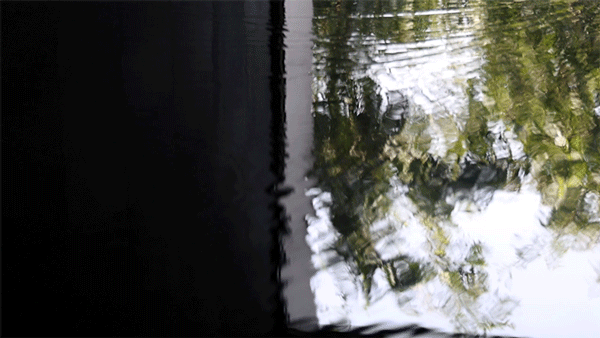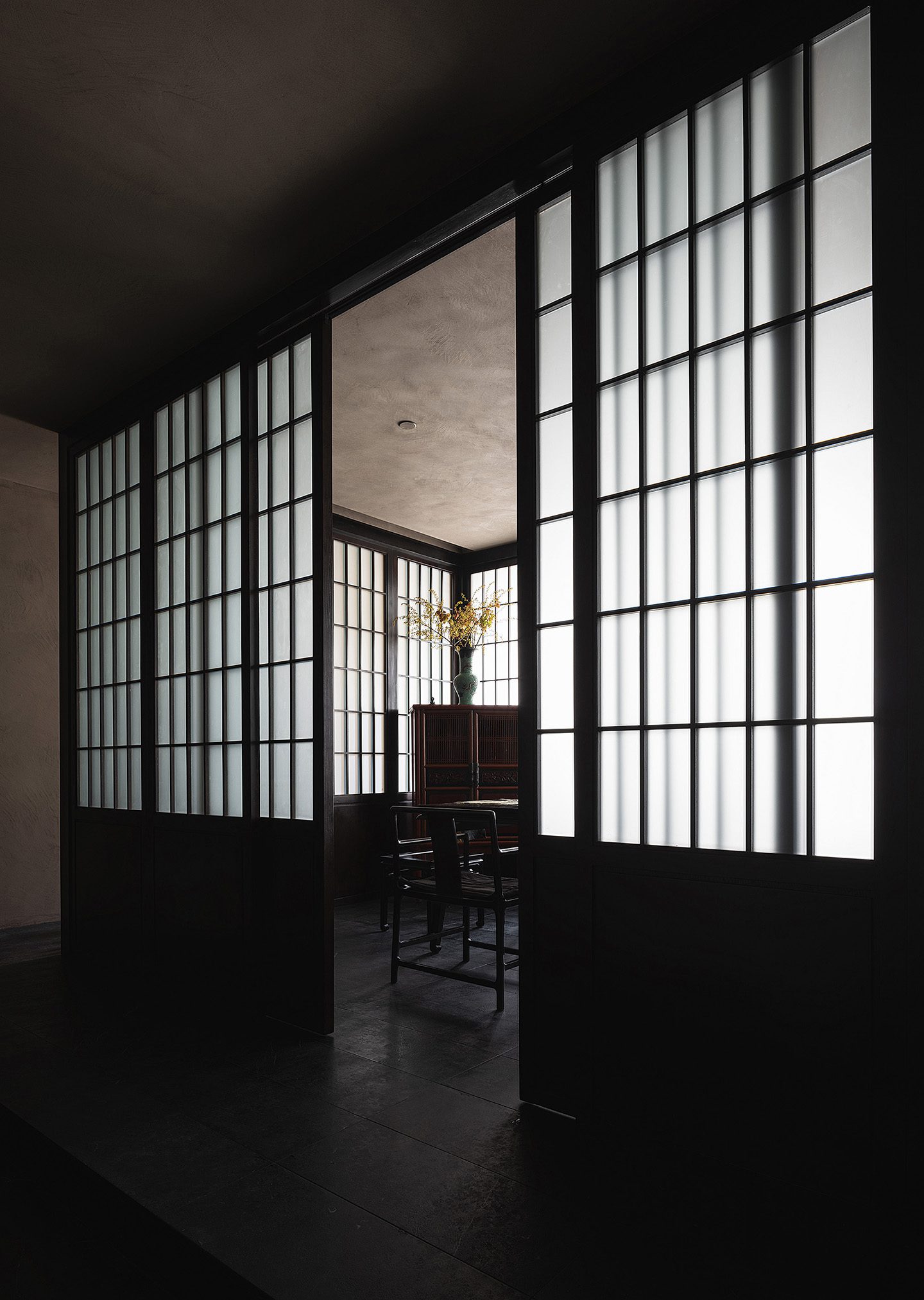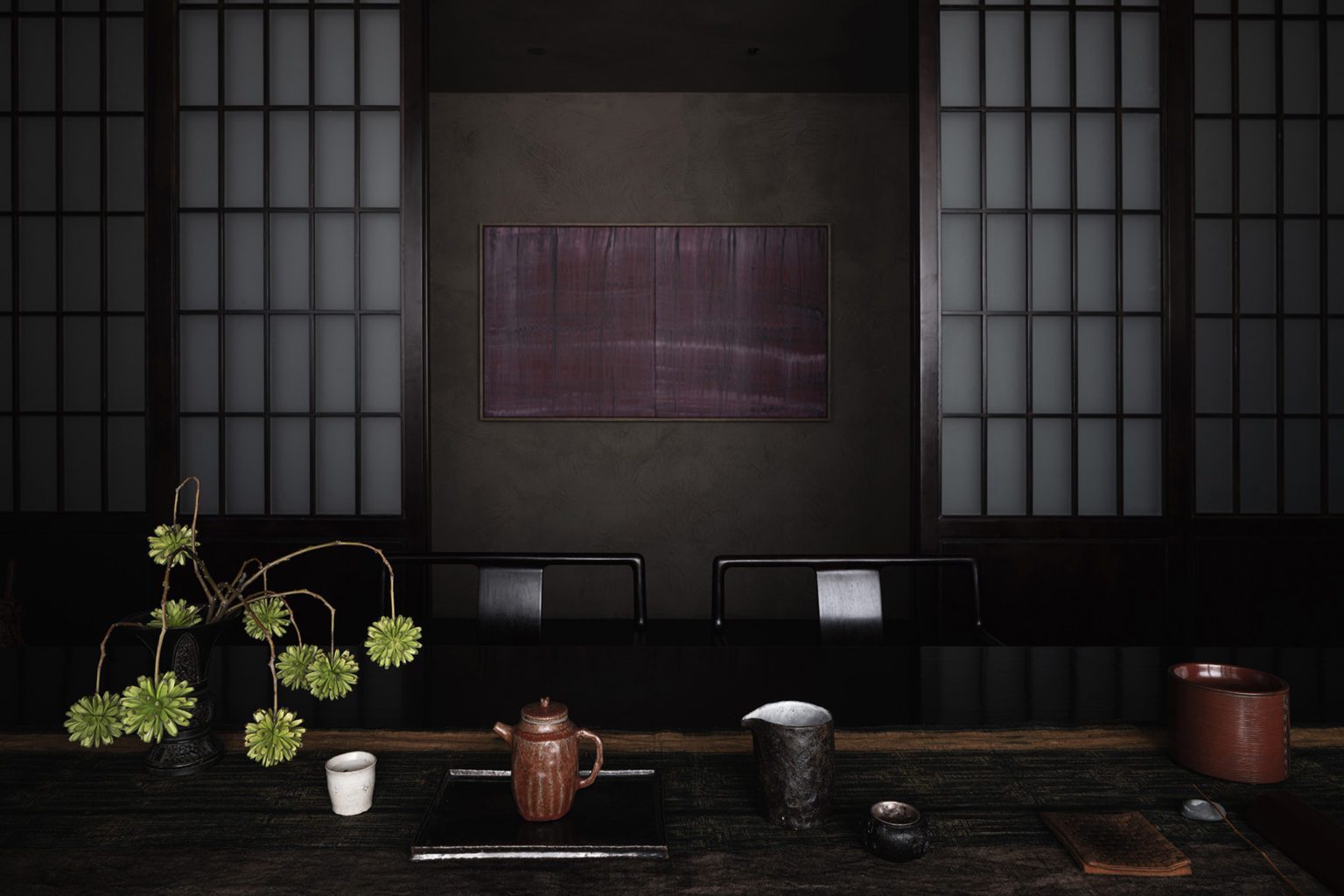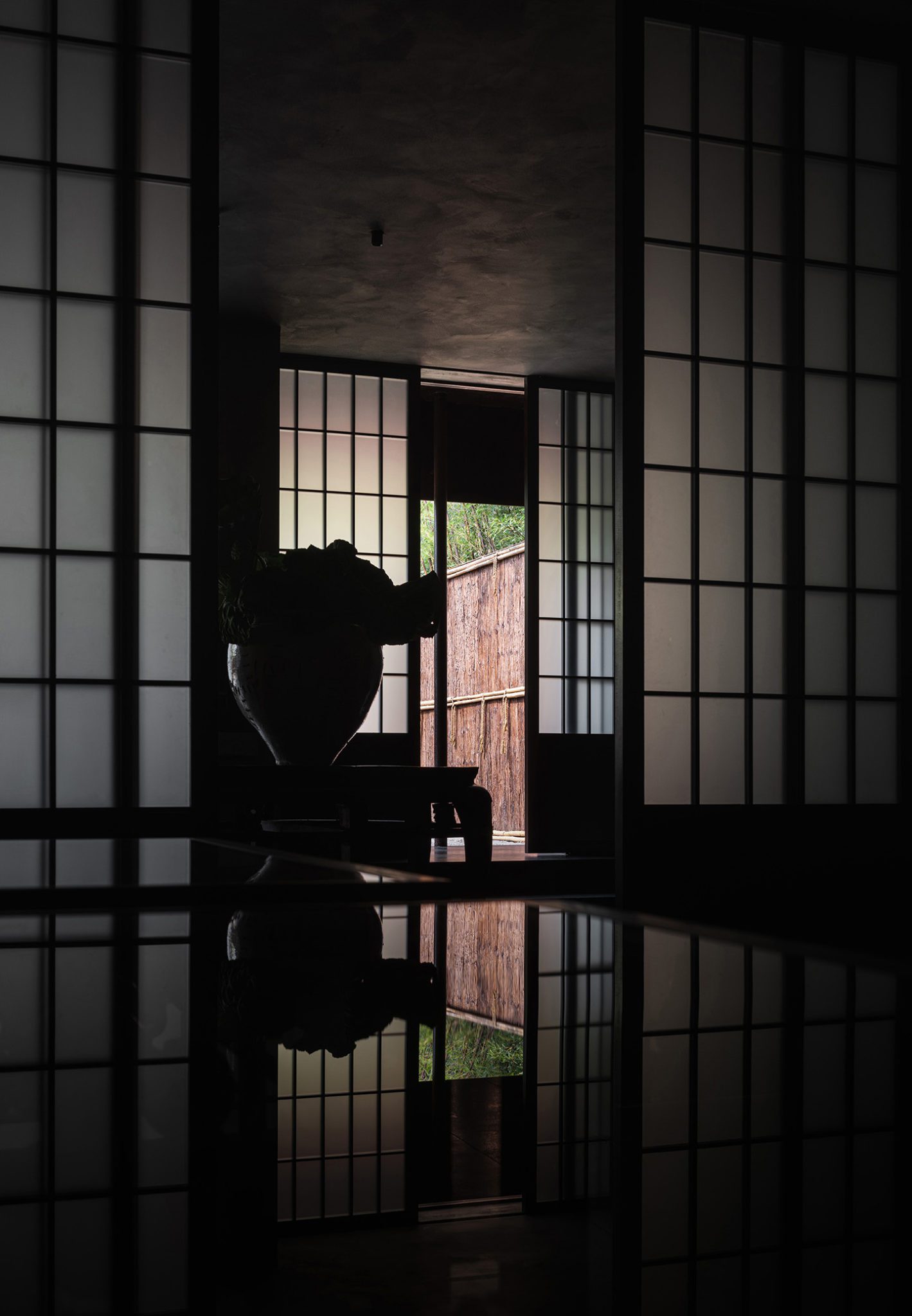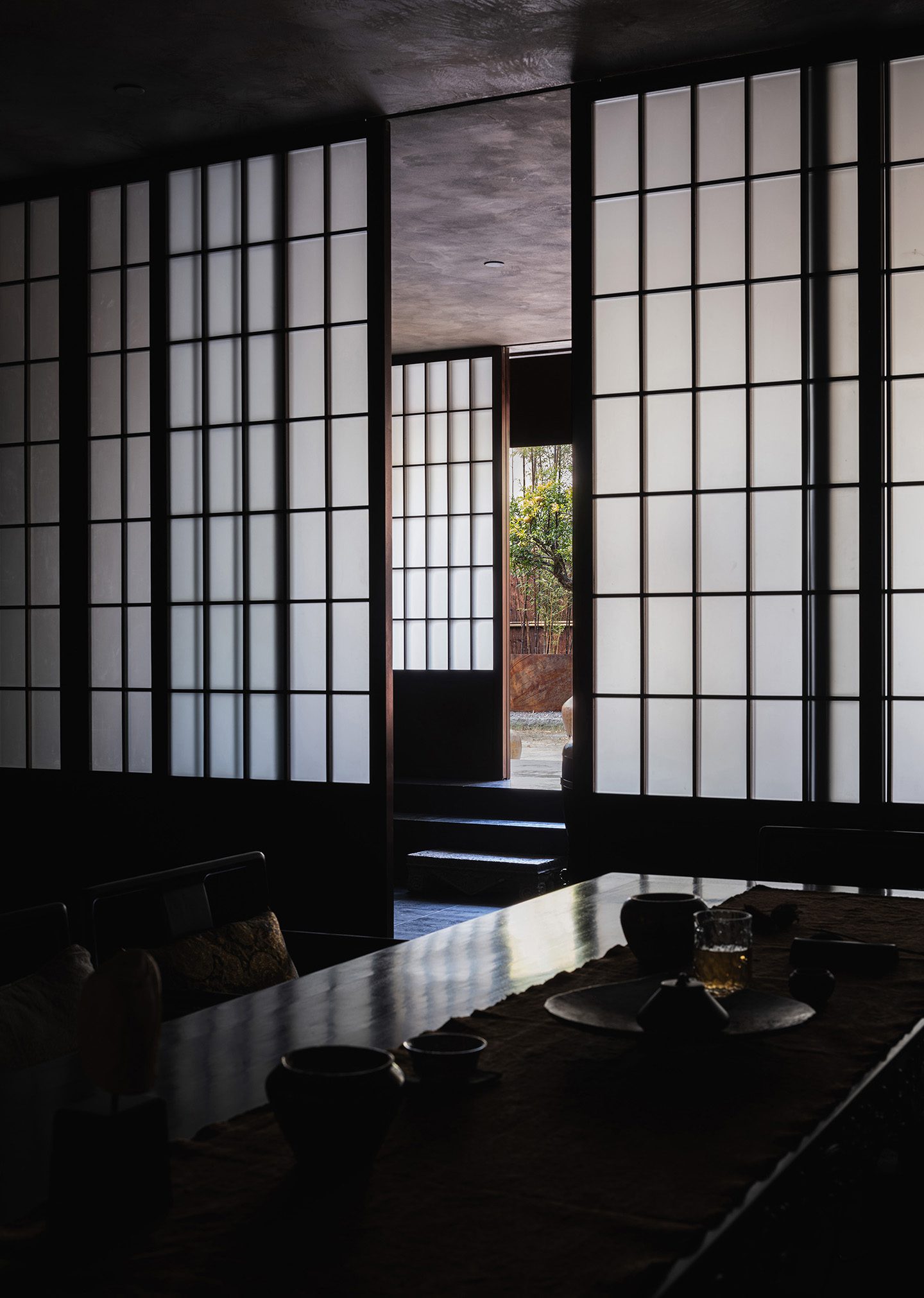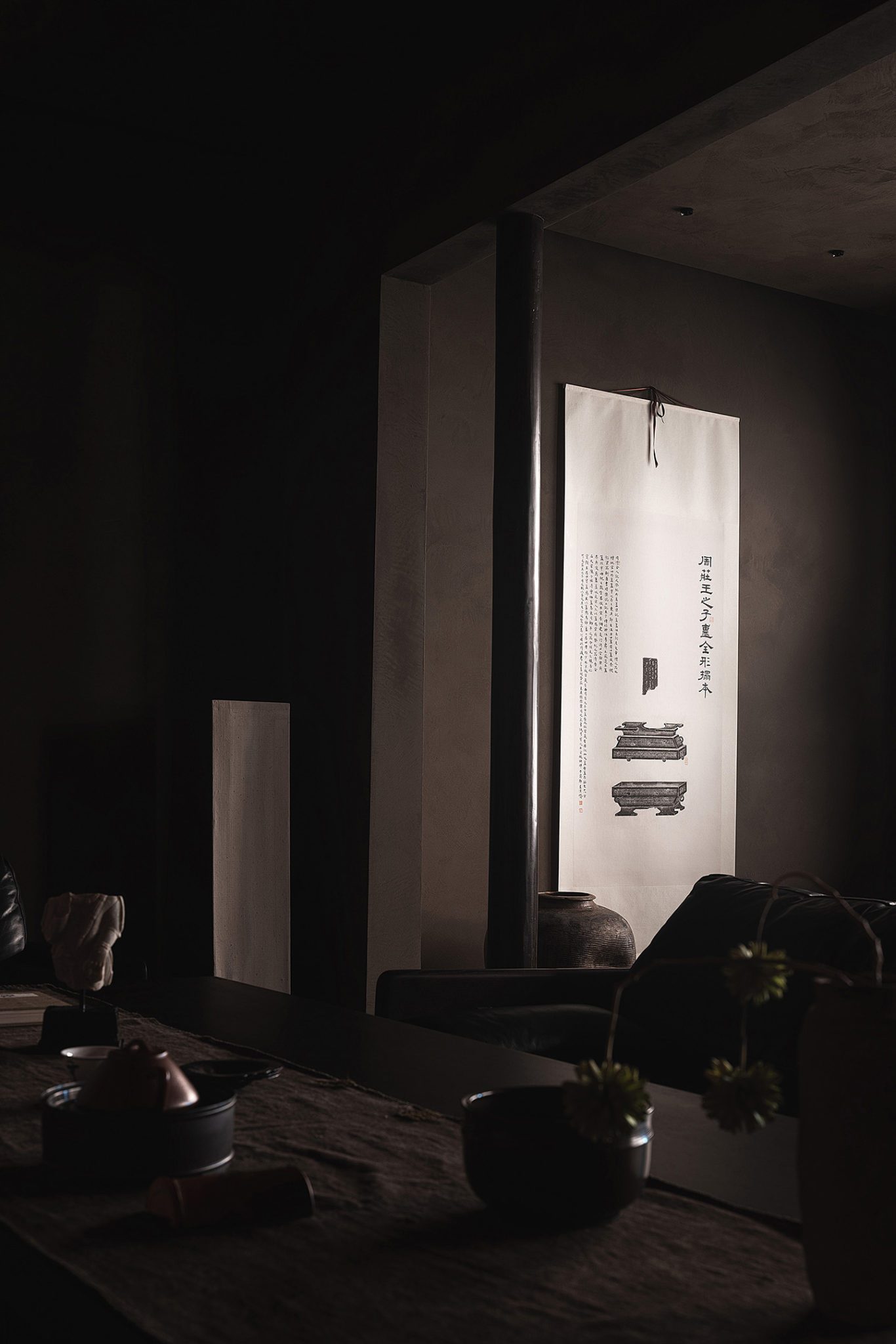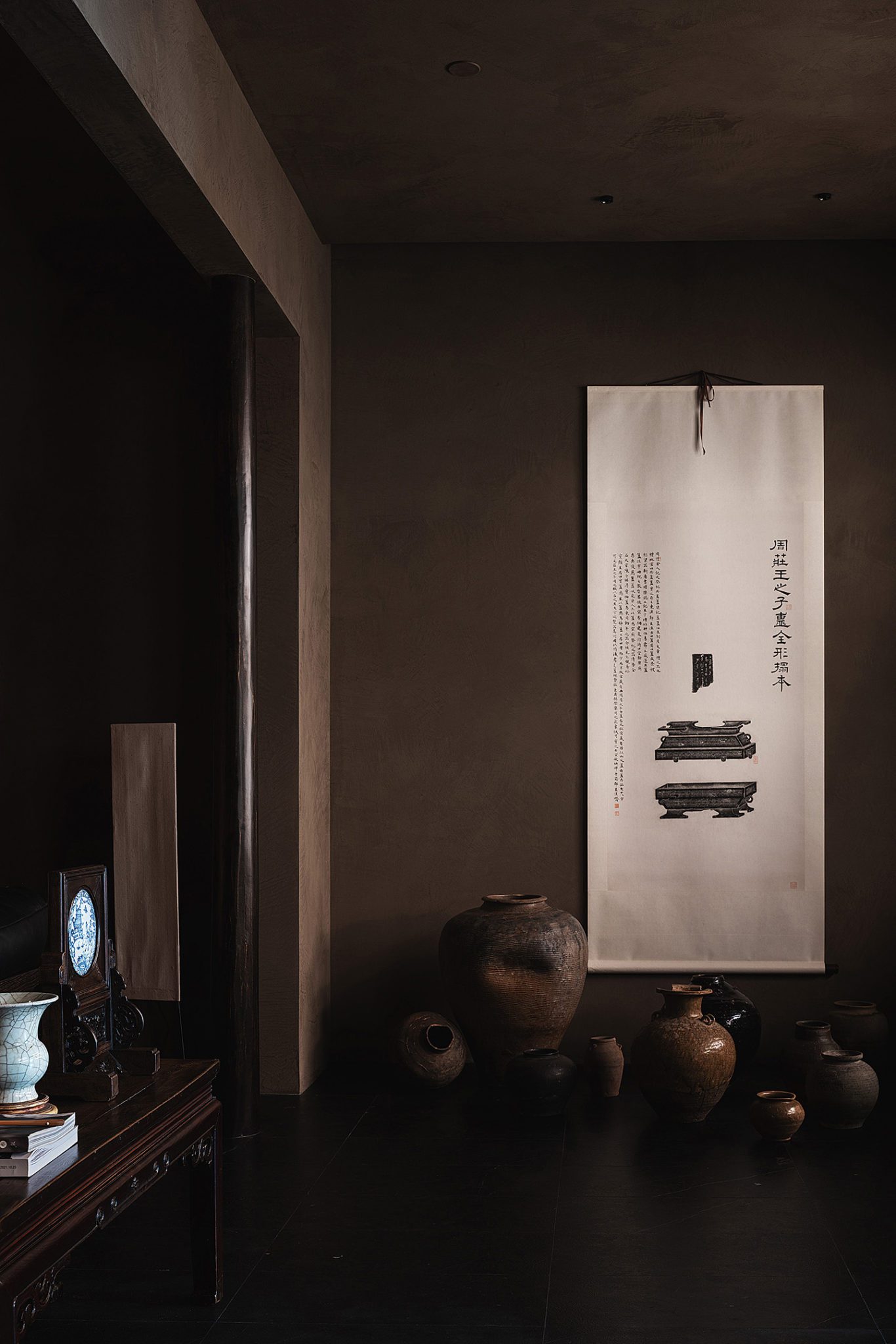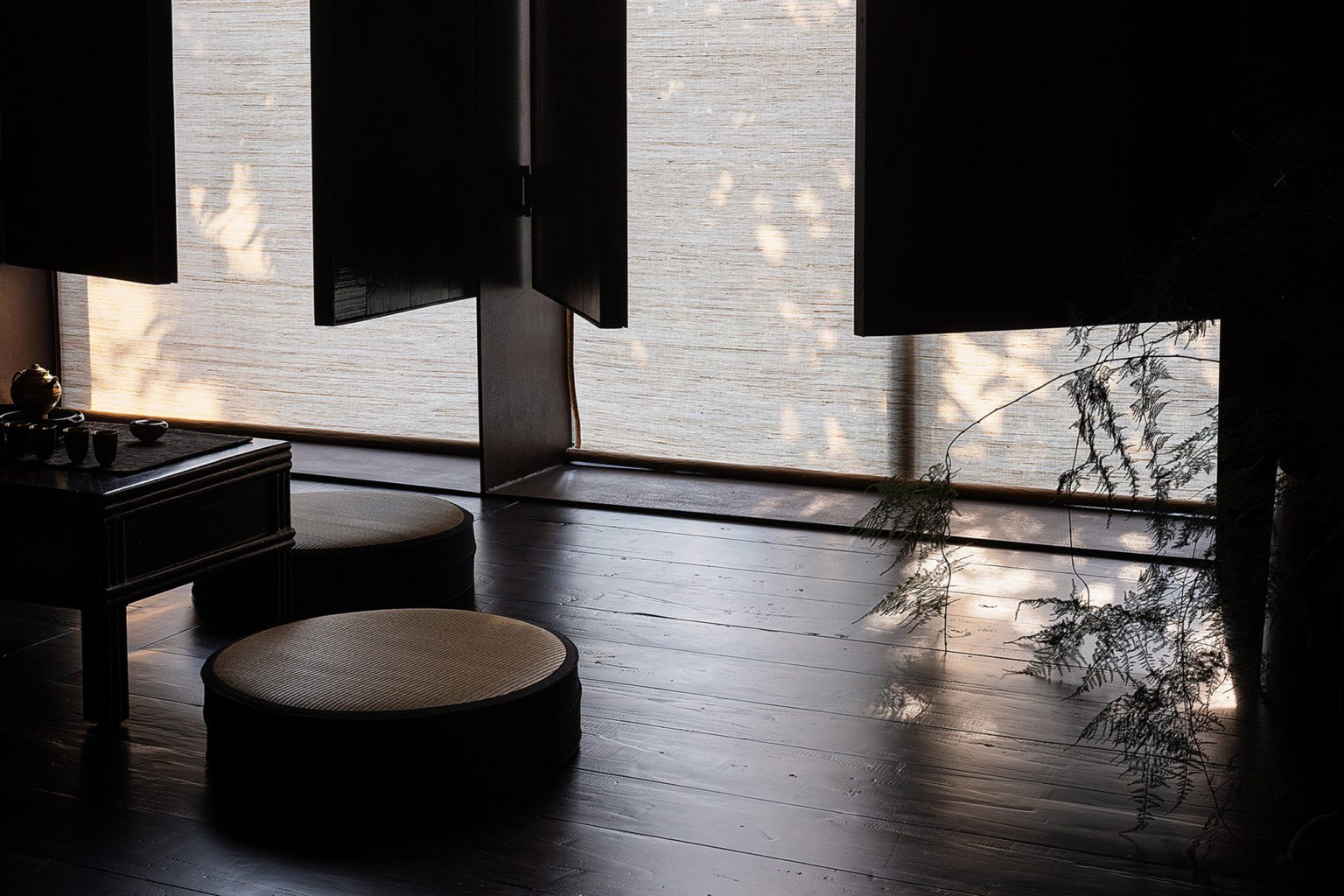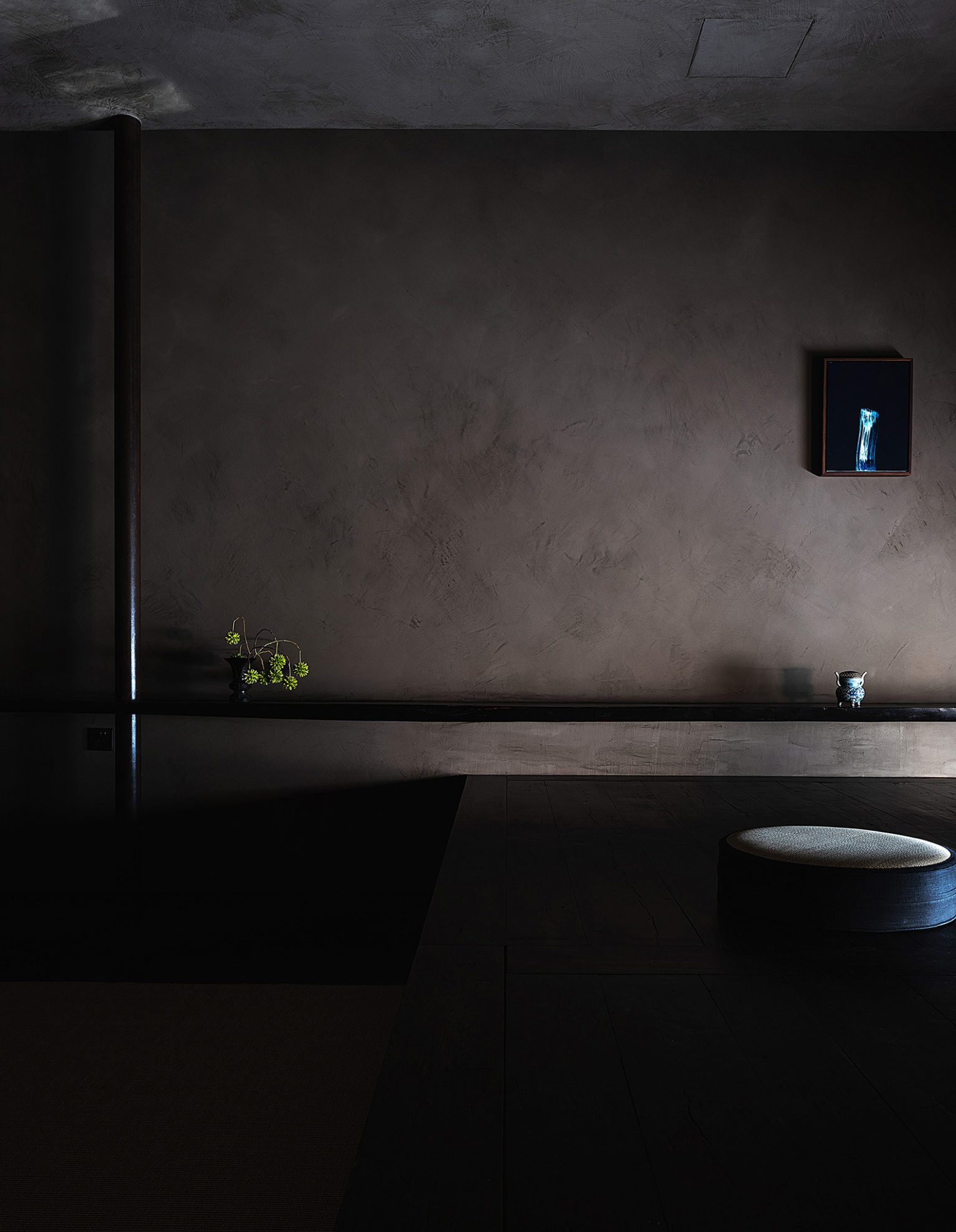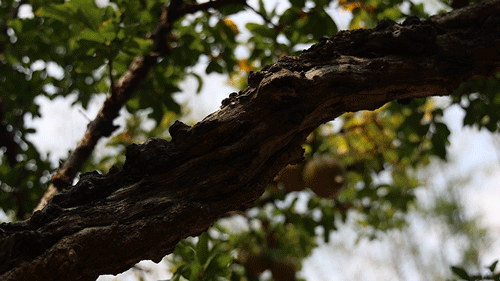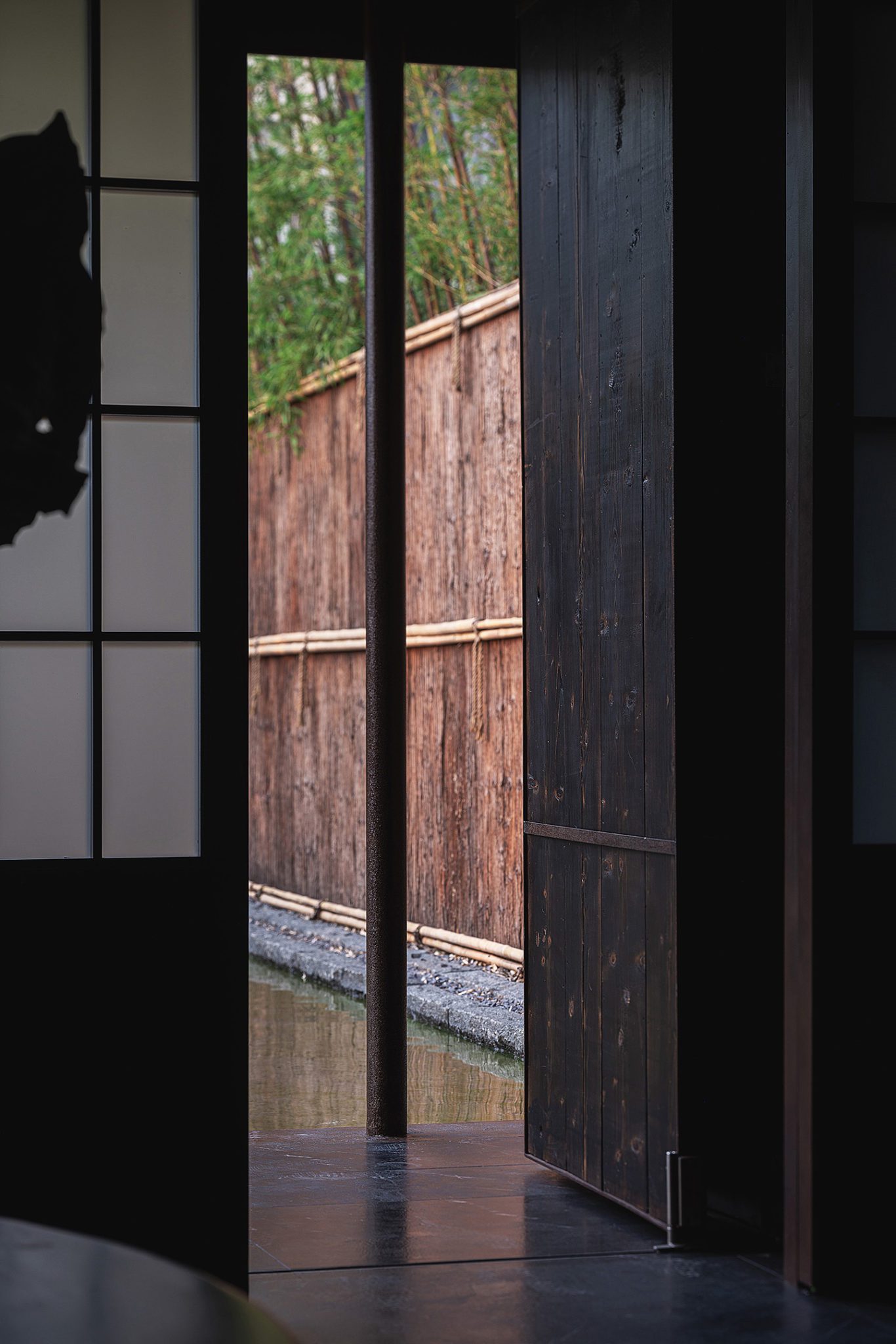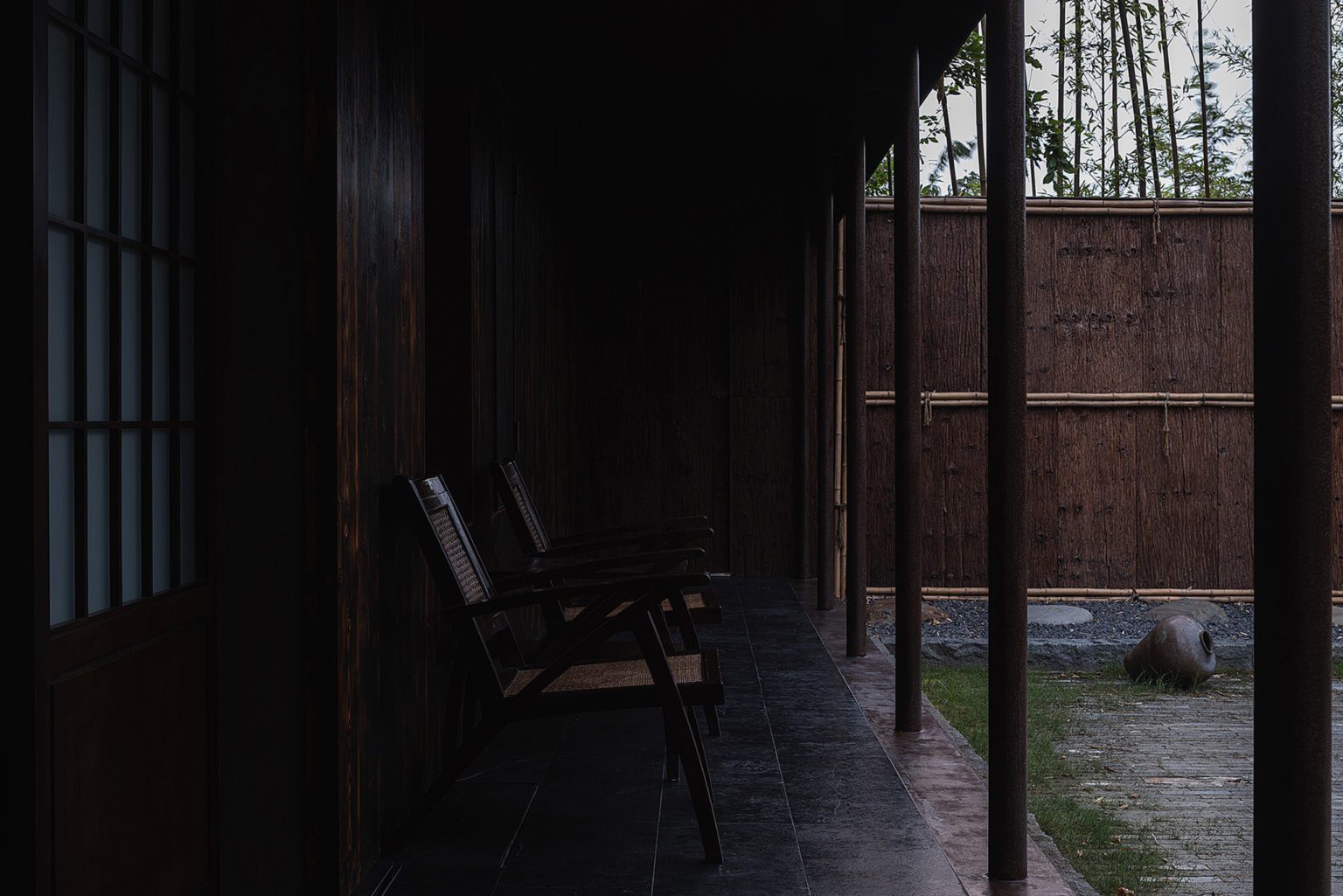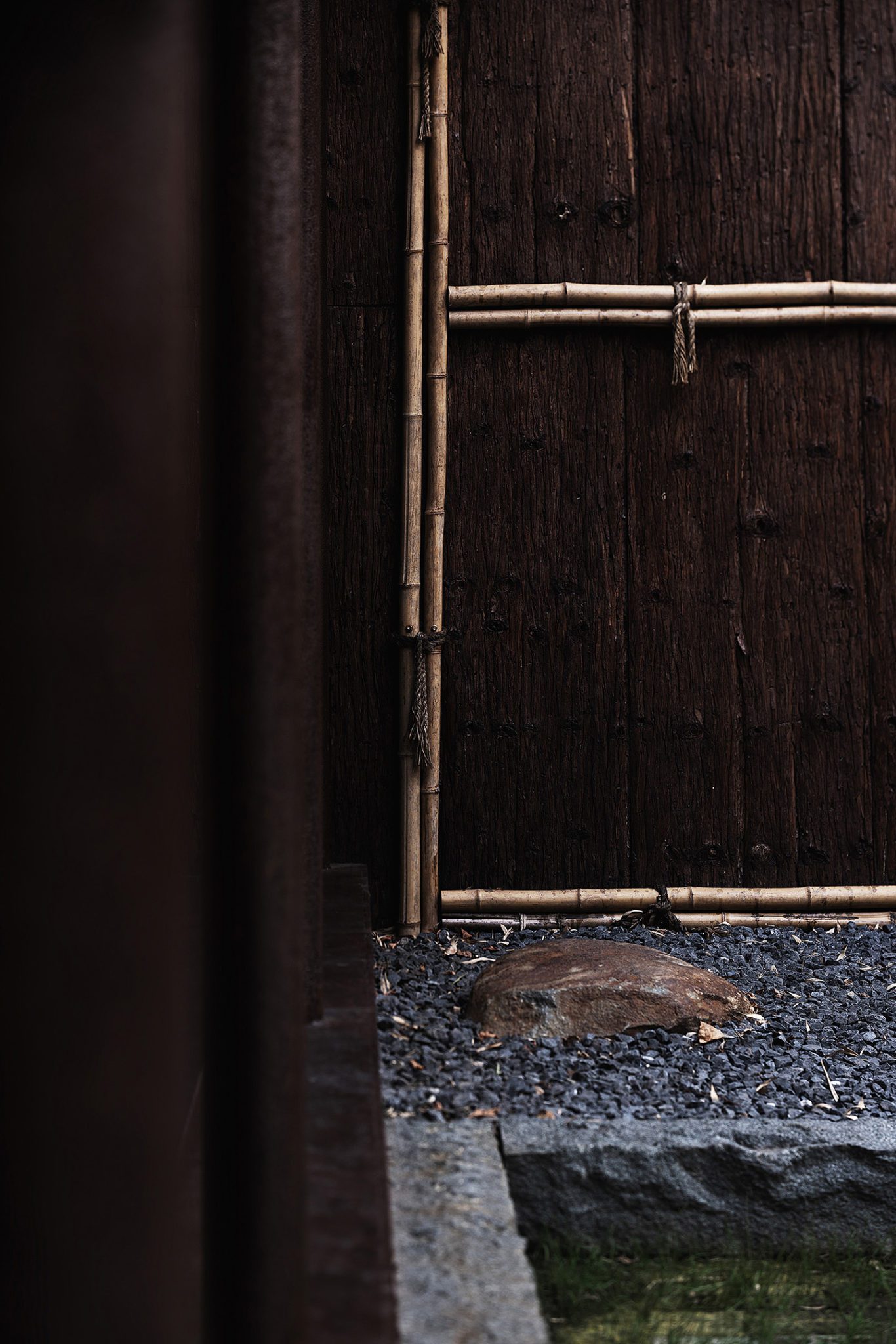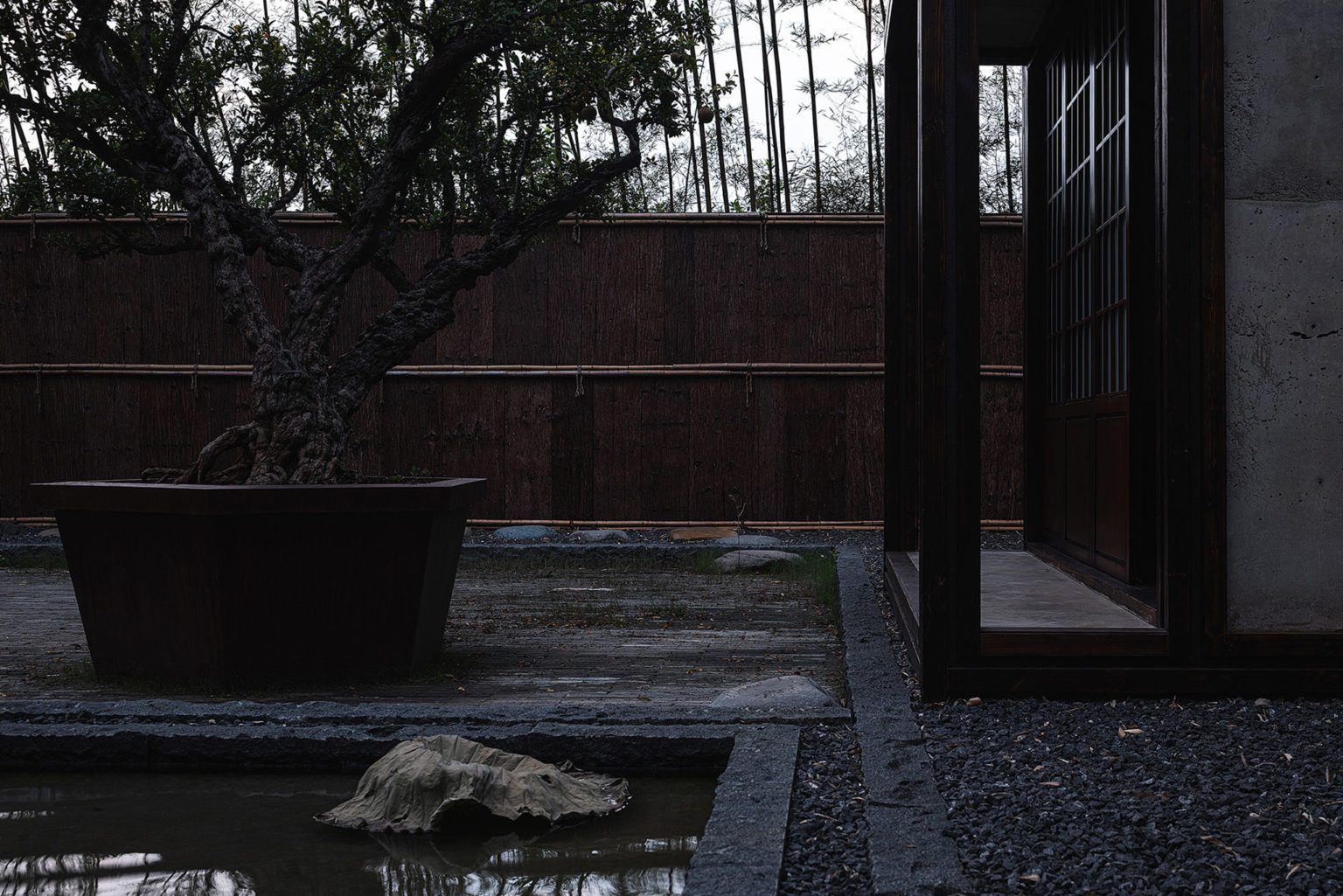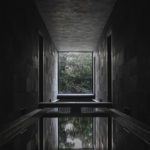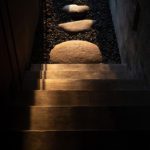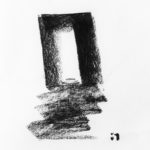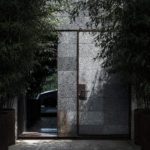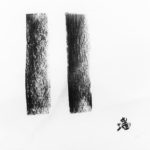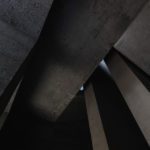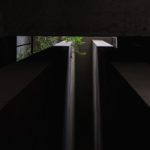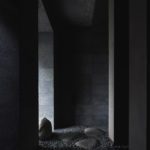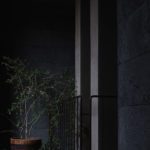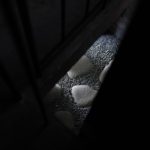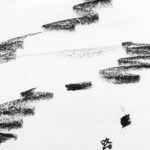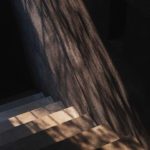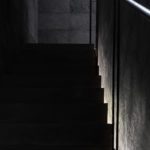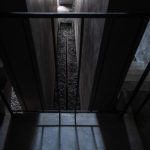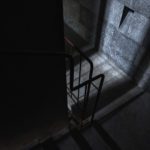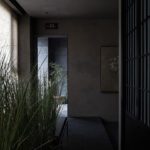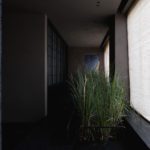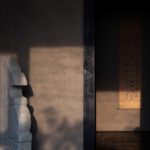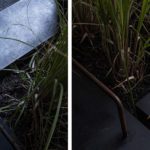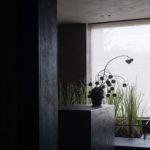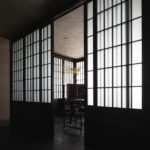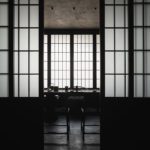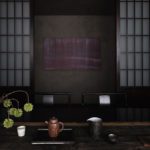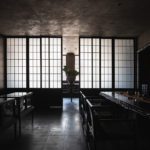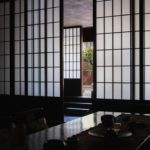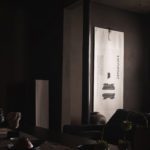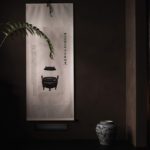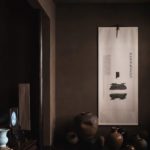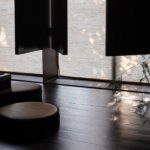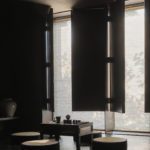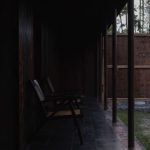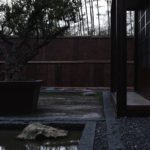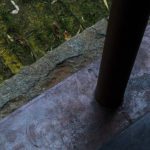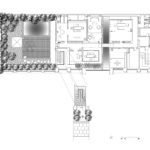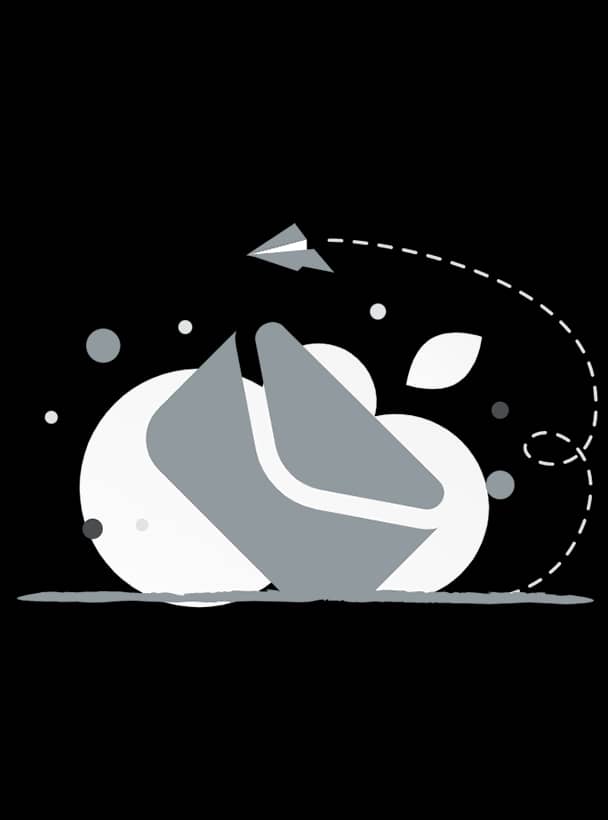Project Credits & Specs:
- Design Firm: Scene Architect
- Chief Designer: Hu Wei
- Photography: Jian Zhu Studio / Ren Dong, George, Su Jiao, Wang Yongfeng
- Location: Chengdu, China
- Area: 700 m2
- Year: 2022
- Construction Execution & Techniques: Ma Shizhong

The tea room is the space that best interprets Oriental philosophy. Tea drinking embodies Chinese people’s philosophy of life, and the area that accommodates this activity carries cultural significance and spiritual value beyond its function.
For this project, Scene Architects conveys Oriental life philosophy through the creation of physical space. The design team introduces nature into the interior, allowing visitors to experience space and time while wandering around. The project also explores the expression of traditional culture in a contemporary context.
01 门Door

The door is a poetic world.
It is in the past and the future.
As we cross over,
We experience life.
Hu Wei, Founder of Scene Architect
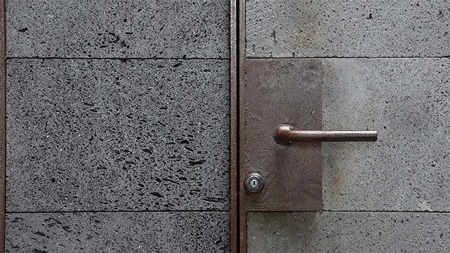
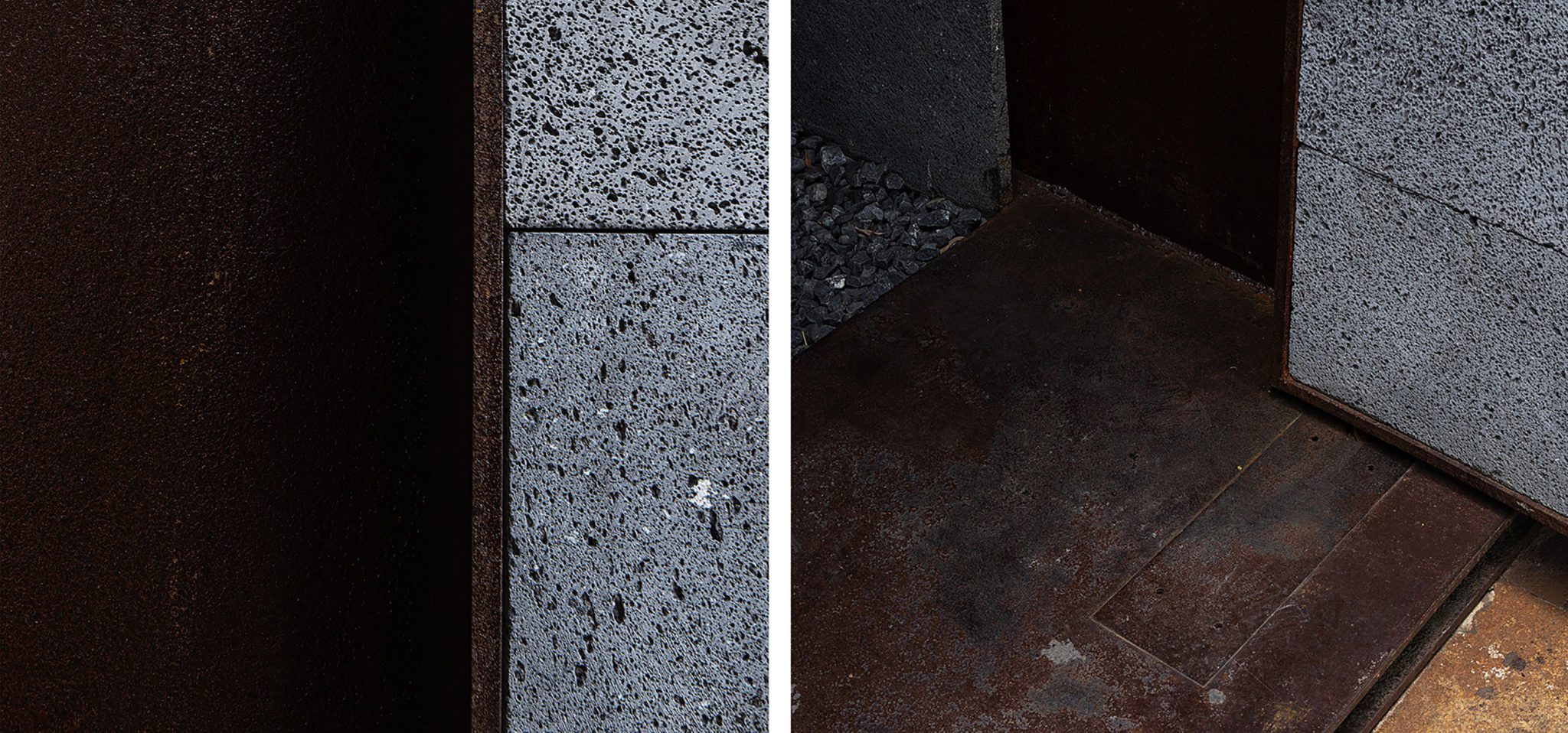
Throughout history, people have been craving a spiritual retreat. In the context of fast-changing and boisterous contemporary life, this project creates a space that represents the Oriental philosophy of life and shows a return to tradition and a new interpretation of modern life.

The space is separated from the outside hustle and bustle by a rather thick door. Behind the closed door, the guests are taken on a journey transcending the earthly world.
When the door closes, the space transforms into a ‘mountain’, bringing about a spiritual retreat for the guests.
02 墙Wall
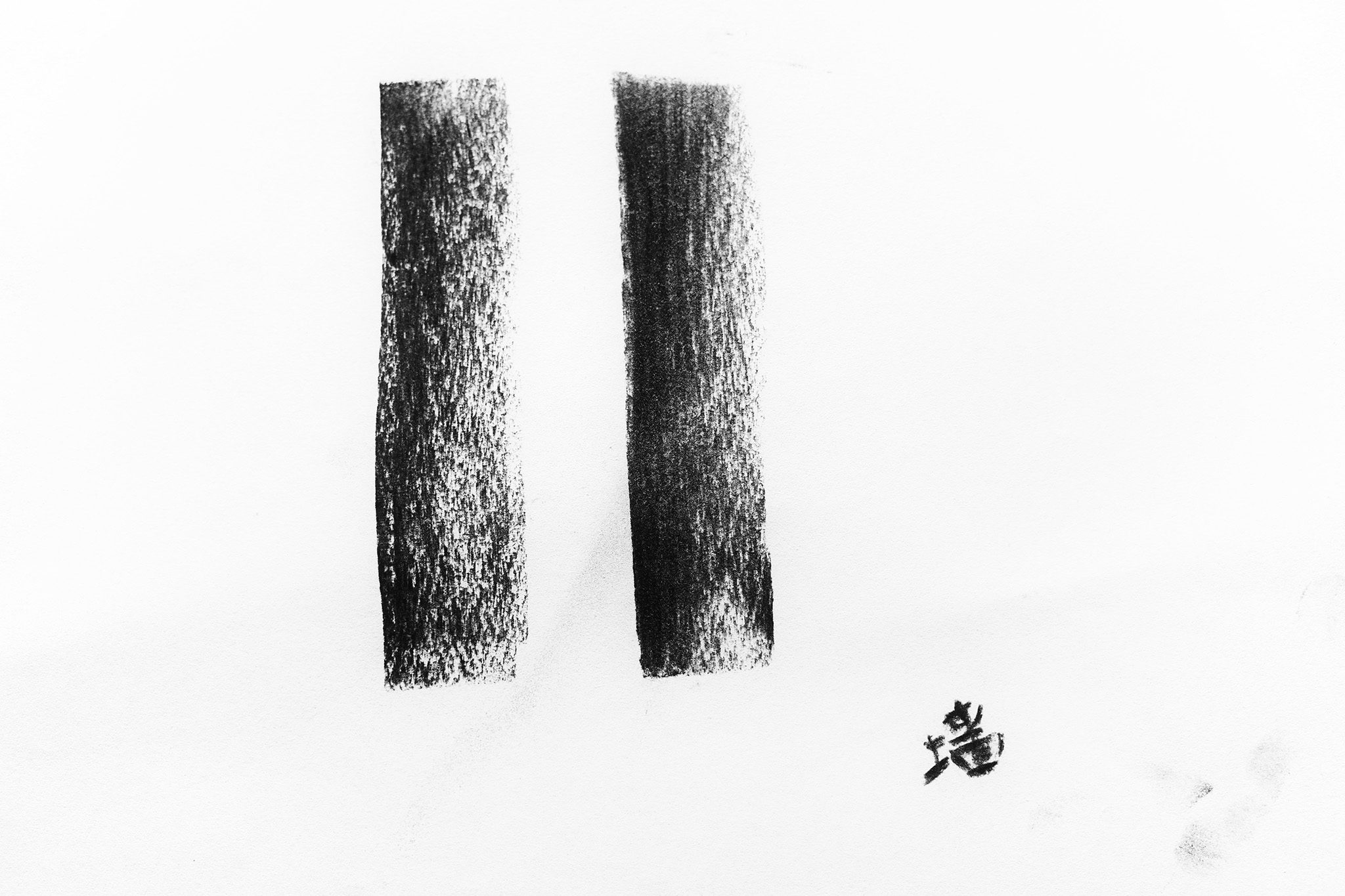
The wall is a mountain.
I built a space about mountains,
because everyone has a mountain in his heart.
The mountain stands between heaven and earth,
hidden in the heart.
It is a challenge to oneself.
Life only goes on and on,
measuring the strength of scales with our feet.
Every time one crosses,
it stirs up a subtle vision in the heart.
Hu Wei, Founder of Scene Architect

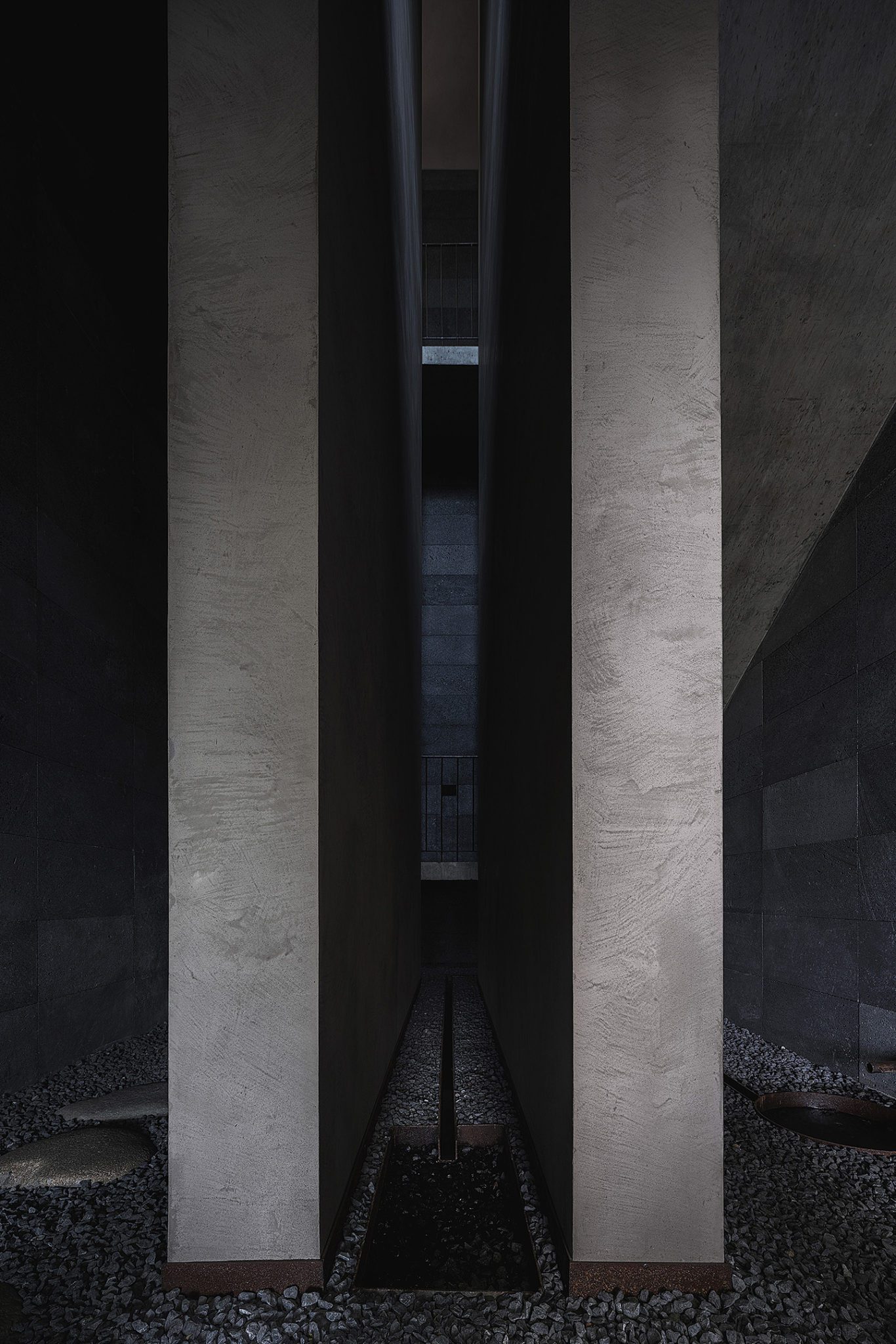
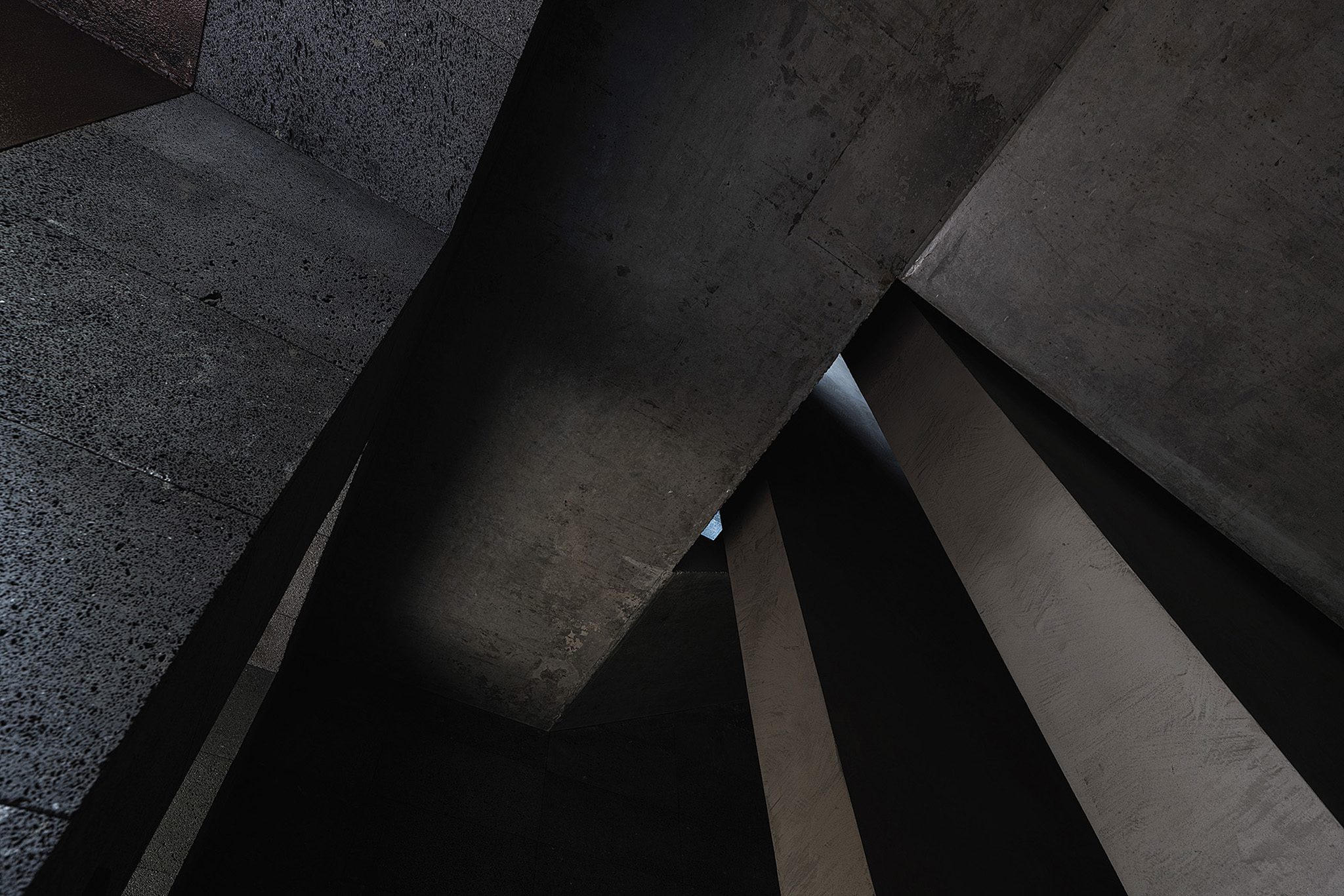

Two walls are erect on the stairwell at the entrance, with shimmering light shedding from above. The monument-like structures and the central axis make one feel as if one standing on a ‘mountain’.

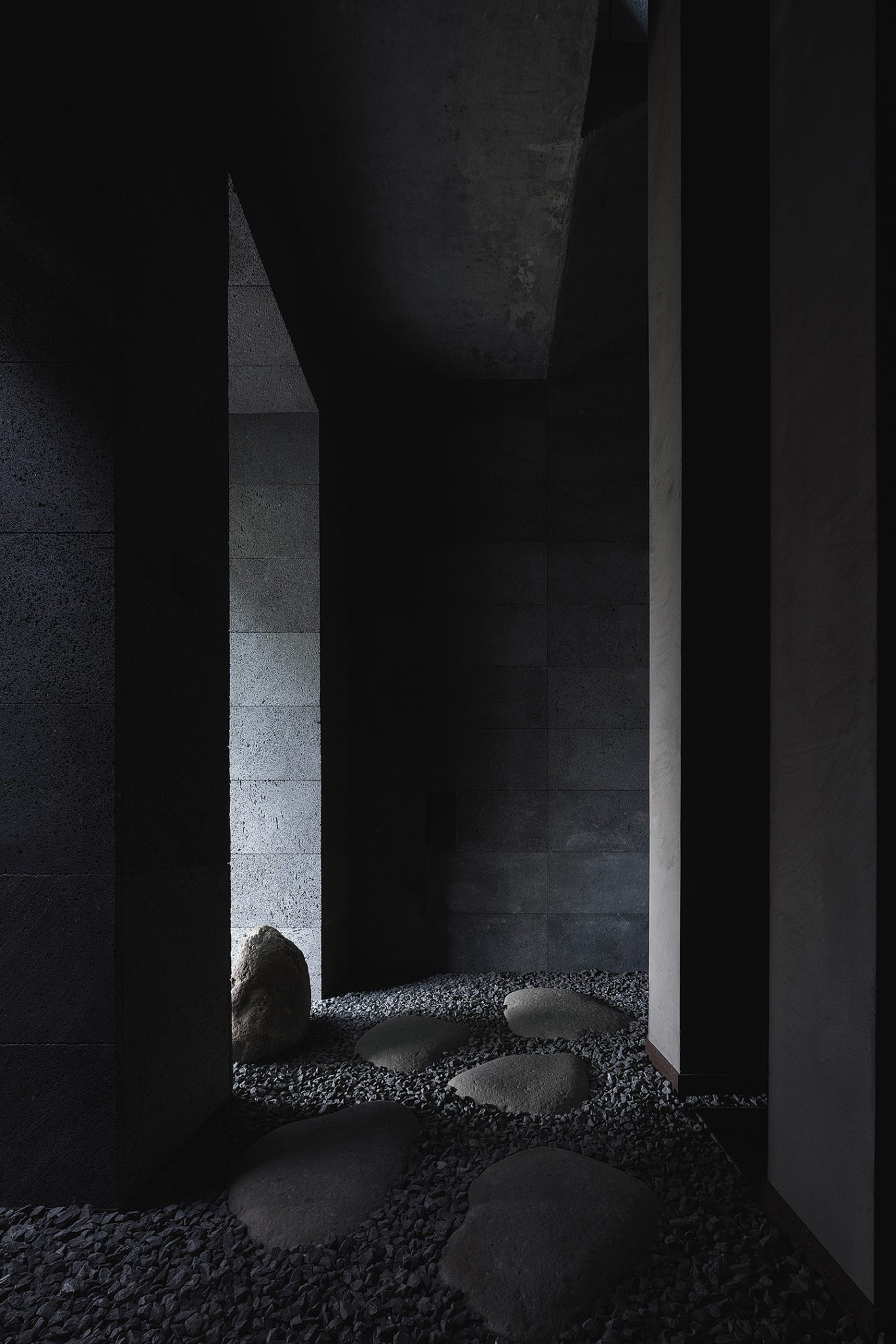
The walls seem to be separate, nevertheless, open different paths for ‘climbing the mountain’. Rambling around in space gives one the pleasure of exploration. The slightly oppressive front area is a prelude to the open, surprising experience at the later stage of the ‘journey’.
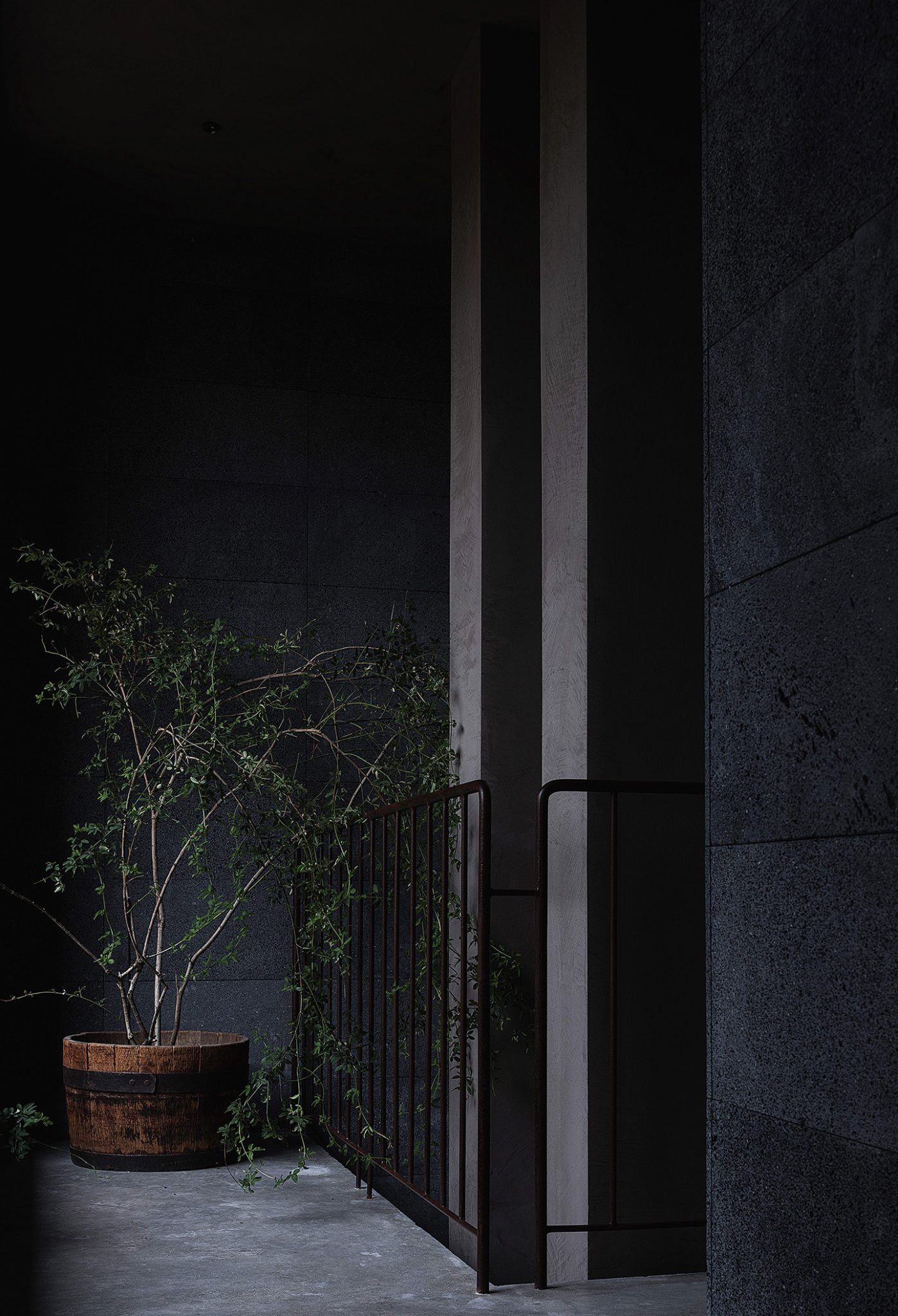
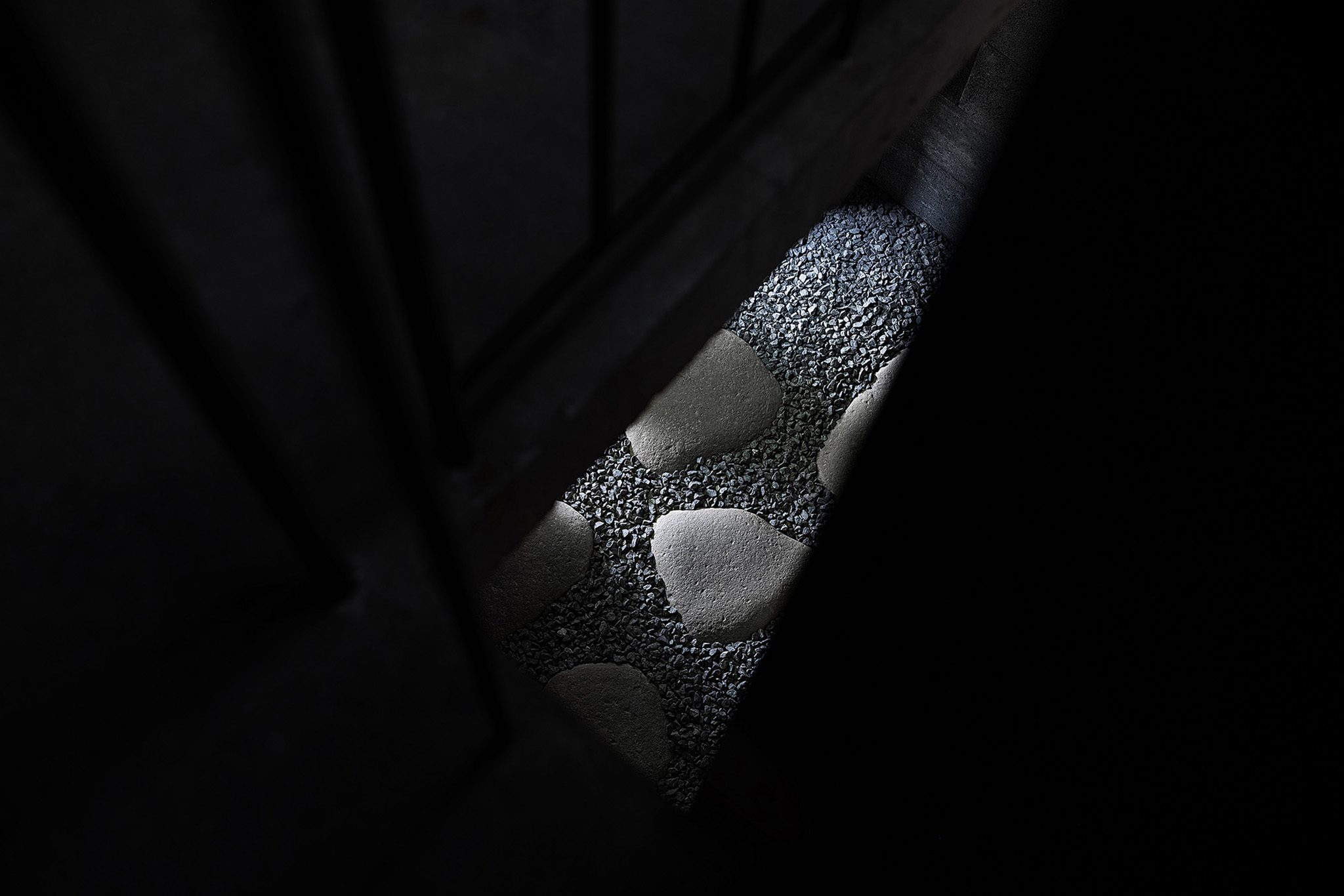
03 路Road

Road is an important component
of our design experiment in this architectural space.
The existence of road,
allows us to gain different memories and experiences.
A way to reach different worlds.
Hu Wei, Founder of Scene Architect
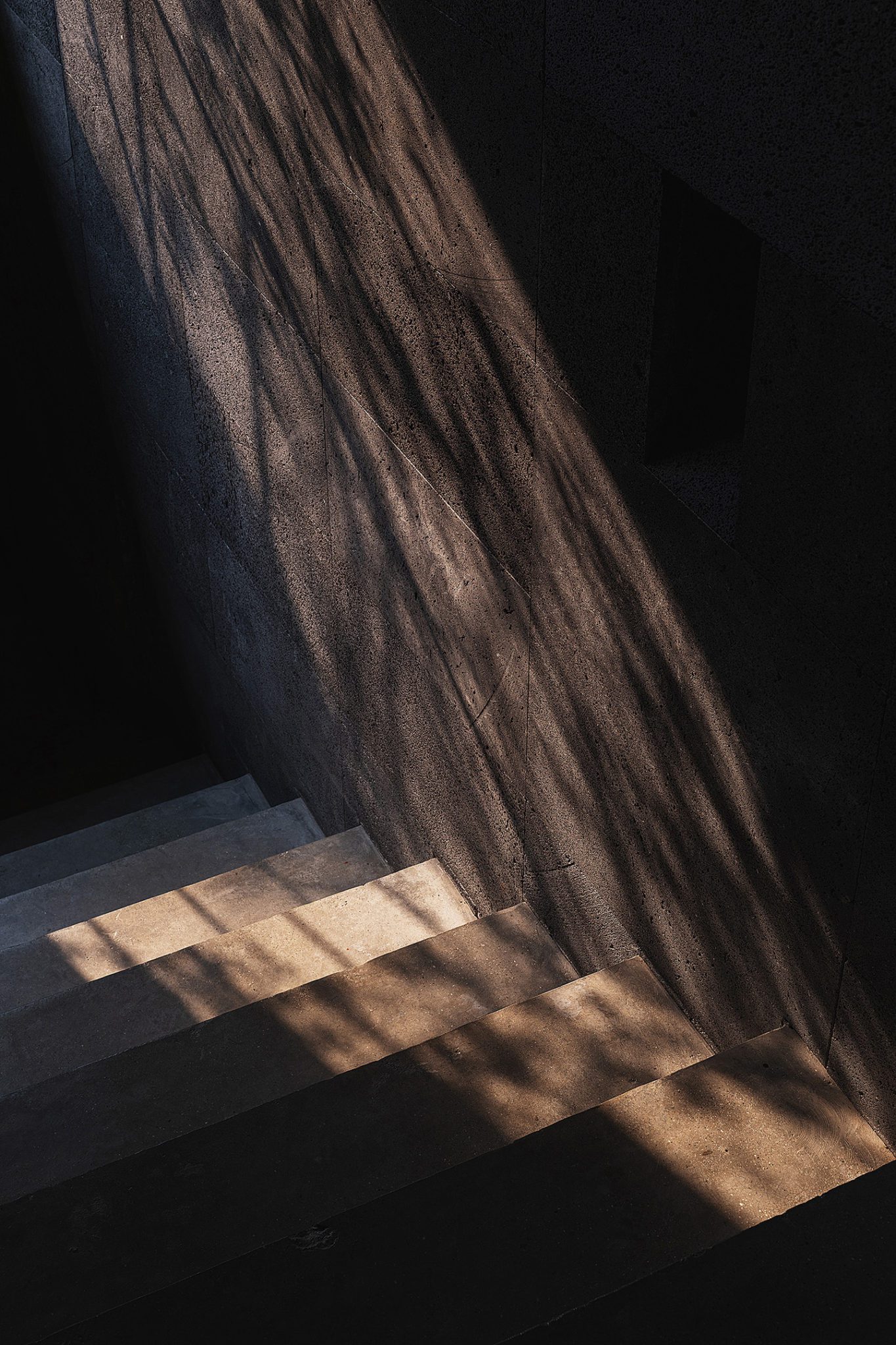
As exploring ‘amongst the mountain’, the paths and doors appear to be extended by the scenery and light. Multiple tentative paths are created so that visitors are free to linger or proceed in a roundabout way.
There is no clear direction in space, leaving room for freedom and exploration. Like the road of life, as we cannot foresee the next journey, we might as well enjoy the present moment and savor the view along the way.

Rustic materials including volcanic rocks, concrete, iron handrails, and rubbles are used to construct the space through contemporary techniques. The natural light from above and the gentle sound of running water make the guests feel like exploring a mountain.

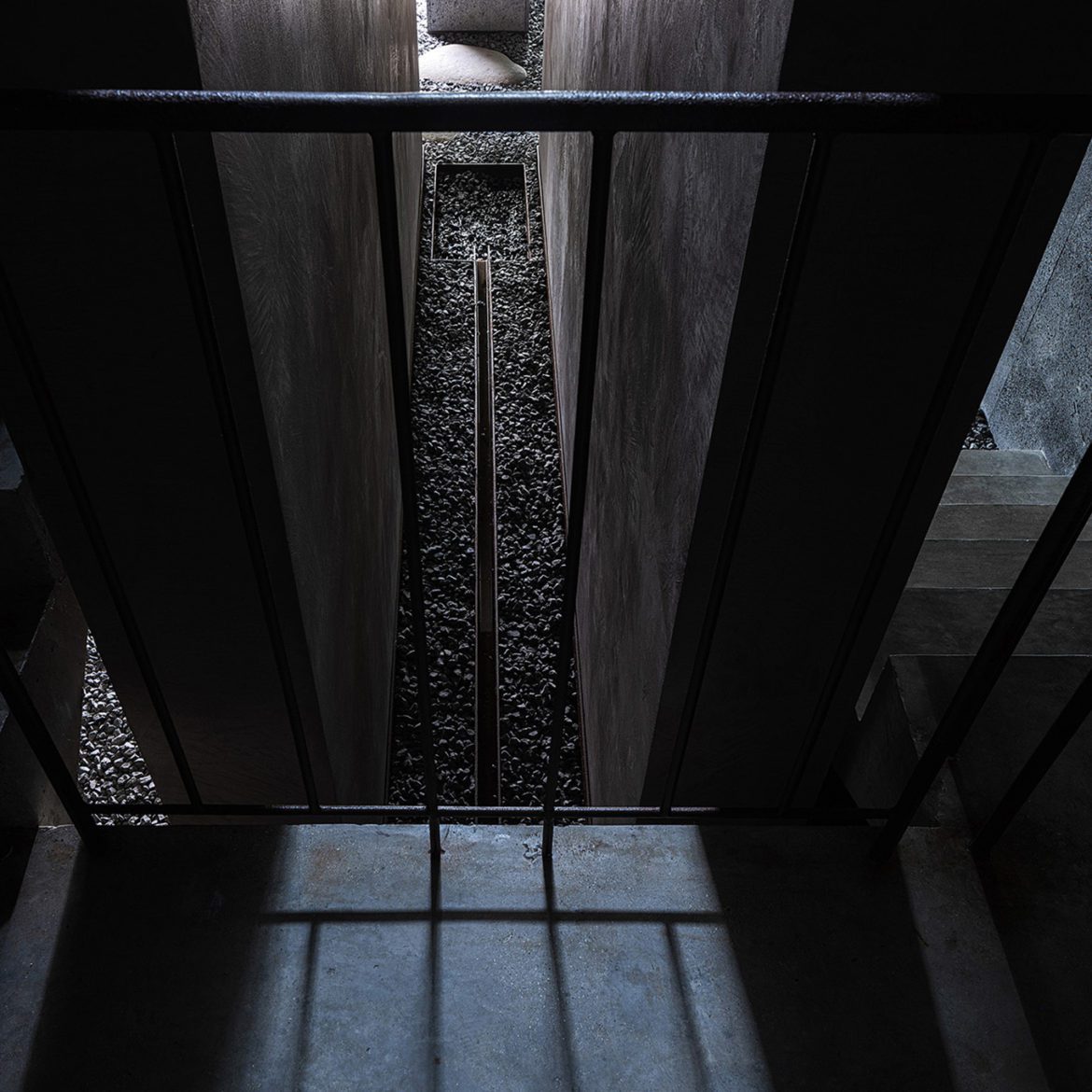
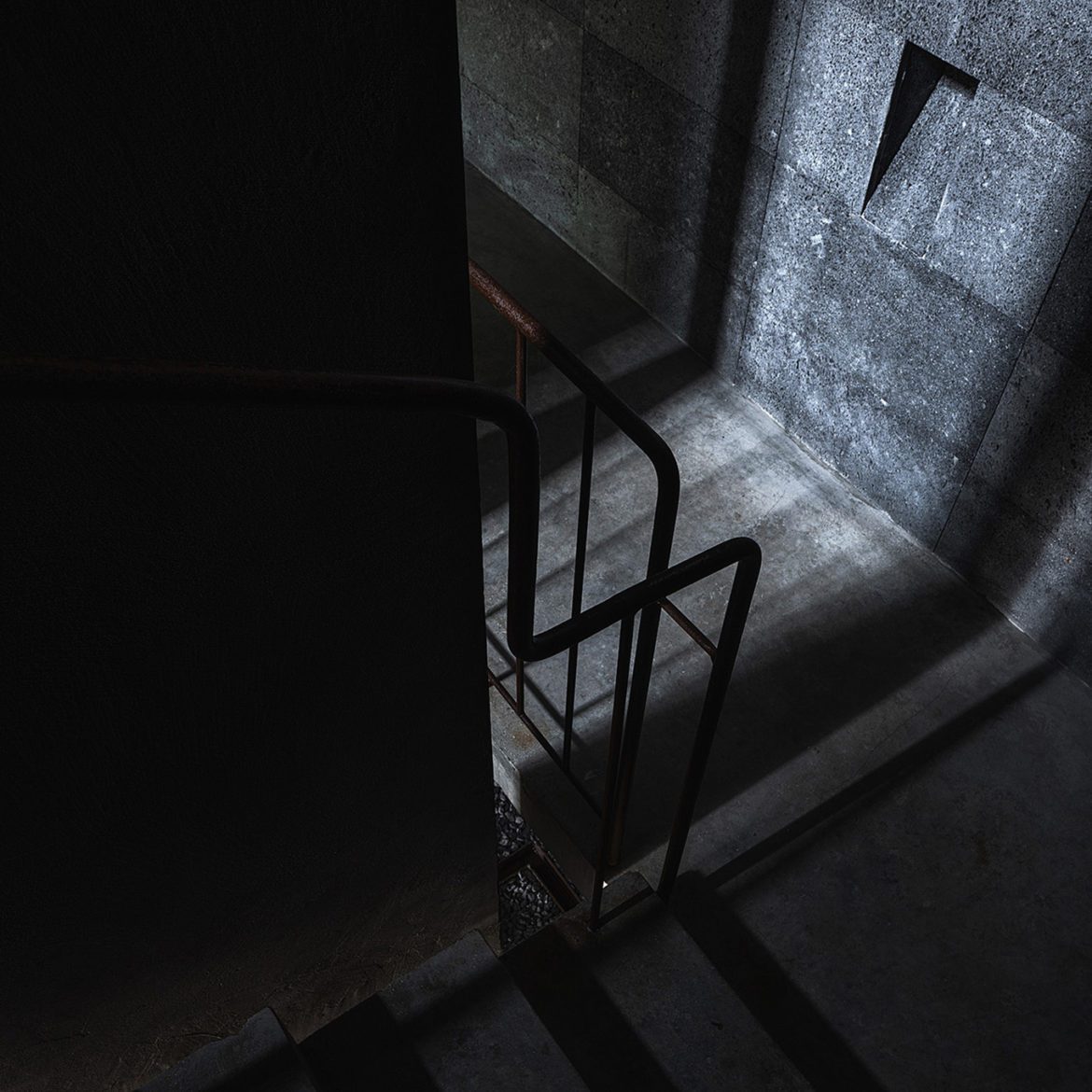

The second floor is highlighted by greenery, which connects the space closely with nature.
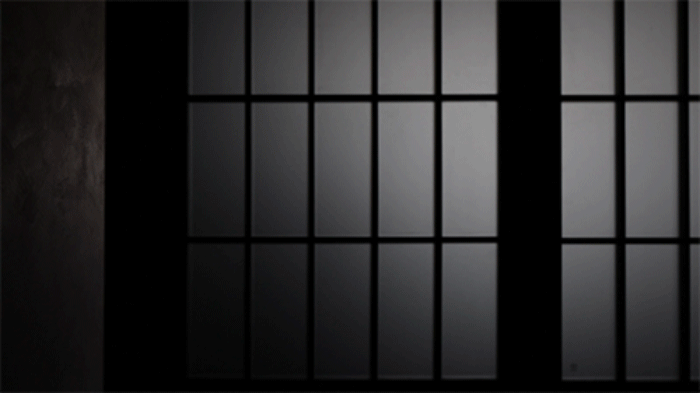
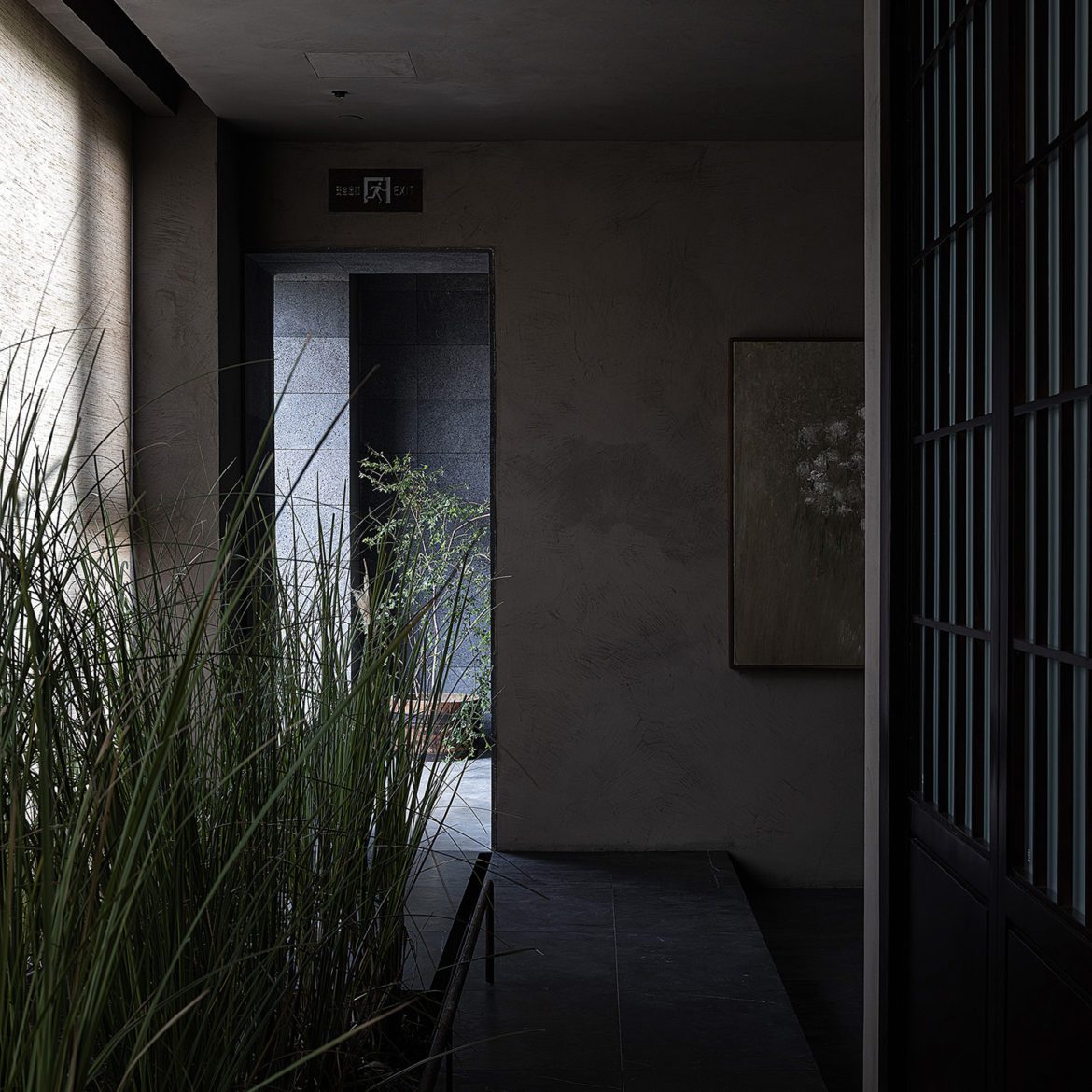
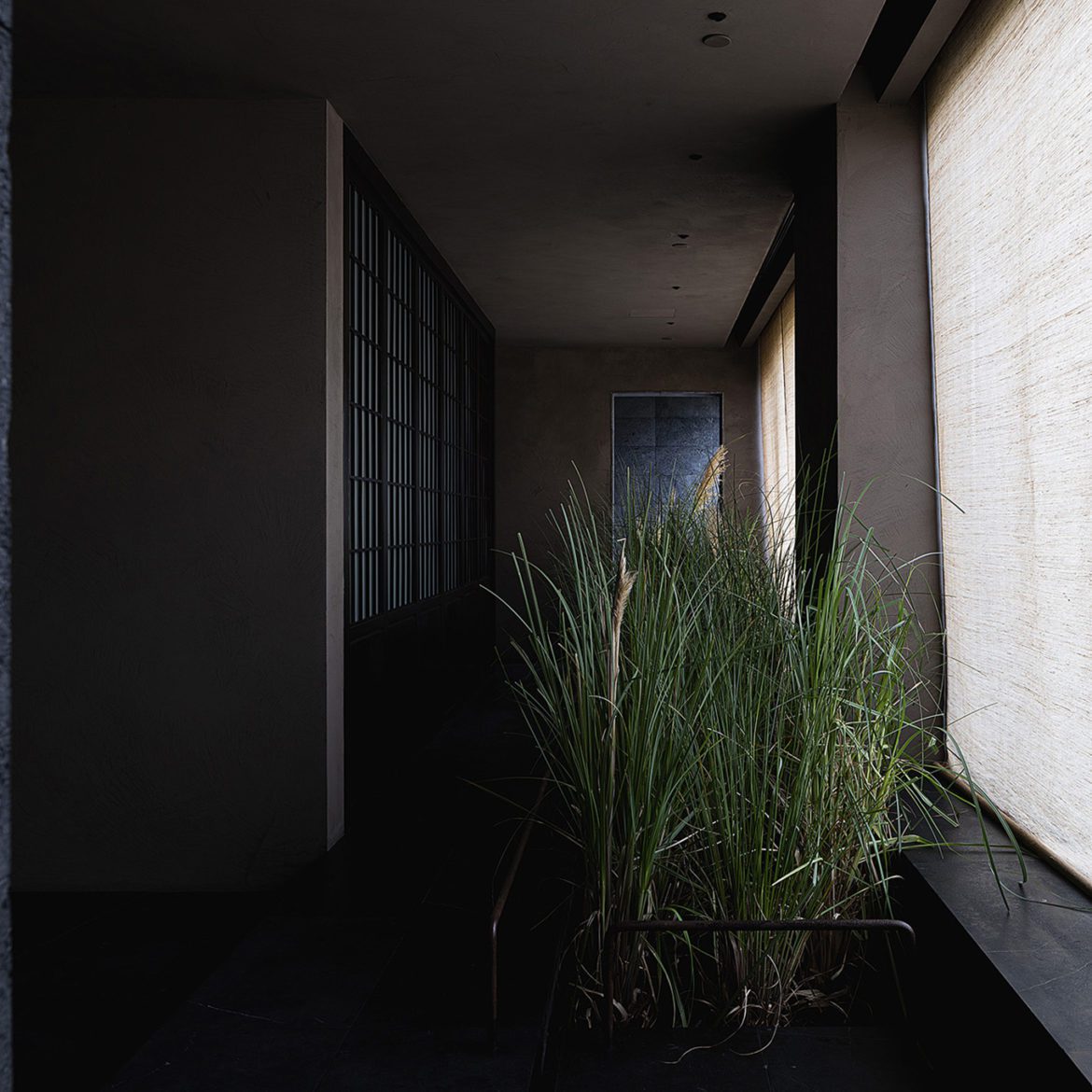
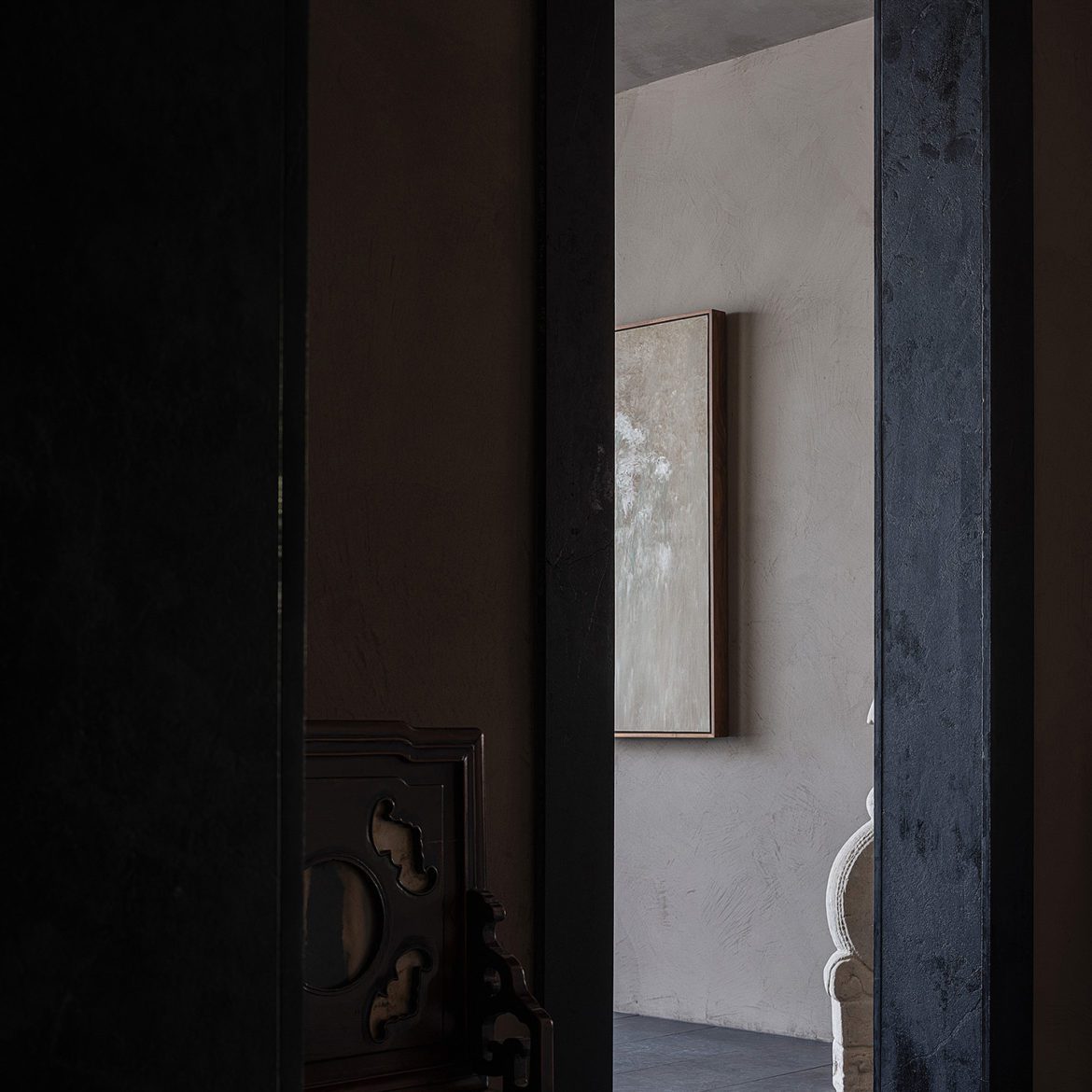
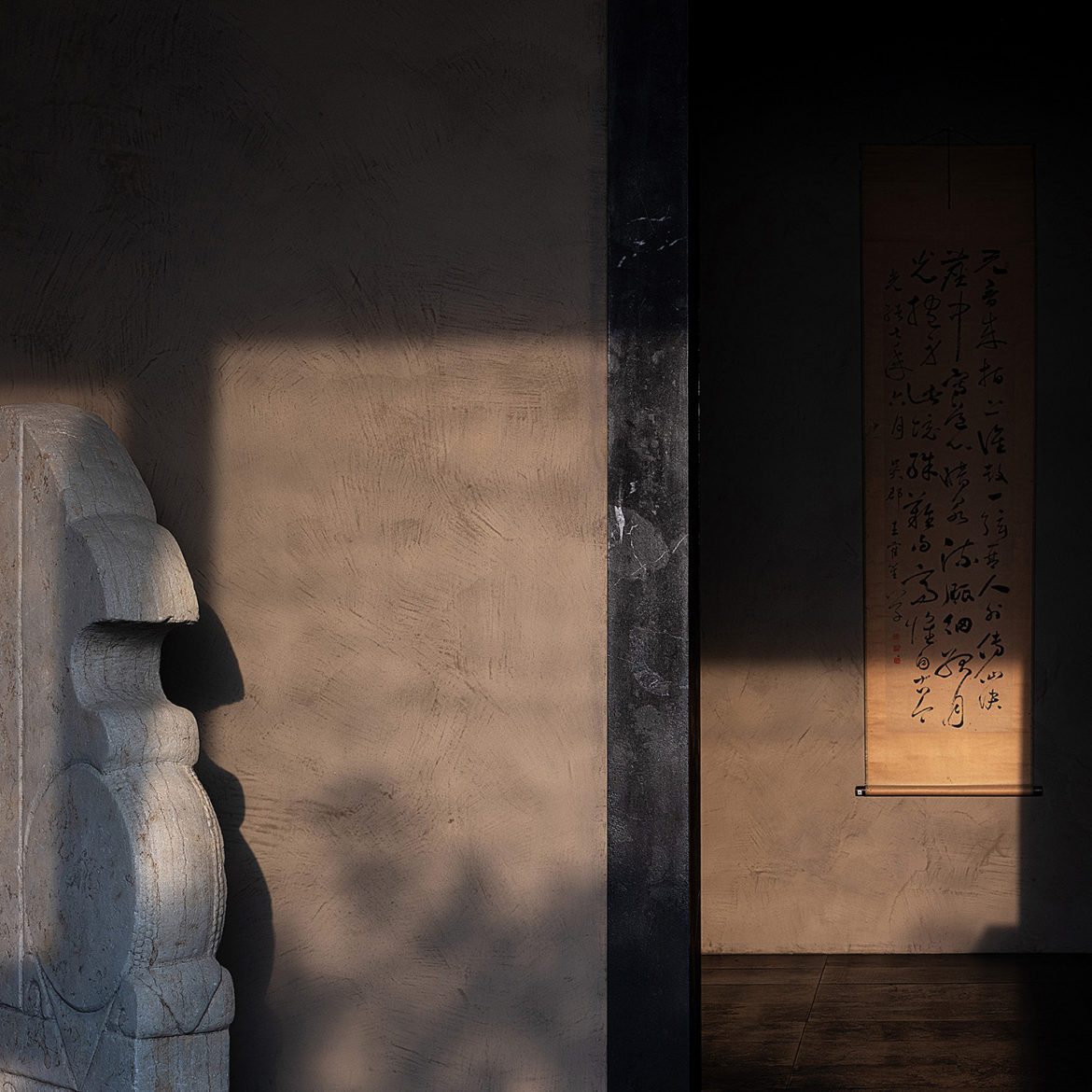
Grass planted beside the corridor is connected to the miniature waterscape at the entrance, which nourishes the greenery uninterruptedly. The water system is more than just stagnant water, but symbolizes a stream flowing through the ‘mountain’.
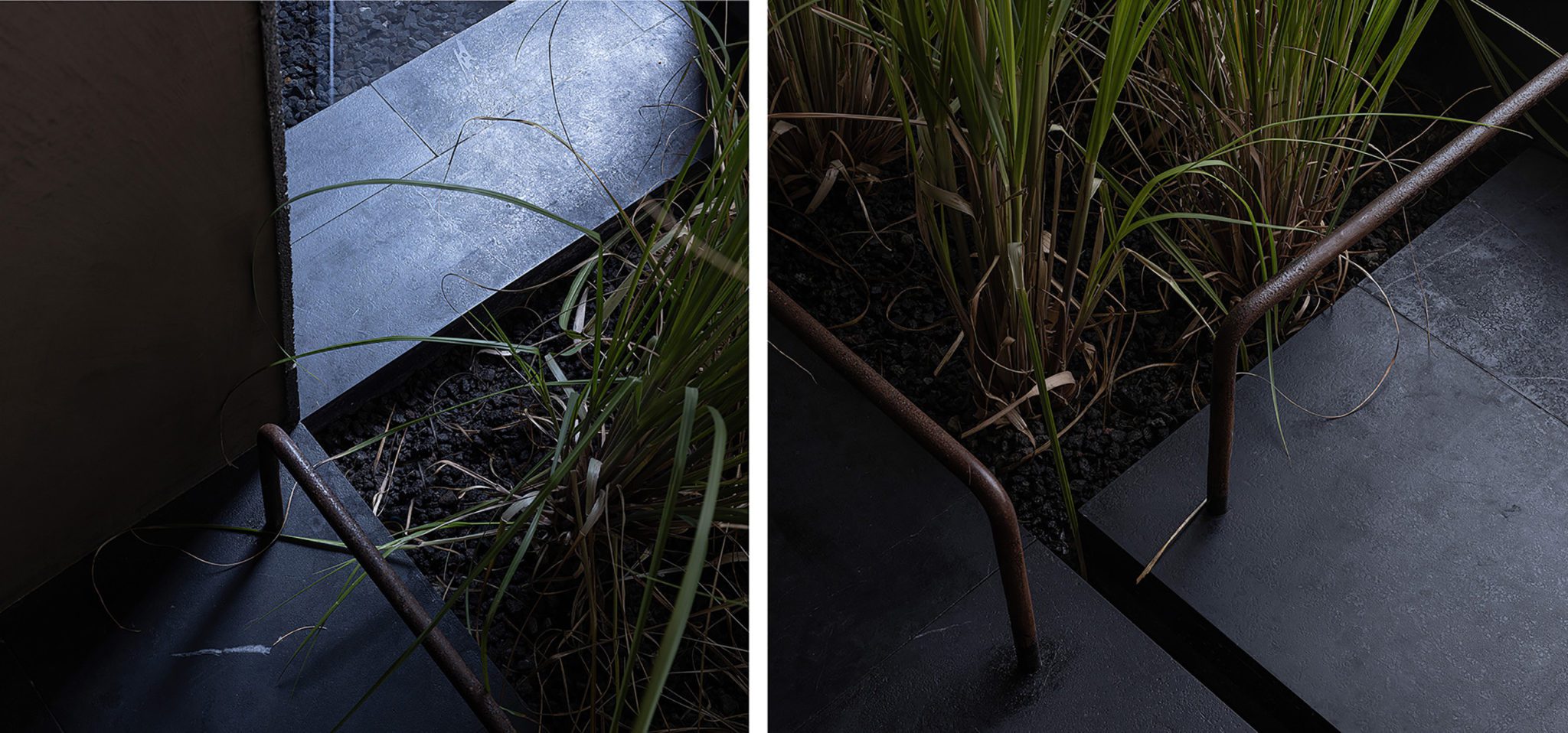
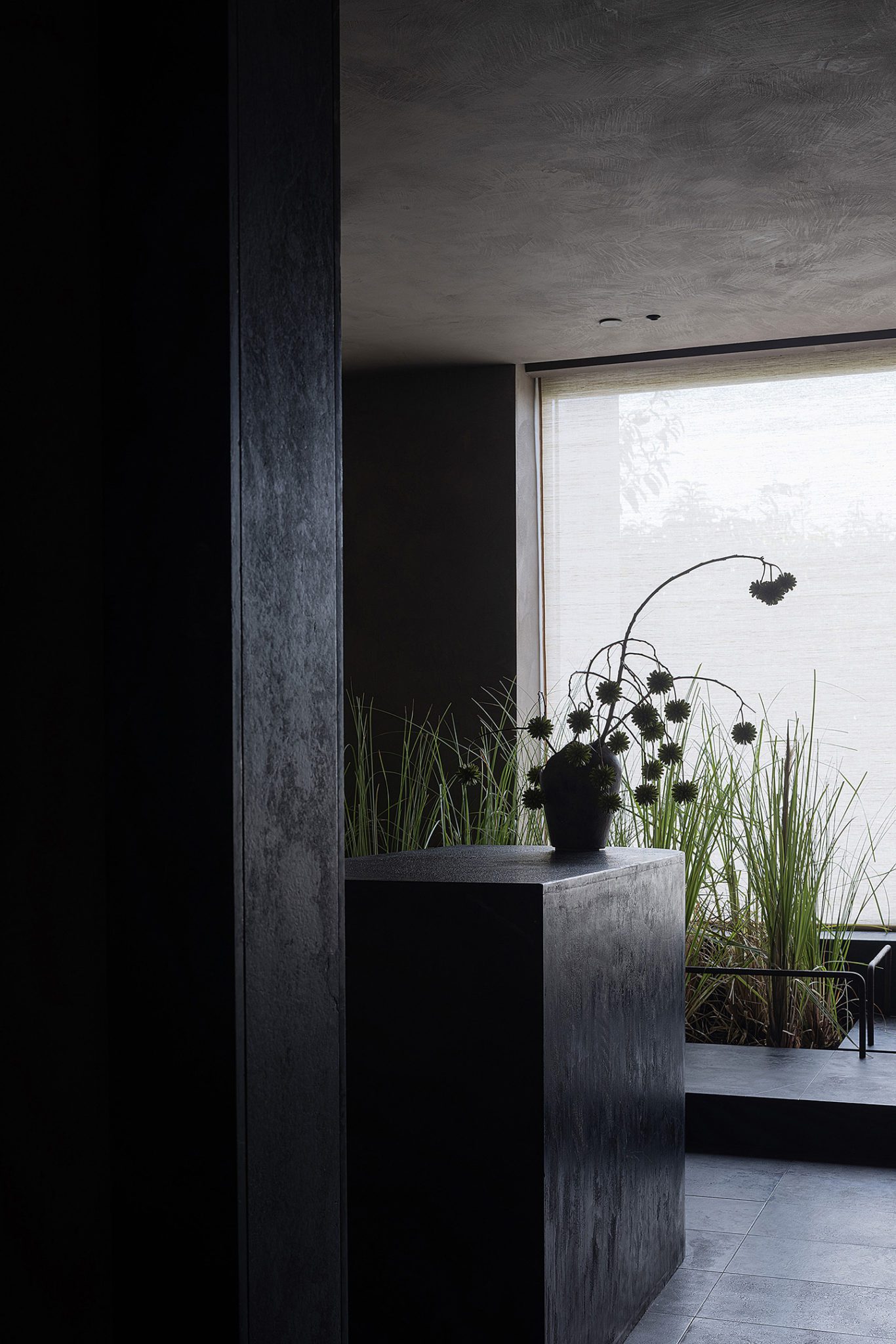
A dynamic rhythm is formed by the ‘clear pond’ and the ‘mountain stream’. The water system in the space bubbles up a fantastic experience.

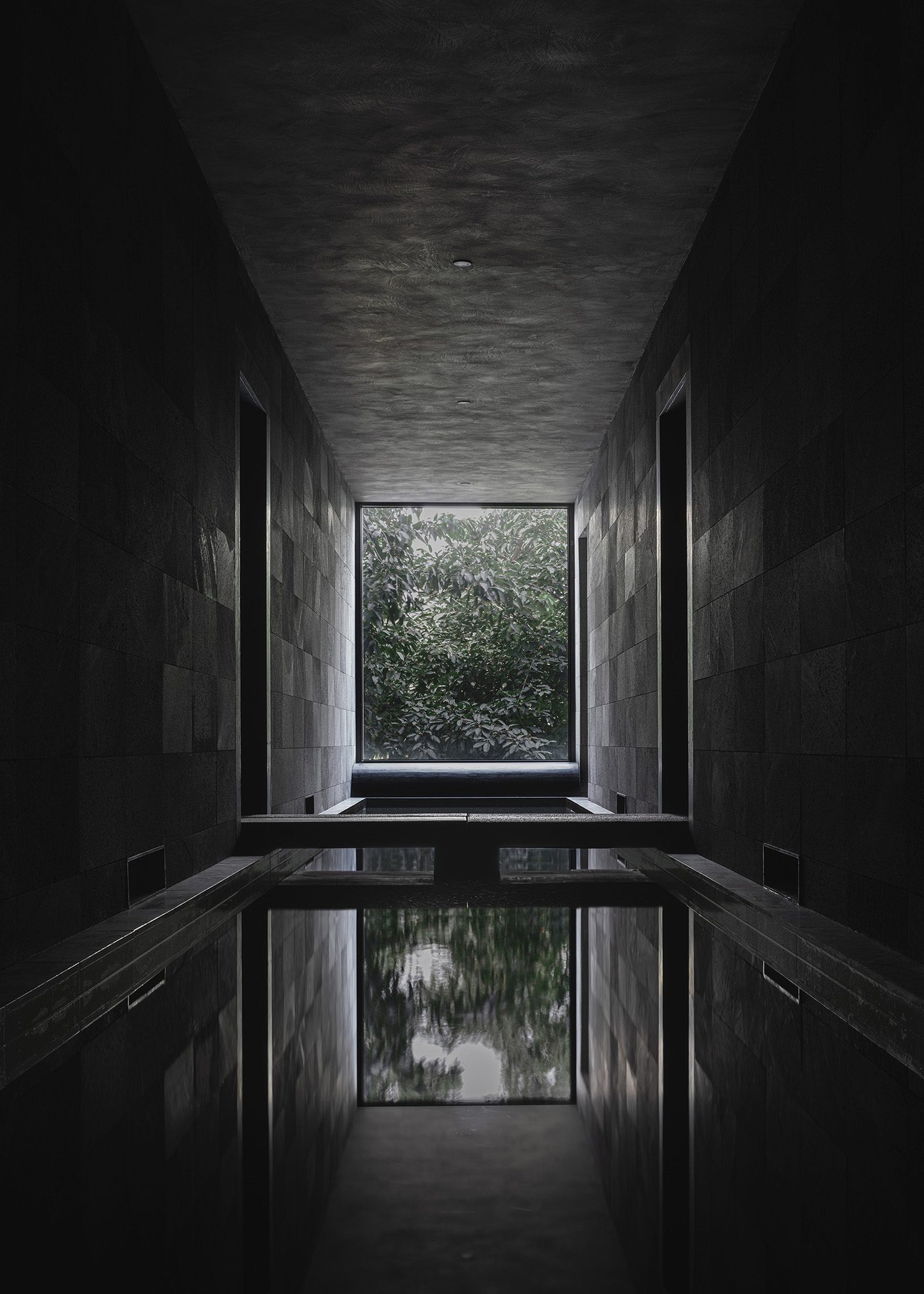
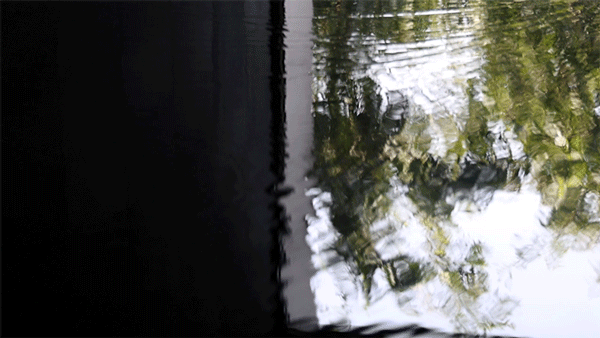
People, water, and scenery converge in the space, leaving behind the fast pace and restraint of daily life. Pacing about leisurely, the mind is stripped of burden and deeply calmed.
04 室Room
Confined to a room, but not confined by the heart.
Simplicity blends the ancient and the modern. Time produces elegance.

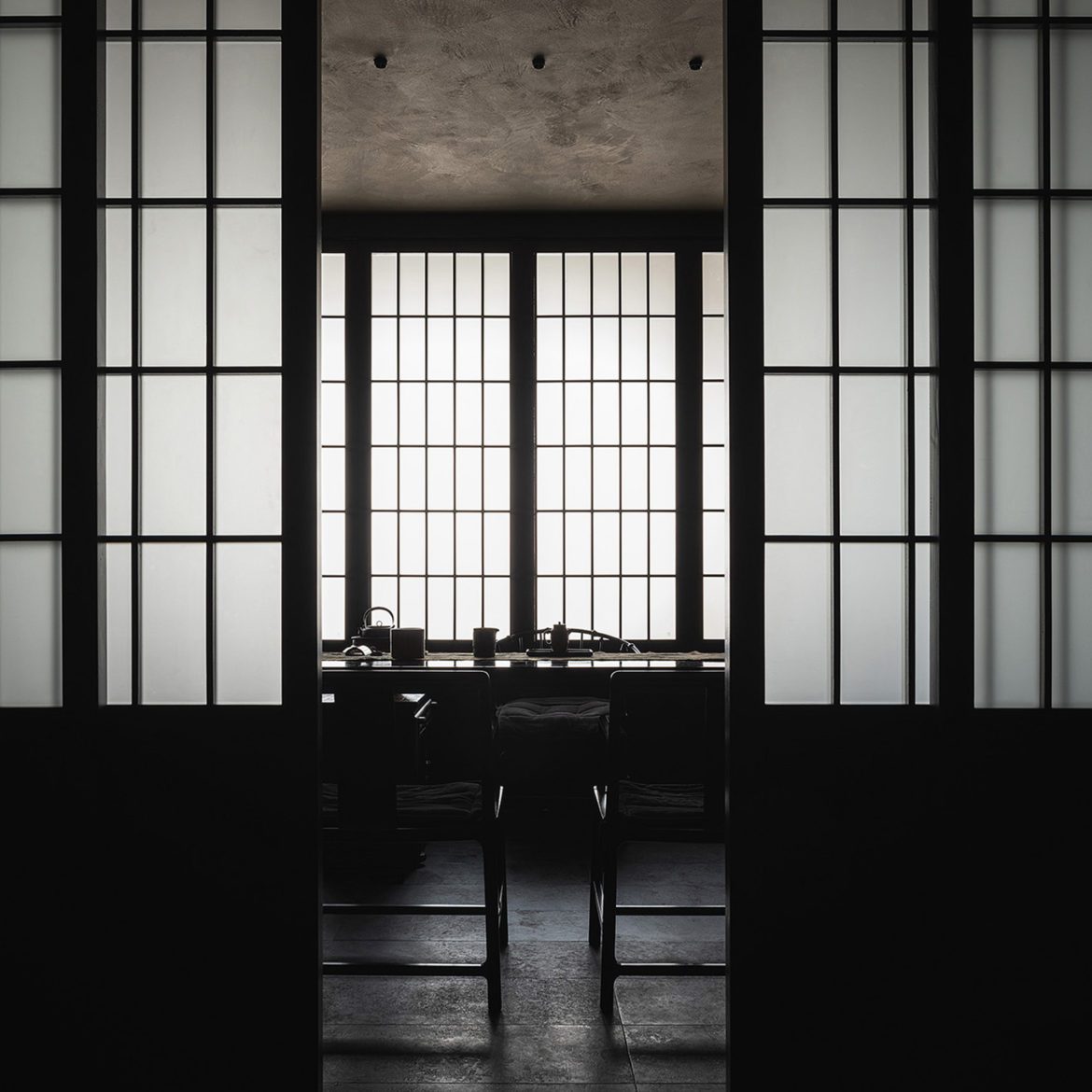
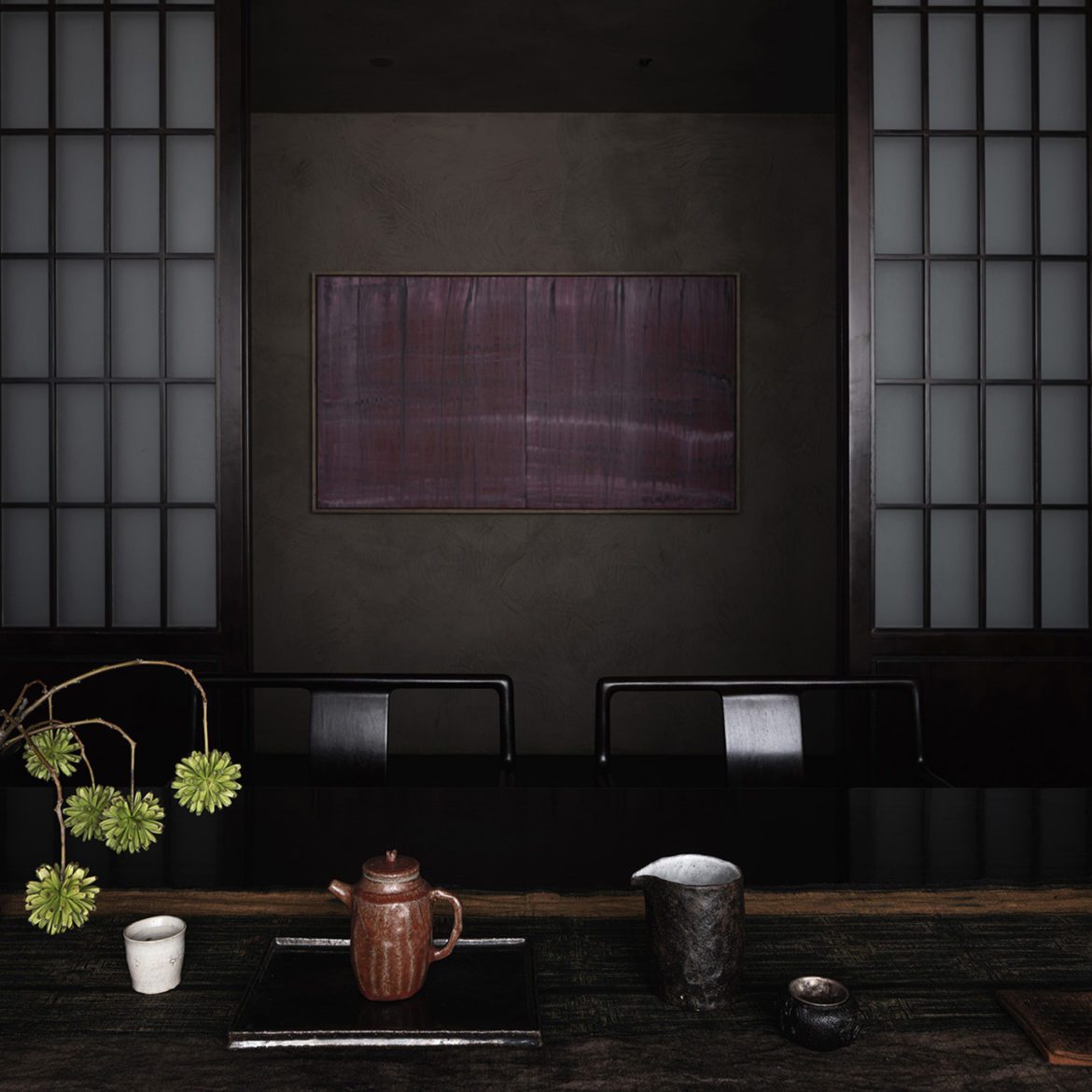
The four tea rooms on the second floor possess distinctive charm. The two traditional tea rooms are enclosed by antique-style wooden grille doors, featuring a strong sense of layering and a tranquil ambiance.
The tea room located on the circulation loop formed by corridors is like ‘a pavilion in the garden’. The shimmering light penetrating the grilles interacts with the shadows and grass, forming a charming scene without disturbing each other
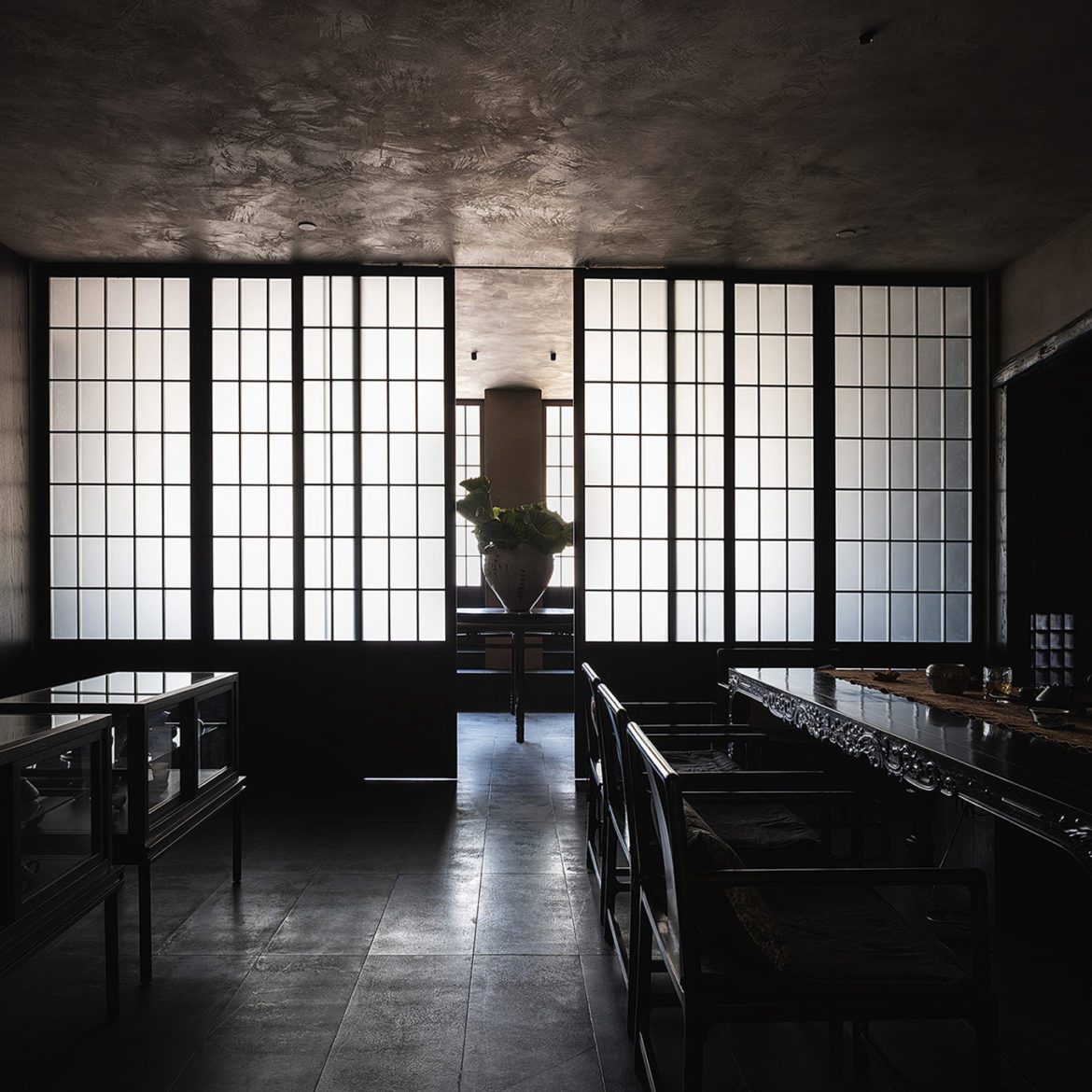
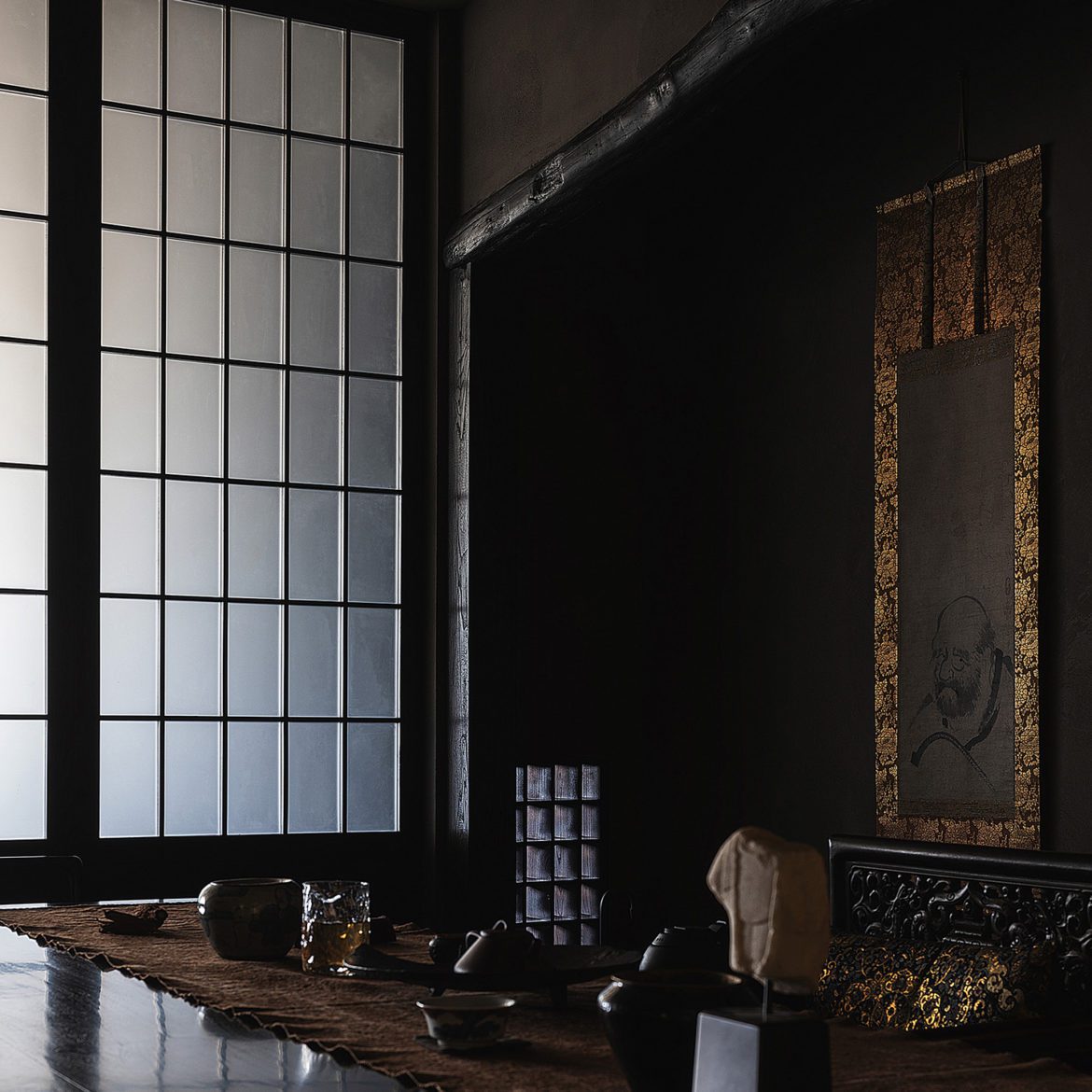
Another traditional tea room is connected to the courtyard, without any sophisticated decorations or eye-catching colors. The simplicity and purity leave the tea room to people, objects, and scenery.
The greenery and breeze of the courtyard enter the room through the door. With a solitary lamp, a collection of books, a ray of moonlight, and a cup of fragrant tea, the space invites people to sit and enjoy inner peace.
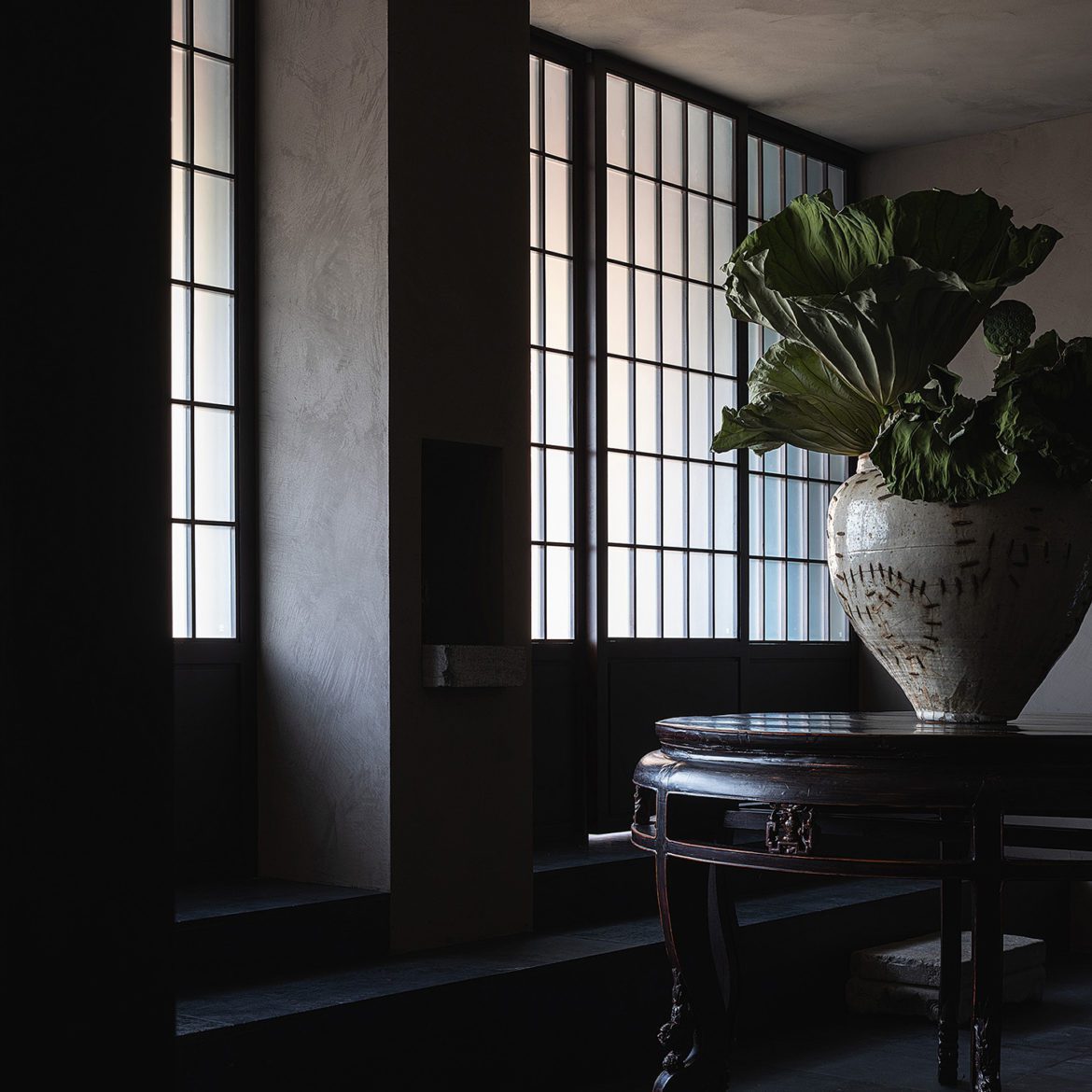

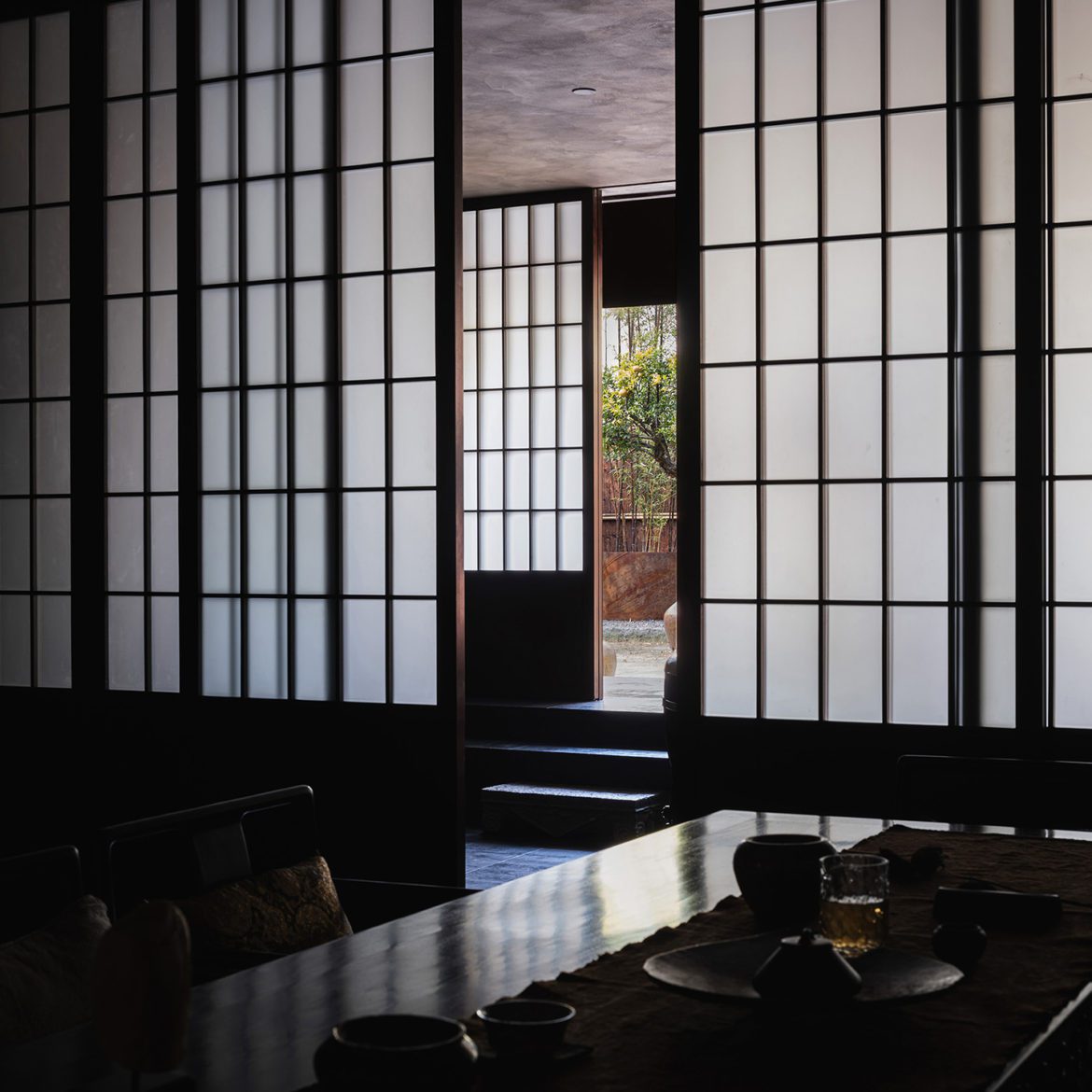
The paintings, furniture, antiques, collections, and tea in the room are mostly beloved possessions of the owner. The simple space gives way to showcase these pleasant and elegant objects and reproduces traditional aesthetics in a contemporary way.
With the passage of time, the furnishings of the tea room may change in accordance with the owner’s taste, but the quiet and simple tone of the space will remain unchanged, conveying the owner’s philosophy of life.
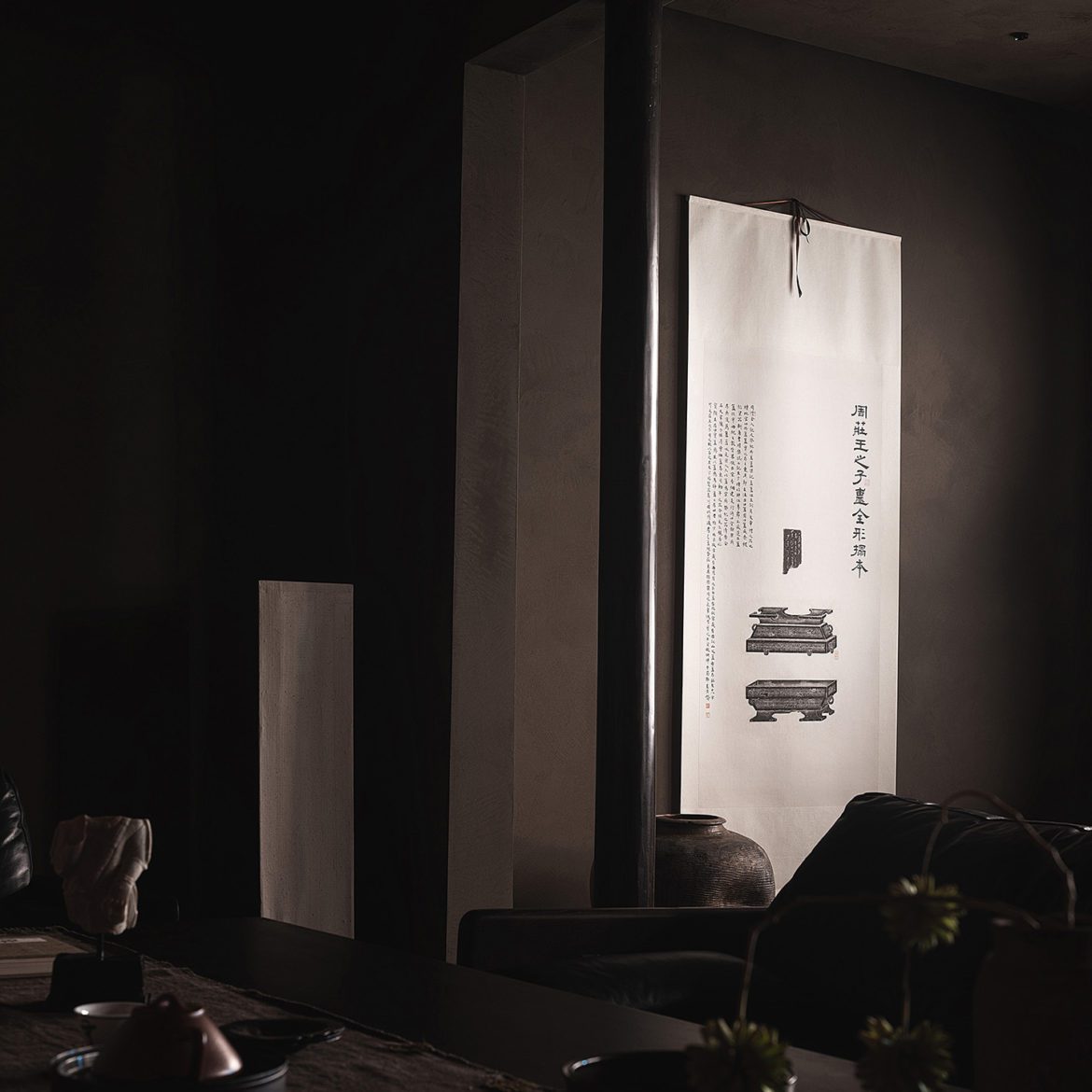
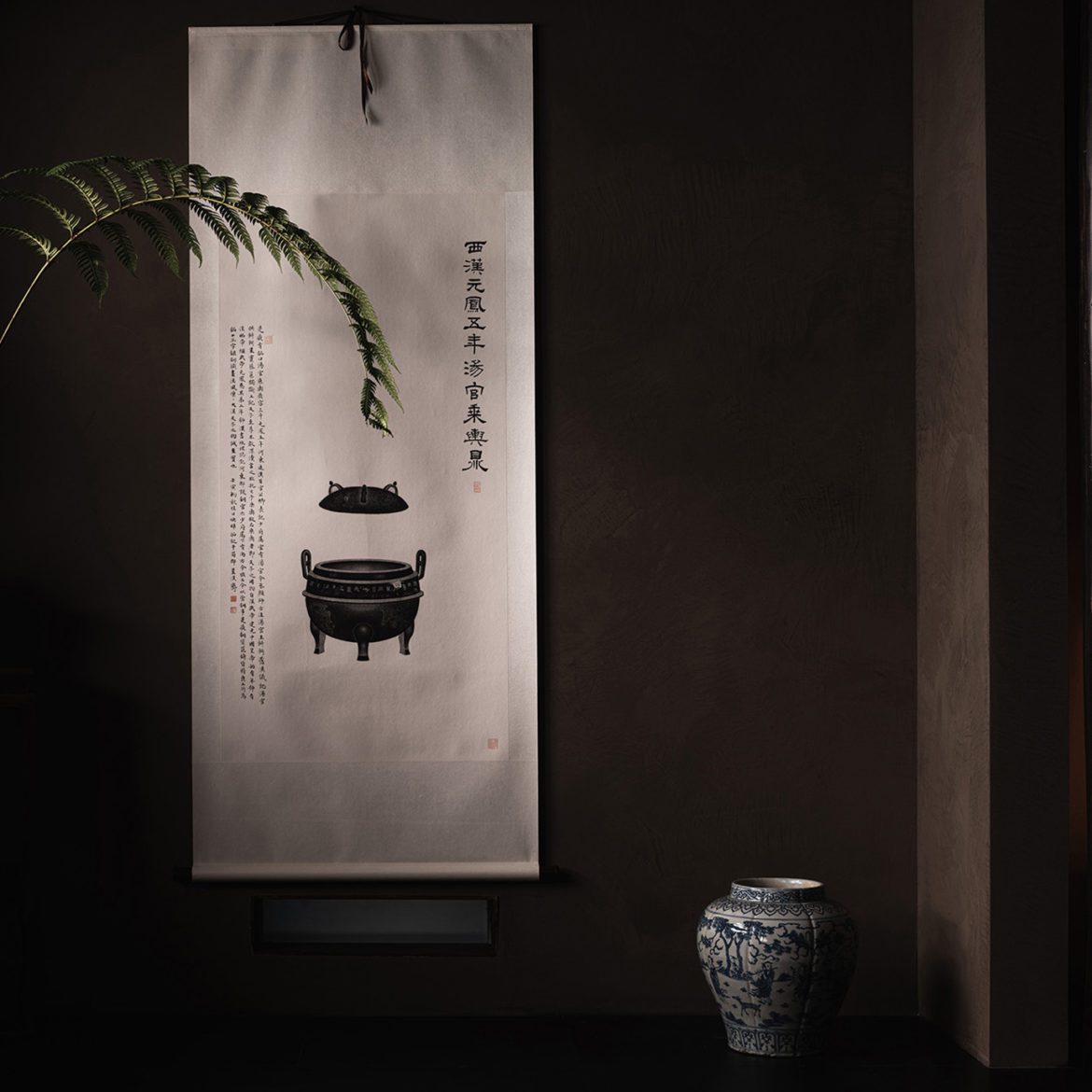
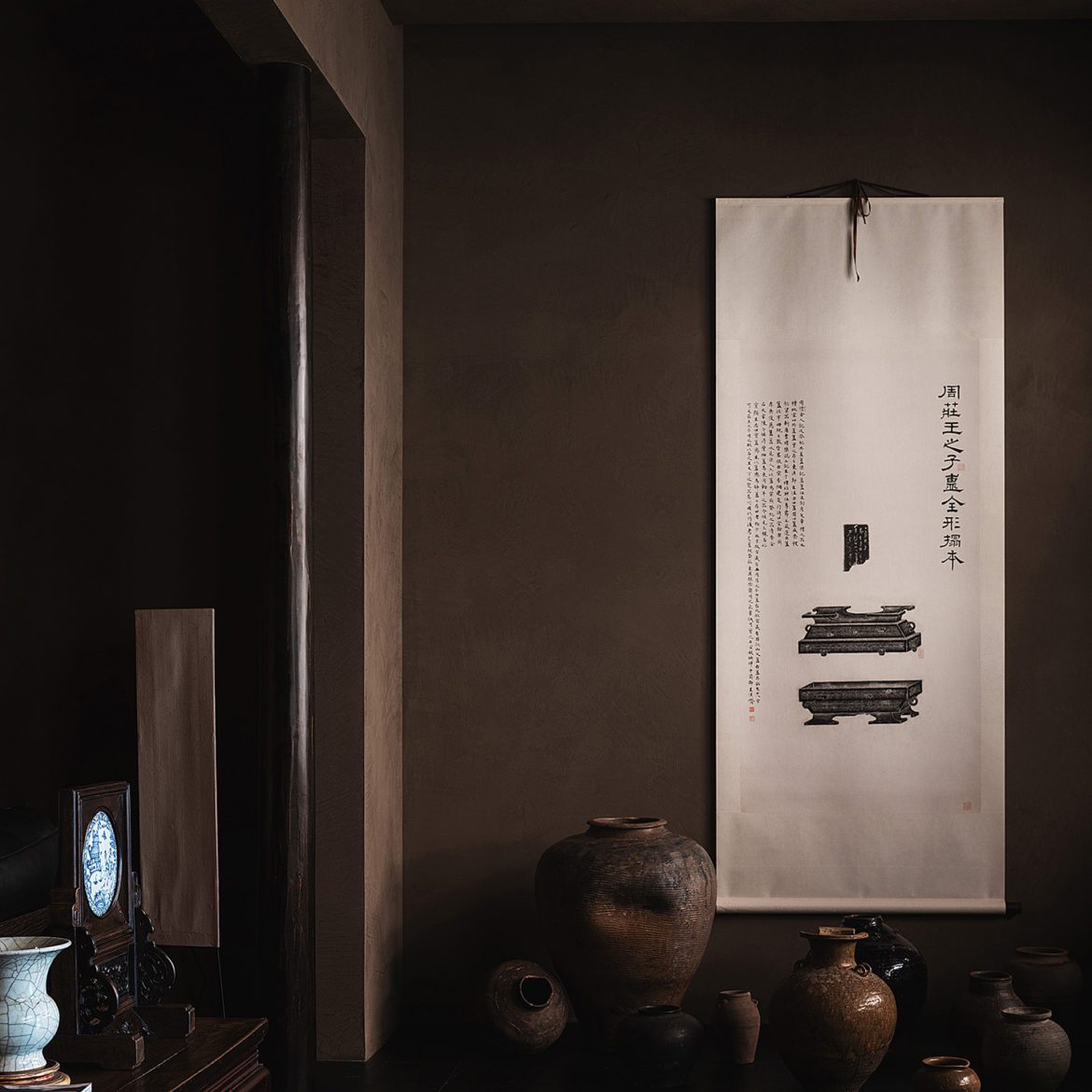
The activity of tea drinking has undoubtedly been enriched with new forms in contemporary times. In the other two tea rooms, the design team incorporated a contemporary lifestyle.
The classical tea table set by the window allows one to sit in front of it or to lie down and listen to the rain. This relaxing way of tea drinking is more adapted to contemporary people’s leisure preferences. Here, drinking tea is not only a traditional ritual but also a way of gaining inner tranquility and a relaxing experience of meeting and communicating with friends.
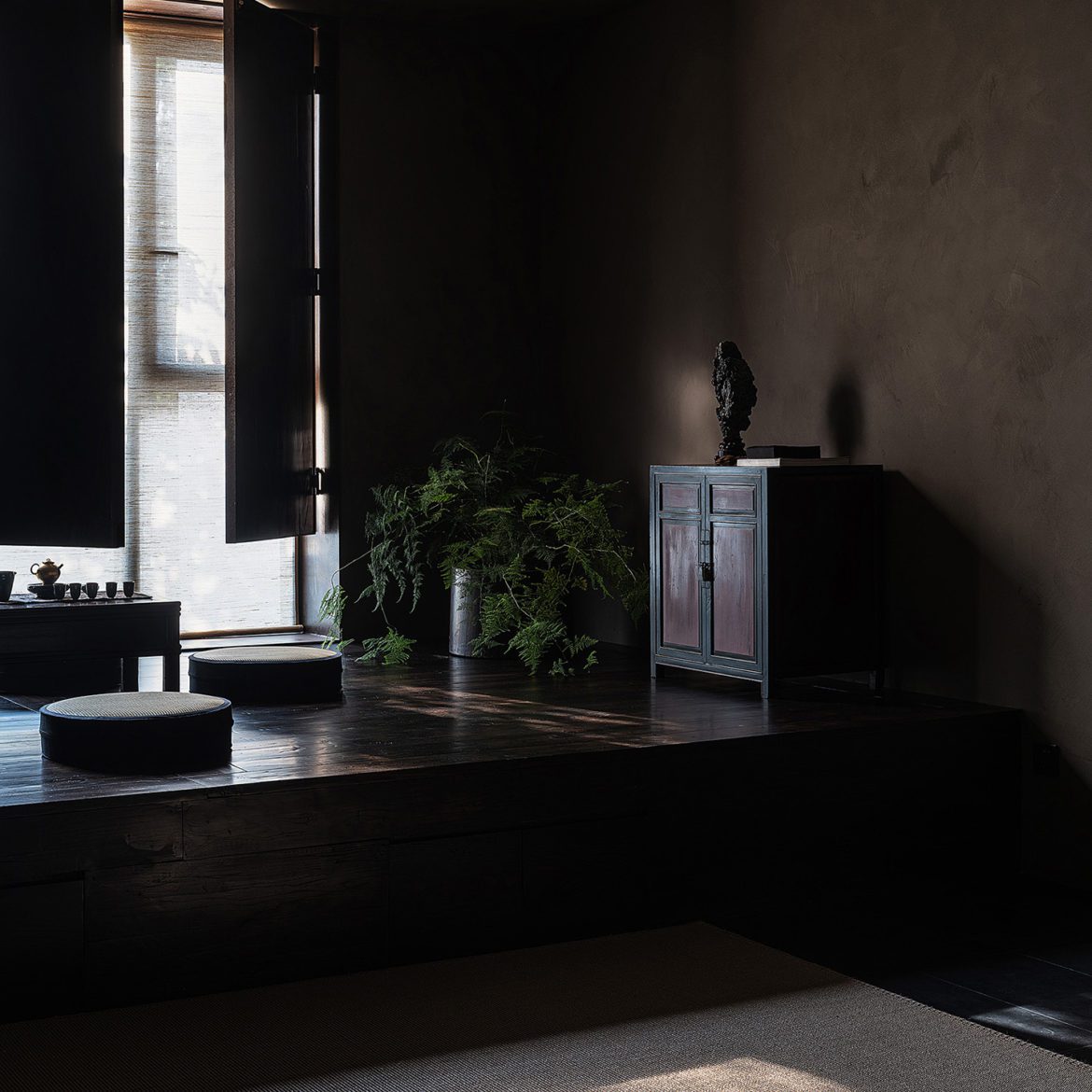


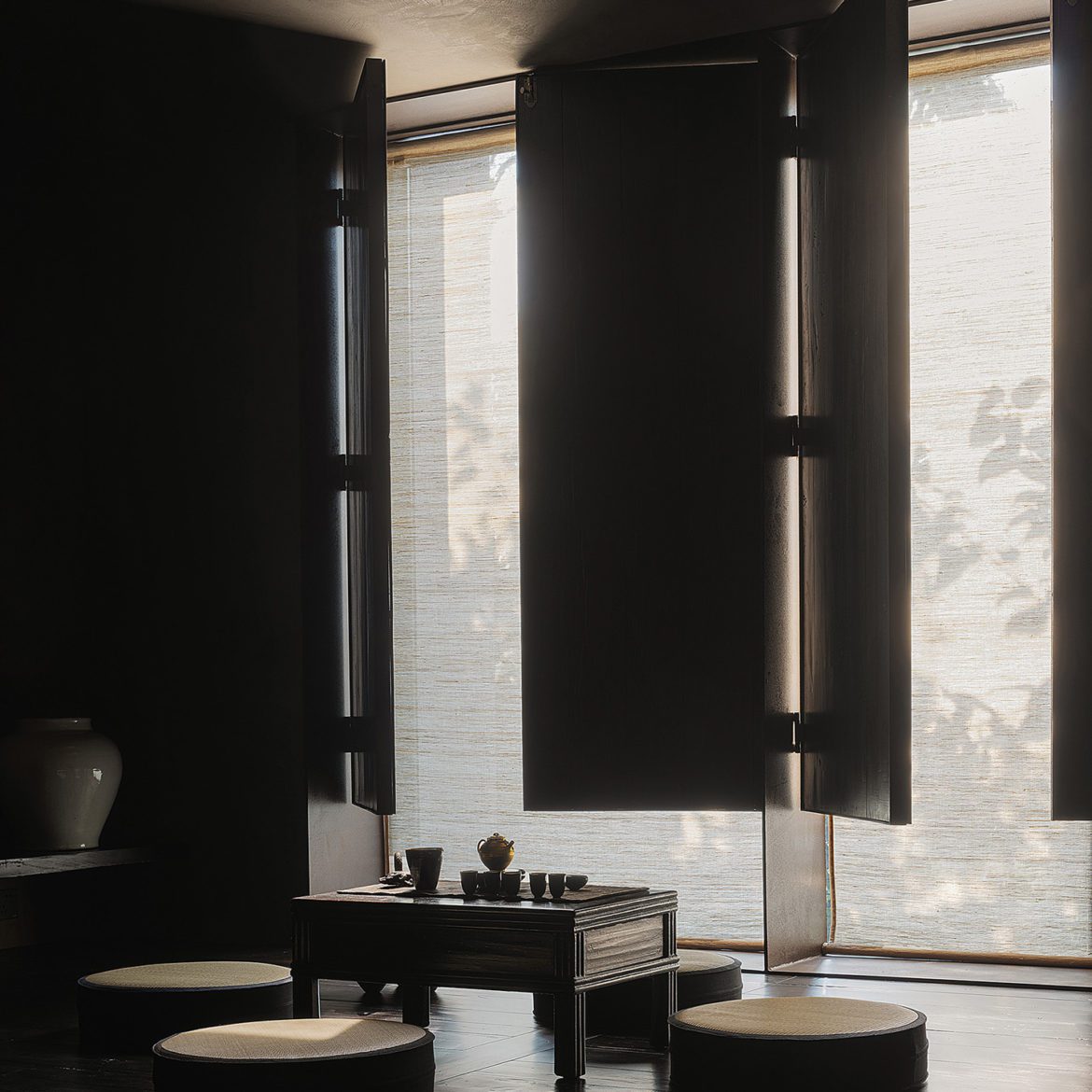
05 园Courtyard
Plant trees to build a courtyard, and attract birds to settle down.
Changing light and shadows in four seasons are collected in a small space.
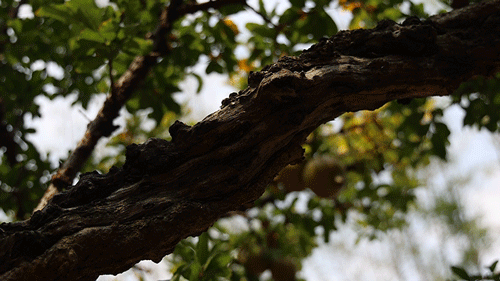
The courtyard connecting with the teahouse helps to bring nature into the interior space. It offers a venue for one to sit and meditate quietly or talk with others while sipping a cup of tea. It provides a rare natural view of the urban concrete jungle. The sunrise and moonlight, the lush plants, and the chirping of insects and birds calm the inner mind and obtain the harmonious coexistence between man and nature.
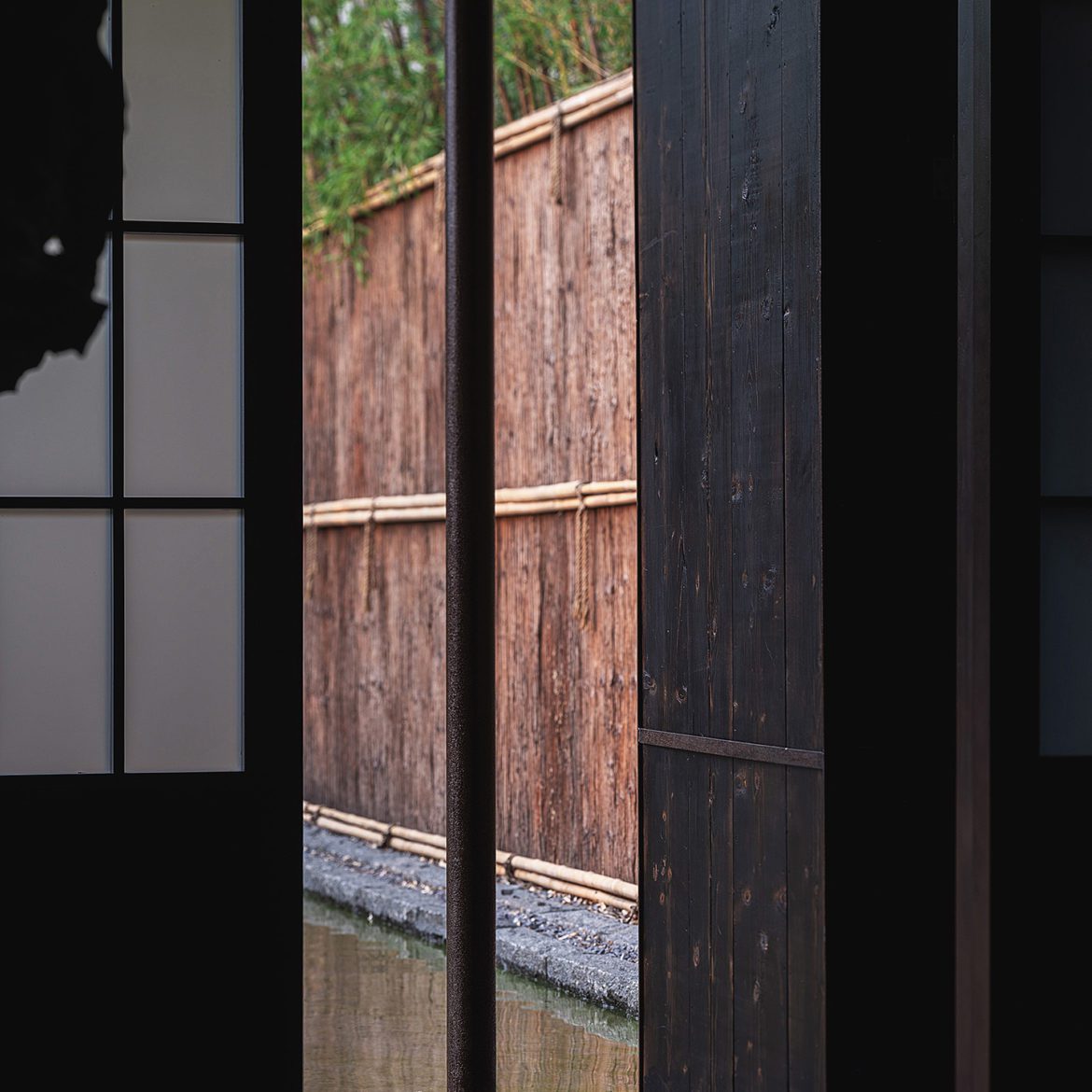
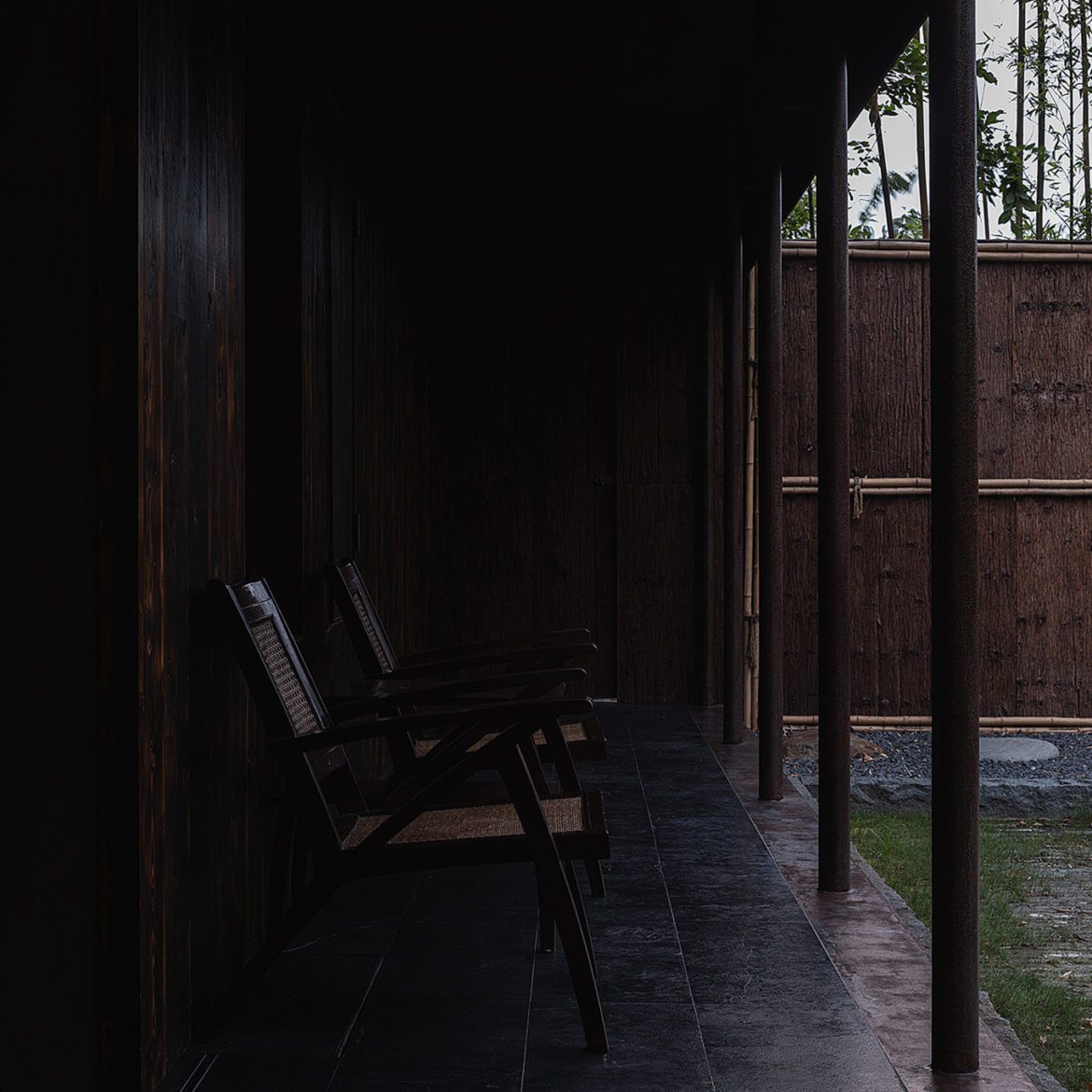
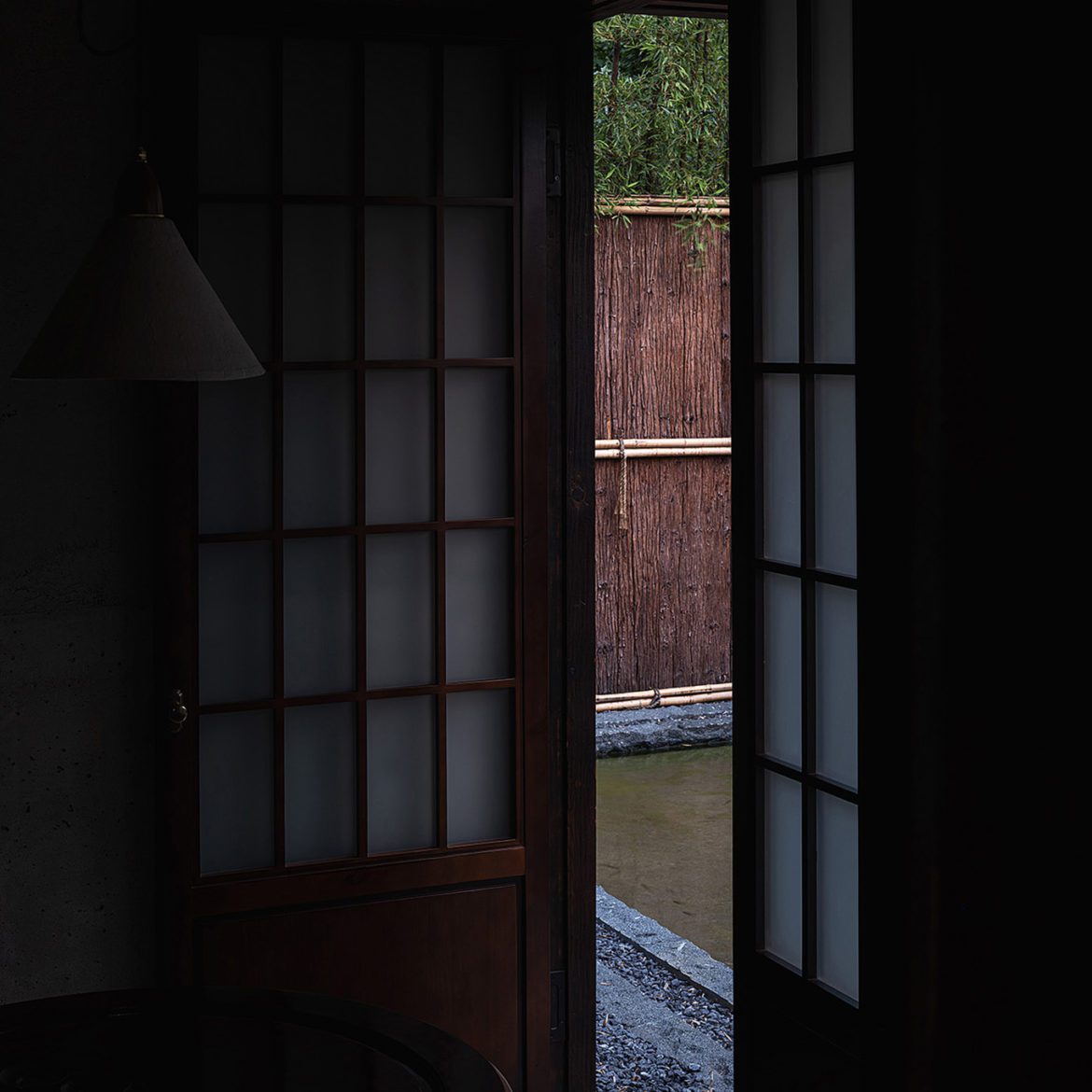
The tree, the waterscape, and the building structures produce a ‘boundless’ spatial atmosphere in the small courtyard.
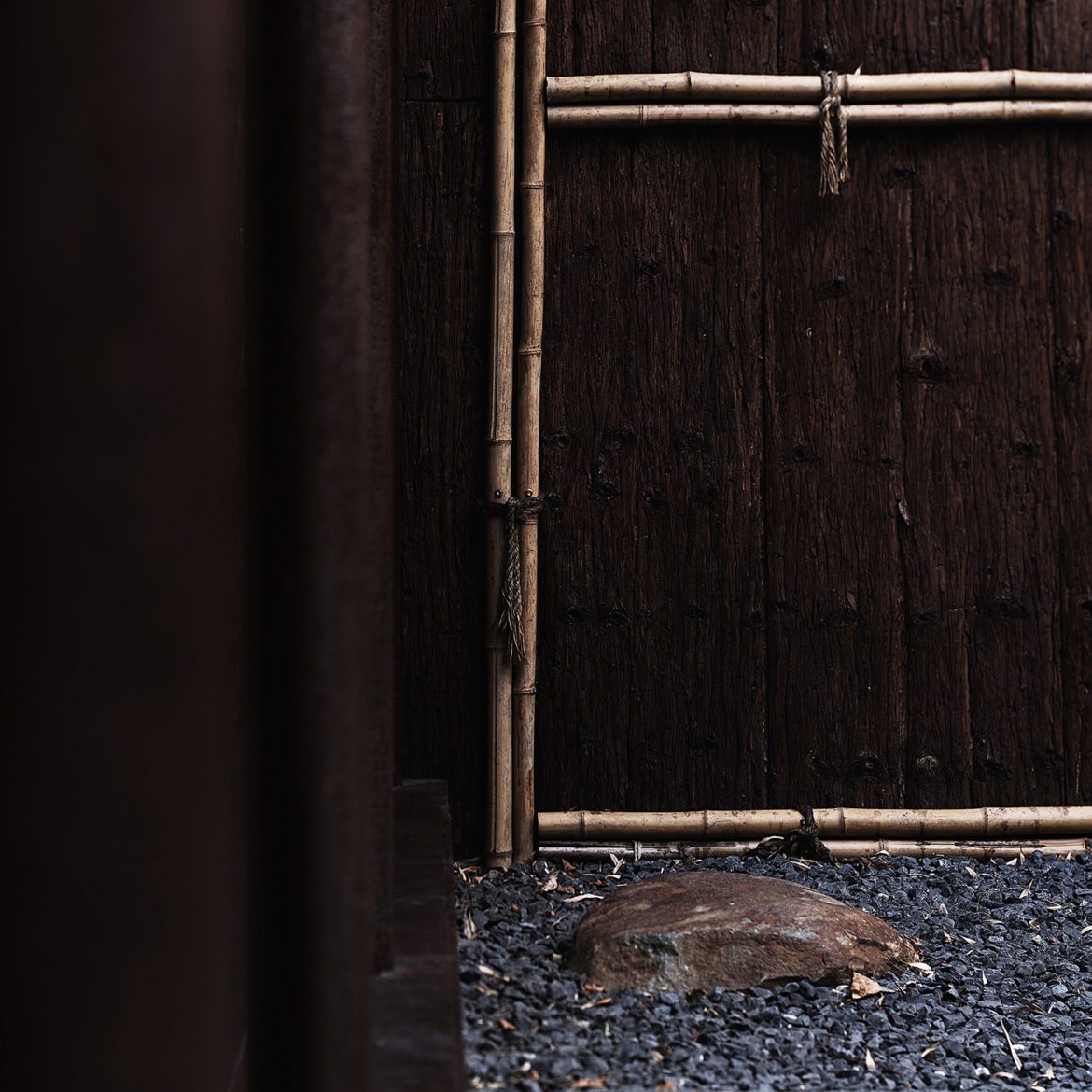
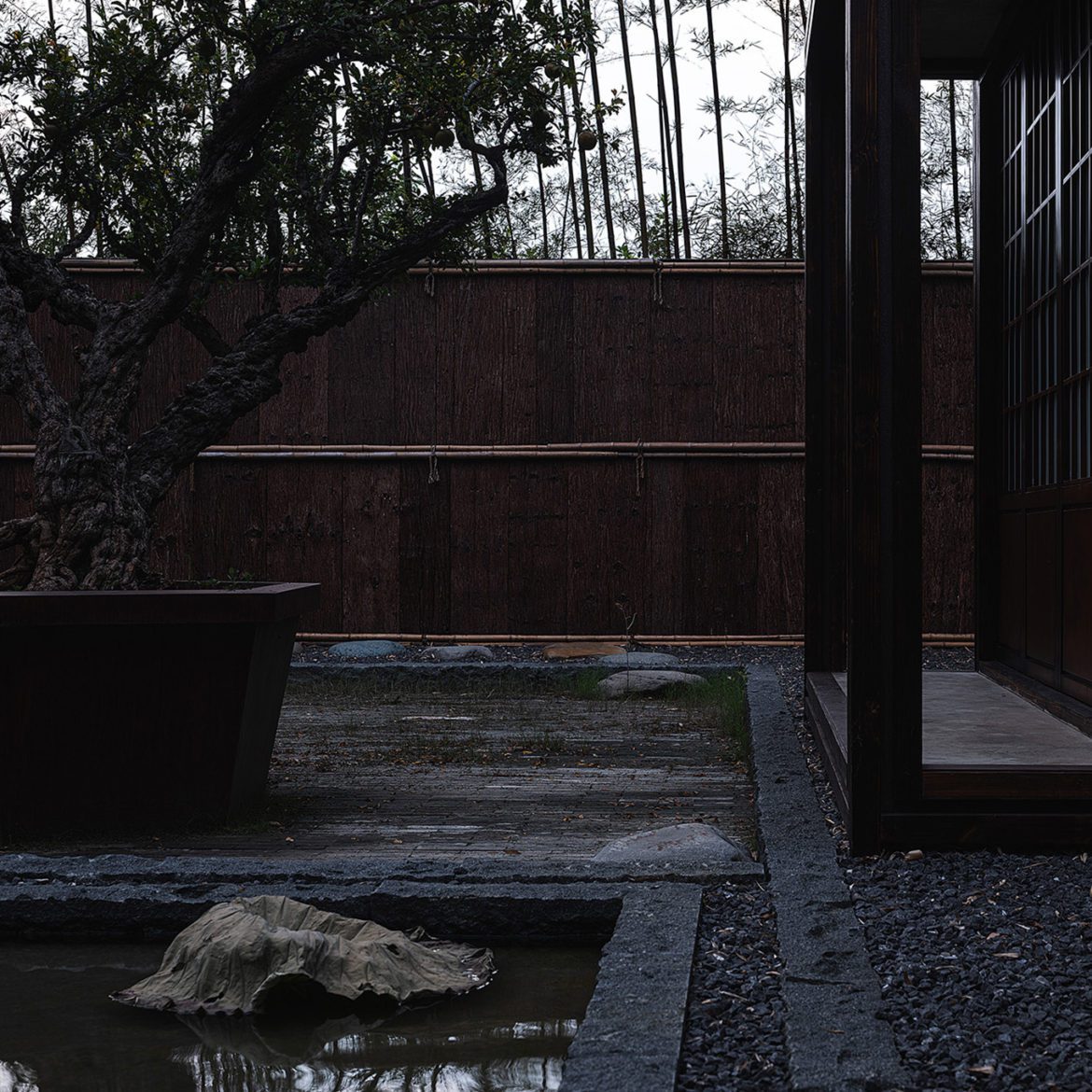

The courtyard is formed by plain materials such as bark, bamboo, elmwood, and stones, which will reveal a charming sense of antiquity as time passes.
Through the courtyard, the design is intended to expresses not only the dimension of the physical space but also the perspective of time. Our spiritual world changes over time, and our mood varies at every stage of life.
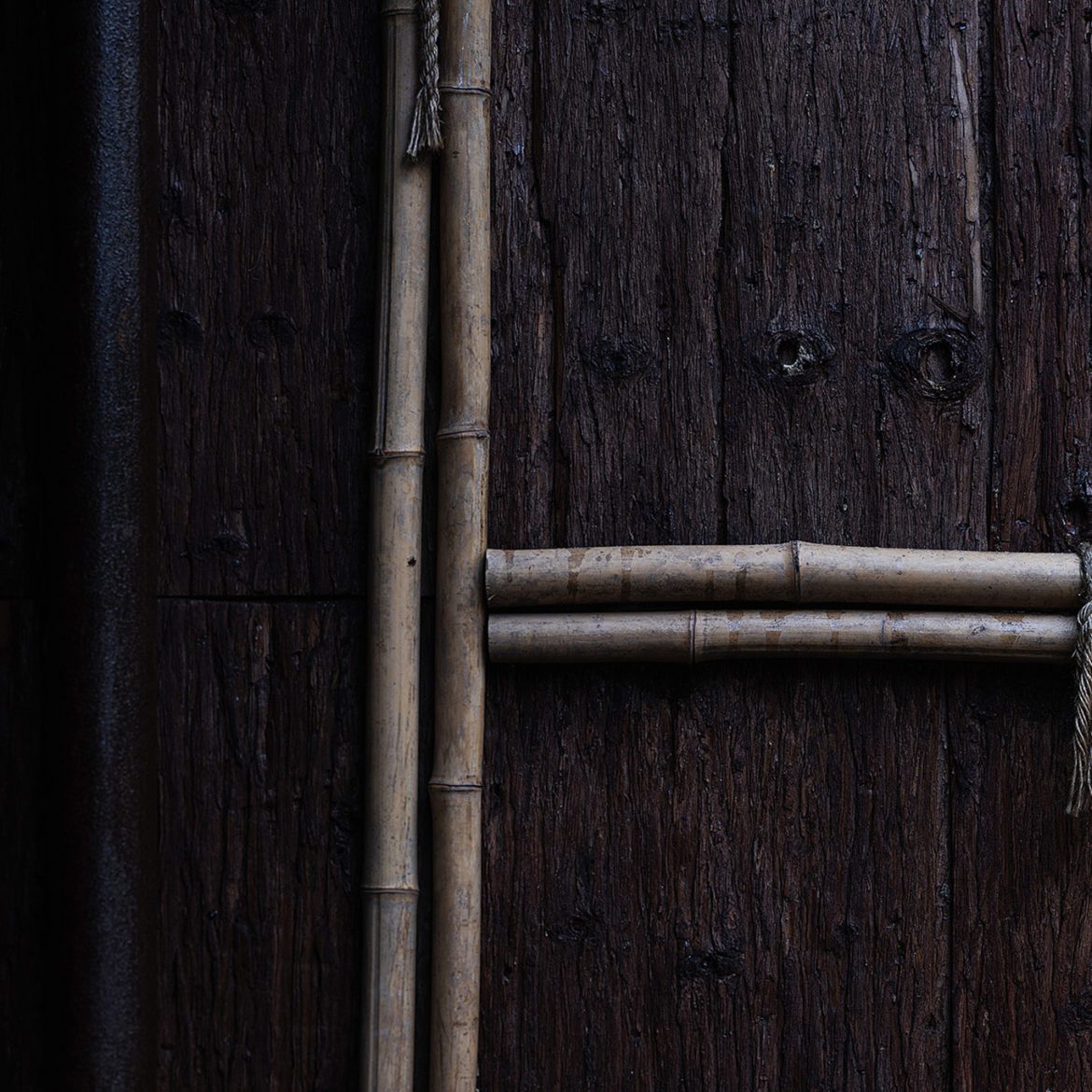


Isolated from the bustling outside world, the courtyard offers a calming, immersive experience that purifies the mind. People are able to experience nature and time in the courtyard, and mediate to obtain inner peace in the room.
The design team created a physical experience in the space through simple, restrained yet sensitive expressions. Doors, walls, rooms, and the courtyard are connected and combined to shape an exploratory spatial environment. Meanwhile, light, shadows, sky, earth, nature, and water endow the space with a spirit. With the sun rising and setting, flowers blooming, and leaves falling, people can feel the passage of time here and experience a contemporary Oriental lifestyle. By creating a ‘secluded mountain’, the space provides a spiritual retreat.

About the designers:
Founded in 2021, Scene Architect is rooted in Oriental genes. The studio approaches design by combining architecture, art, and fashion, and works to break with conventions while inheriting the quintessence of traditions, to create a holistic aesthetic experience. We image scenes based on the site’s conditions and emphasize a tactile experience. While basing our design practices on the present, we keep exploring the essence of traditions.
The project description is provided by the designers.
